- Corrections

What Makes Art Valuable?
Why do people buy art? An even bigger question is, why do people pay tens of millions of dollars to own art?
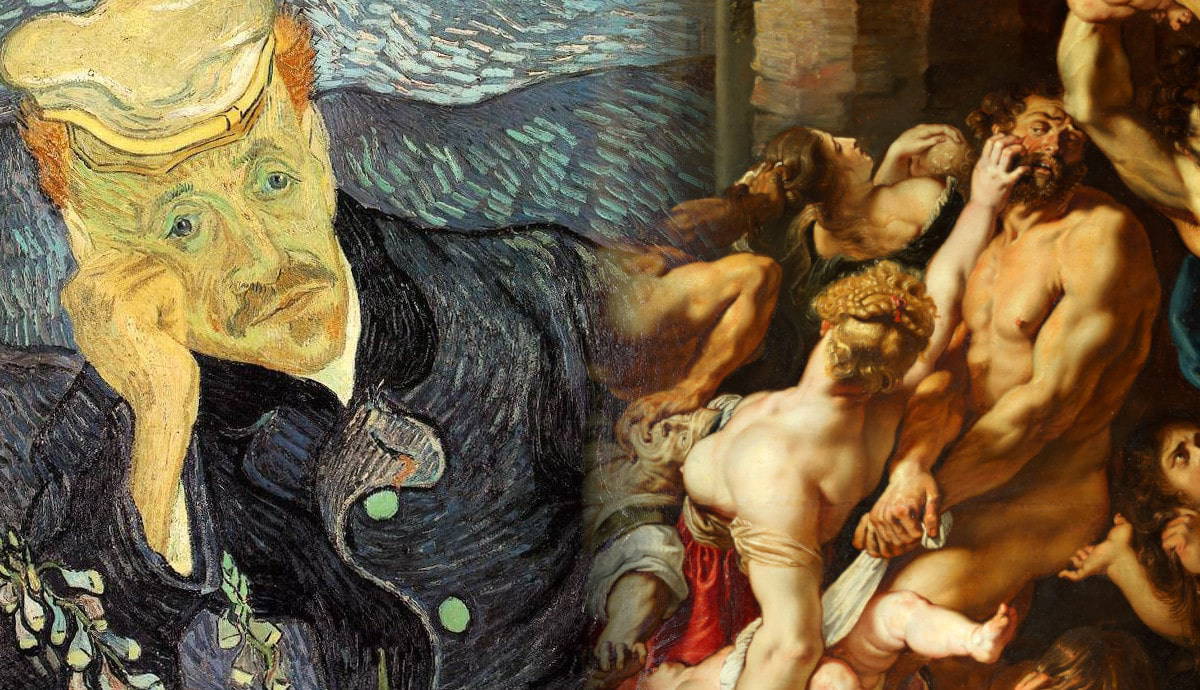
Some ask, why does it matter? Is it for status, prestige, and approval from peers? Do they genuinely admire the piece? Are they trying to show off? Are they simply hungry for all things luxurious? Is it for love? An investment? One thing to remember is that value isn’t only linked to its artist quality and, at the bare minimum, it’s interesting to explore what makes art valuable.

In the art world, an artwork’s value can be attributed to provenance. In other words, who has owned the painting in the past. For example, Mark Rothko ’s White Center was owned by the Rockefeller family, one of America’s most powerful dynasties.
Rothko’s masterpiece went from a value of less than $10,000 when David Rockefeller first owned it, to upwards of $72 million when it was later sold by Sotheby’s. This painting was even known colloquially as the “Rockefeller Rothko.”
“All kinds of things converge for a painting to bring that sum of money, such as its provenance,” said Arne Glimcher, art dealer and friend of Rothko in an interview with BBC. “The whole thing [about] art and money is ridiculous. The value of a painting at auction is not necessarily the value of the painting. It’s the value of two people bidding against each other because they really want the painting.”
Attribution
Get the latest articles delivered to your inbox, please check your inbox to activate your subscription.

Old masterpieces are seldom sold as they are typically kept in museums, never again to change hands between private owners. Yet, the sale of these masterpieces happens now and then as did with Peter Paul Rubens ’ Massacre of the Innocents .
Rubens is considered one of the greatest painters of all time and it’s undeniable that this piece of art has technical value, insofar as the emotion, finesse, and composition is all remarkable.
But it wasn’t until recently that the Massacre of the Innocents was attributed to Rubens at all and beforehand, it went largely unnoticed. When it was identified as a Rubens, however, the value of the painting skyrocketed overnight, proving that when attributed to a famous artist, people’s perception of the artwork changes and the value goes up.
The Thrill of Auction
The salerooms at Christie’s or Sotheby’s are filled with billionaires – or better yet, their advisors. An obscene amount of money is on the line and the whole ordeal is a buzzing spectacle.
Auctioneers are skilled salesmen who help raise those prices up and up and up. They know when to bump up a lot and when to slightly tip the scales. They’re running the show and it’s their job to make sure the highest bidder has a shot and that values soar.
And they’re playing to the right audience because if one knows anything about wealthy businessmen who often find themselves in an auction house, part of the thrill is winning.
BBC also spoke to Christophe Burge, legendary auctioneer at Christie’s who described the prolonged cheering that ensued after the, then record-breaking sale of Portrait of Dr. Gachet by Vincent van Gogh .
“There was sustained applause, people leapt to their feet, people cheered and yelled. This applause went on for several minutes which is completely unheard of. The reason everybody applauded, I believe, is because we had a very serious financial situation developing in 1990. The Japanese buyers who had been the mainstay of the market were beginning to get nervous and were pulling out and everybody was convinced that the market was going to tumble.

“I think what everybody was applauding was either relief that they had saved their money. They weren’t applauding for van Gogh. They weren’t applauding for the work of art. But they were applauding for money.”
So, if you think about it, as the auctioneer steers prices up and billionaires get swept away in the thrill of a bidding war, it makes sense that, as these artworks get sold and re-sold, their value continues to change, usually going up.
Historical Significance
Historical significance works in a couple of ways when it comes to determining the value of art.
Firstly, you can consider the piece in terms of its importance to art history in its genre. For example, a painting by Claude Monet is worth more than other more recent impressionist work since Monet changed the canon of art history and impressionism as a whole.
World history also affects the value of art. After all, art is often a reflection of the culture of its time and as it became a commodity, art was affected by political and historical changes. Let’s explore this concept.
Russian oligarchs have become high bidders at art auctions as of late. Often incredibly private people, millions of dollars change hands in order own some of the most beautiful works of art. And while, sure, this could be a power play insofar as earned esteem from their closest peers, but it also indicates some historical significance.
When Russia was the Soviet Union and operated under communism, people weren’t allowed to own private property. They didn’t even have bank accounts. These oligarchs are newly allowed to own property after the communist regime fell apart and are looking to art as a way to take advantage of this opportunity.
It doesn’t have much to do with the art pieces themselves, but the fact that they have money that they can spend as they please, it’s obvious that changes in politics have a historical effect on the value of art to different people.

Another example of historical significance affecting art value is a notion of restitution.
Adele Bloch-Bauer II by Austrian painter Gustav Klimt was stolen by the Nazis during World War II. After going through a few legal hoops, it was eventually returned to a descendant of its original owner before it was sold at auction.
Due to its interesting story and historical significance on a global scale, Adele Bloch-Bauer II became the fourth-highest priced painting of its time and sold for almost $88 million. Oprah Winfrey owned the piece at one time and now the owner is unknown.
Social Status
In the earliest years of art history as we know it today, artists were commissioned by royalty or religious institutions. Private sales and auctions came much later and now it’s clear that high art is the ultimate luxury commodity with some artists now becoming brands in and of themselves.
Take Pablo Picasso , the Spanish painter from the 1950s. Steve Wynn, a billionaire property developer who owns much of the extravagant Las Vegas strip amassed quite the collection of Picassos. Seemingly, more as a status symbol than for any real admiration for the artist’s work since Picasso, as a brand, is known as the artist beyond some of the world’s most expensive pieces of all time.
To exemplify this assumption, Wynn opened an elite restaurant, Picasso where Picasso’s artwork hangs on the walls, each likely costing more than $10,000 each. In Vegas, a city obsessed with money, it seems painfully obvious that most people eating at Picasso aren’t art history majors. Instead, they feel elevated and important at the mere fact of being among such expensive art.
Later, to buy his Wynn hotel, Wynn sold most of his Picasso pieces. All but one called Le Reve which lost value after he accidentally put a hole in the canvas with his elbow.
So, people indeed spend money on art to gain social status and feel luxurious everywhere they turn. Art then becomes an investment and values continue to increase as more billionaires covet their ownership.
Love and Passion

On the other hand, while some are making business investments and gaining prestige, others are willing to pay huge sums of money for a work of art simply because they fall in love with the piece.
Before Wynn owned his collection of Picassos, most of them were owned by Victor and Sally Ganz. They were a young couple married in 1941 and a year later bought their first piece of art, Le Reve by Picasso. It cost the equivalent of more than two years’ rent and began the couple’s long love affair with Picasso until their collection became the highest-selling single-owner auction at Christie’s.
Kate Ganz, the couple’s daughter told BBC that when you say how much is it worth, then it’s not about the art anymore. The Ganz family seemed to truly love art regardless of money and this passion is probably where the value of art originates in the first place.
Other Factors
As you can see, many arbitrary factors contribute to the value of art, but other, more straightforward things make art valuable, too.
Authenticity is a clear indicator of value as copies and prints of an original painting. The condition of the artwork is another obvious indicator and, like the Picasso that Wynn put his elbow through, the value of art decreases significantly when the condition is compromised.
The medium of the artwork also contributes to its value. For example, canvas works are typically worth more than those on paper and paintings are often at higher values than sketches or a print.
Sometimes, more nuanced situations cause artwork to garner interest such as the early death of the artist or the subject matter of a painting. For instance, art depicting beautiful women tends to be sold for higher prices than that of beautiful men.
It seems as though all of these factors combine to determine the value of art. Whether in a perfect storm of passion and desire or a calculated risk of business transactions and retribution, art collectors continue to spend millions upon millions each year at art auctions.
But clearly, surface-level attributes aren’t the only cause of sky-high prices. From the thrill of an auction to popularity contests, perhaps the real answer is what many assert… why does it matter?
What makes art valuable beyond the cost of supplies and labor? We may never truly understand.

10 Facts about Mark Rothko, the Multiform Father

By Kaylee Randall Kaylee Randall is a contributing writer, originally from Florida. who is deeply interested and invested in the arts. She lives in Australia and writes about health, fitness, art, and entertainment while sharing her own stories of transition on her personal blog.

Frequently Read Together

6 Things About Peter Paul Rubens You Probably Didn’t Know

4 Things You May Not Know About Vincent van Gogh

Claude Monet: Get to Know the Father of Impressionism
The Value of Art Why should we care about art?
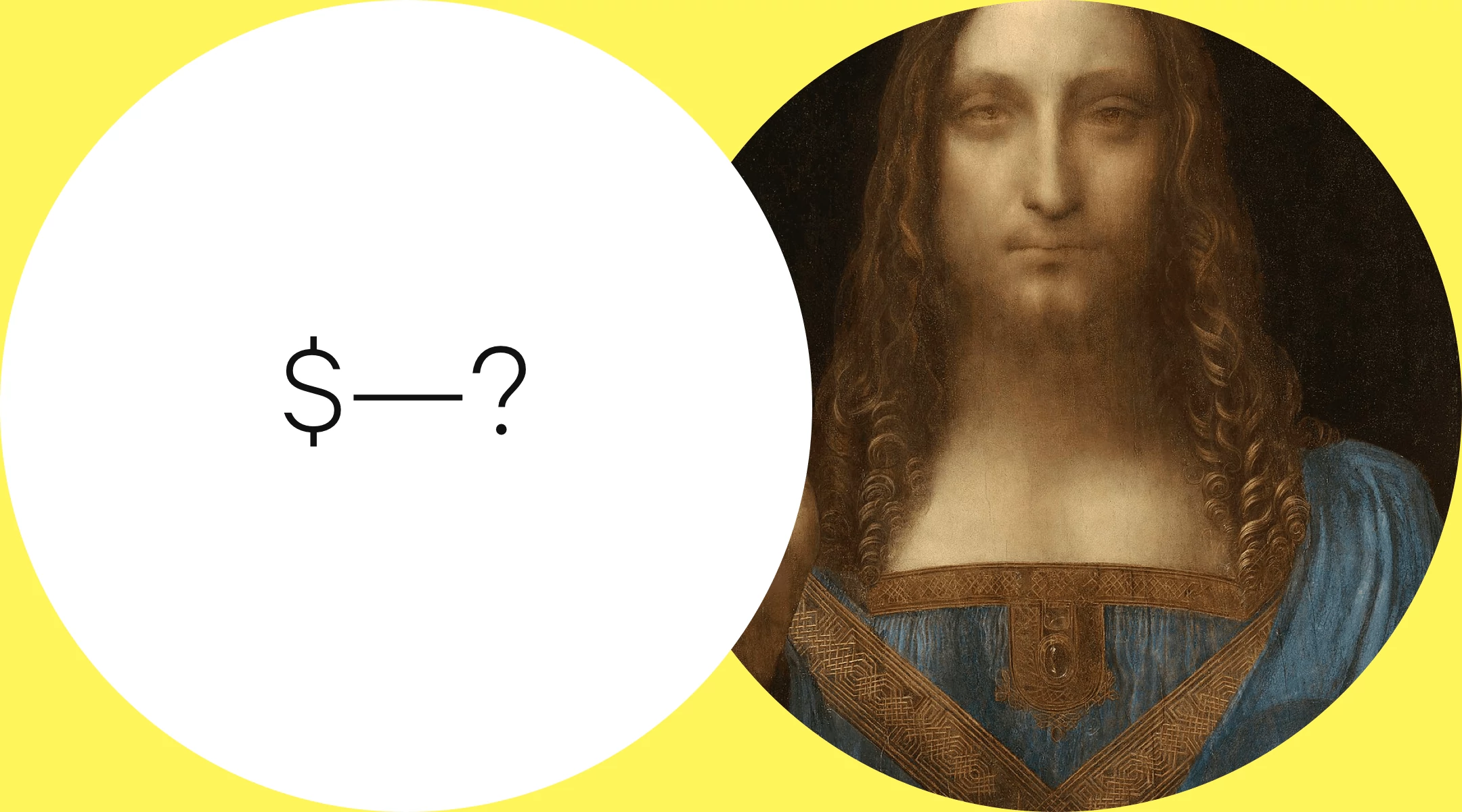
One of the first questions raised when talking about art is simple—why should we care? Art in the contemporary era is easy to dismiss as a selfish pastime for people who have too much time on their hands. Creating art doesn't cure disease, build roads, or feed the poor. So to understand the value of art, let’s look at how art has been valued through history and consider how it is valuable today.
The value of creating
At its most basic level, the act of creating is rewarding in itself. Children draw for the joy of it before they can speak, and creating pictures, sculptures and writing is both a valuable means of communicating ideas and simply fun. Creating is instinctive in humans, for the pleasure of exercising creativity. While applied creativity is valueable in a work context, free-form creativity leads to new ideas.
Material value
Through the ages, art has often been created from valuable materials. Gold , ivory and gemstones adorn medieval crowns , and even the paints used by renaissance artists were made from rare materials like lapis lazuli , ground into pigment. These objects have creative value for their beauty and craftsmanship, but they are also intrinsically valuable because of the materials they contain.
Historical value
Artwork is a record of cultural history. Many ancient cultures are entirely lost to time except for the artworks they created, a legacy that helps us understand our human past. Even recent work can help us understand the lives and times of its creators, like the artwork of African-American artists during the Harlem Renaissance . Artwork is inextricably tied to the time and cultural context it was created in, a relationship called zeitgeist , making art a window into history.
Religious value
For religions around the world, artwork is often used to illustrate their beliefs. Depicting gods and goddesses, from Shiva to the Madonna , make the concepts of faith real to the faithful. Artwork has been believed to contain the spirits of gods or ancestors, or may be used to imbue architecture with an aura of awe and worship like the Badshahi Mosque .
Patriotic value
Art has long been a source of national pride, both as an example of the skill and dedication of a country’s artisans and as expressions of national accomplishments and history, like the Arc de Triomphe , a heroic monument honoring the soldiers who died in the Napoleonic Wars. The patriotic value of art slides into propaganda as well, used to sway the populace towards a political agenda.
Symbolic value
Art is uniquely suited to communicating ideas. Whether it’s writing or painting or sculpture, artwork can distill complex concepts into symbols that can be understood, even sometimes across language barriers and cultures. When art achieves symbolic value it can become a rallying point for a movement, like J. Howard Miller’s 1942 illustration of Rosie the Riveter, which has become an icon of feminism and women’s economic impact across the western world.
Societal value
And here’s where the rubber meets the road: when we look at our world today, we see a seemingly insurmountable wave of fear, bigotry, and hatred expressed by groups of people against anyone who is different from them. While issues of racial and gender bias, homophobia and religious intolerance run deep, and have many complex sources, much of the problem lies with a lack of empathy. When you look at another person and don't see them as human, that’s the beginning of fear, violence and war. Art is communication. And in the contemporary world, it’s often a deeply personal communication. When you create art, you share your worldview, your history, your culture and yourself with the world. Art is a window, however small, into the human struggles and stories of all people. So go see art, find art from other cultures, other religions, other orientations and perspectives. If we learn about each other, maybe we can finally see that we're all in this together. Art is a uniquely human expression of creativity. It helps us understand our past, people who are different from us, and ultimately, ourselves.
Reed Enger, "The Value of Art, Why should we care about art?," in Obelisk Art History , Published June 24, 2017; last modified November 08, 2022, http://www.arthistoryproject.com/essays/the-value-of-art/.
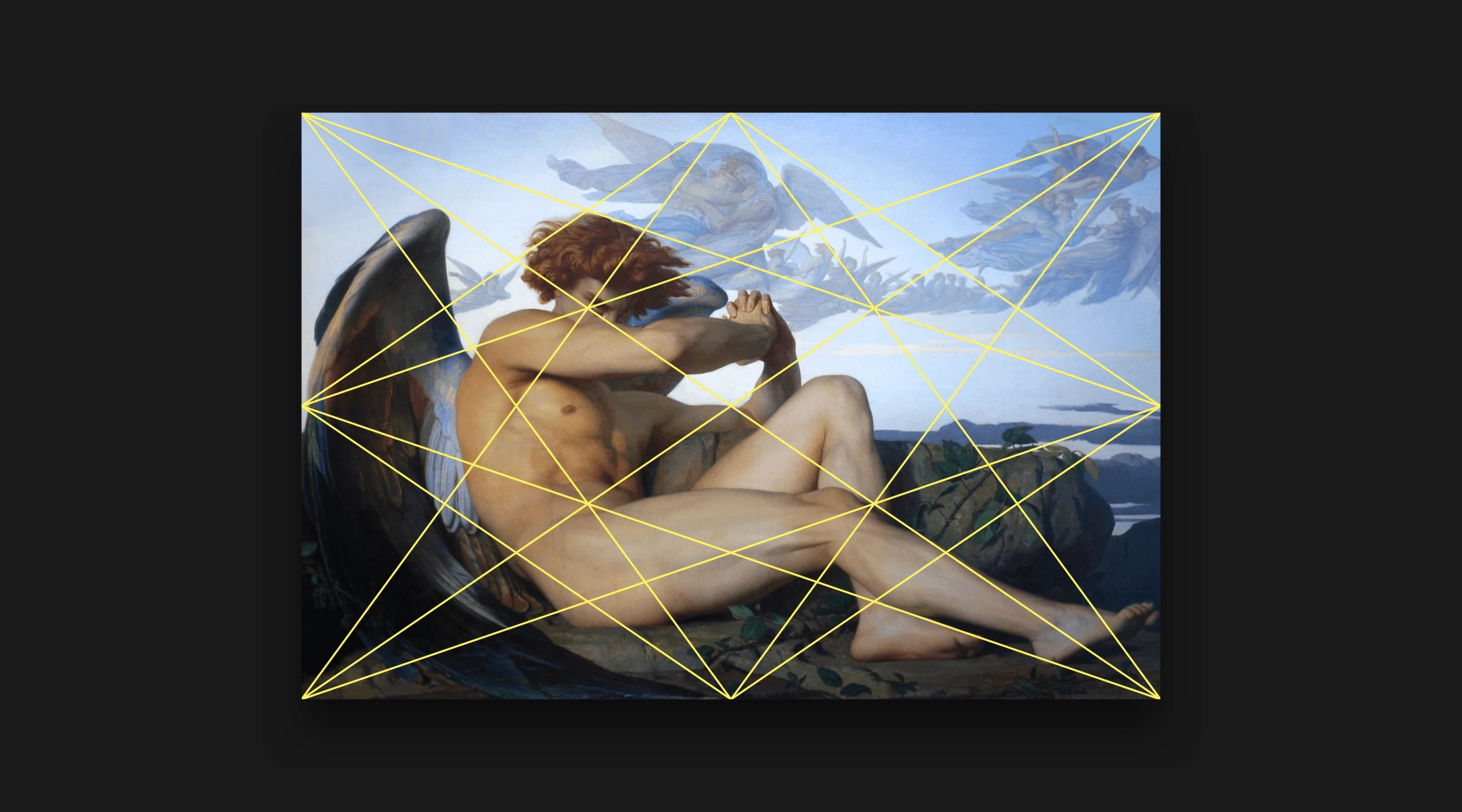
Advanced Composition Techniques
Let's get mathematical

Art History Methodologies
Eight ways to understand art
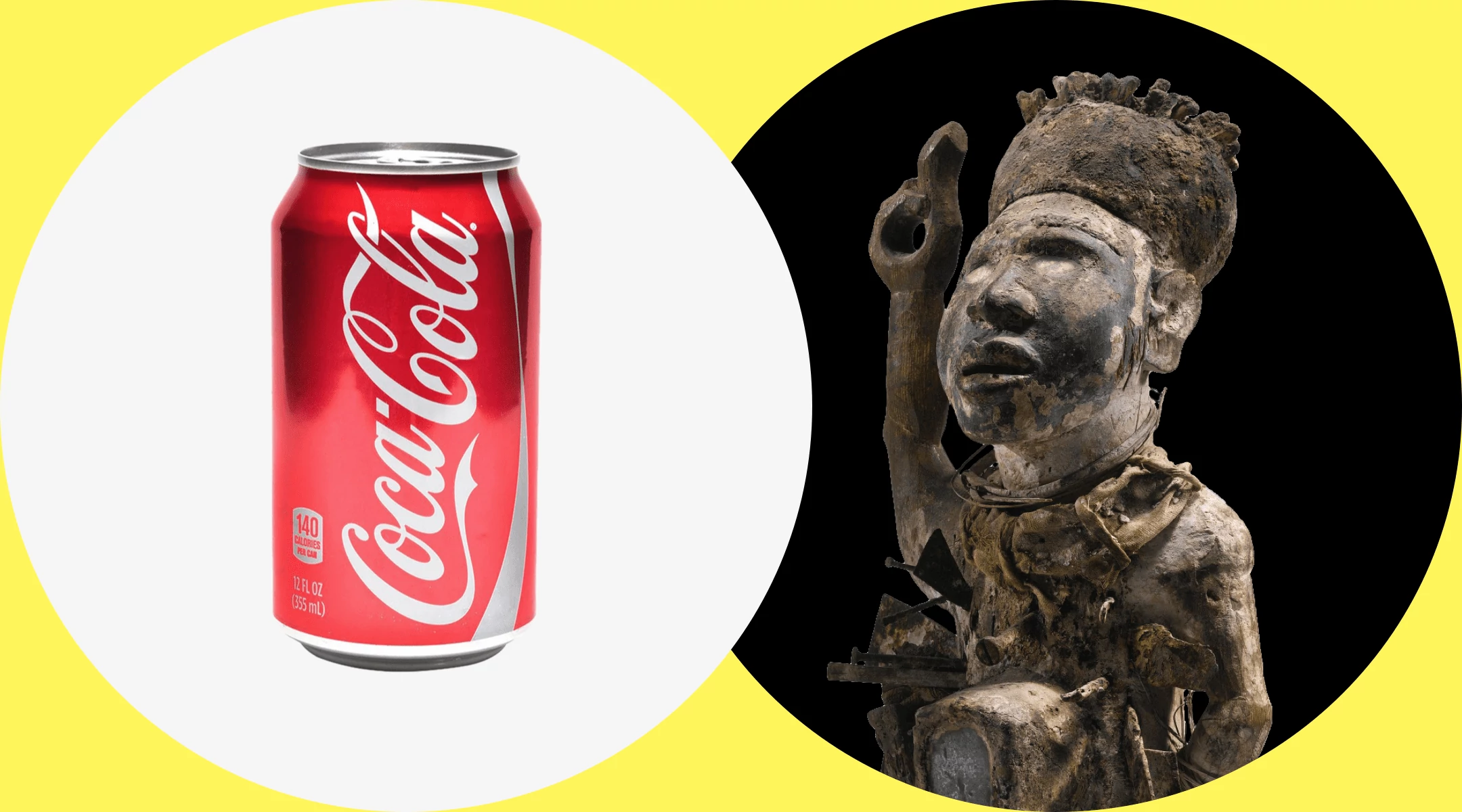
Categorizing Art
Can we make sense of it all?
By continuing to browse Obelisk you agree to our Cookie Policy
If you're seeing this message, it means we're having trouble loading external resources on our website.
If you're behind a web filter, please make sure that the domains *.kastatic.org and *.kasandbox.org are unblocked.
To log in and use all the features of Khan Academy, please enable JavaScript in your browser.
Course: Start here > Unit 2
- What is Cultural Heritage?
- Where are the women artists?
- Must art be beautiful?
- Is there a difference between art and craft?
- What's the point of realism?
What makes art valuable—then and now?
- Copying — spotlight: Virgin Hodegetria
- Copying as innovation and resistance
What was the status of the artist before the modern era?
What we value has changed, want to join the conversation.
- Upvote Button navigates to signup page
- Downvote Button navigates to signup page
- Flag Button navigates to signup page


What Makes Art Valuable? (Understanding Value in Art)
Have you ever wondered why one artist is paid tens of millions of dollars while another struggles to sell even a single piece of their artwork? If so, then you have come to the right place! In this article, I’ll discuss what makes art valuable and how to increase the value of your art.
However, first, you need to understand the fundamental concept of the art world. It is critical for everyone interested in taking their initial steps into the art industry.
Is pricing the only consideration in this concept? Is it a reflection of art’s symbolic meaning or the quality of its materials? Continue reading to learn more.
Table of Contents
What Determines the Value of Art?

(This article may contain affiliate links and I may earn a commission if you make a purchase)
Photo by Alina Grubnyak on Unsplash
Being an artist is difficult , and appreciating art is an art form in itself. However, it still boggles the mind that something that appears to have been drawn by a small child could be worth several million dollars. What is the story behind the astronomical prices, and how are these artworks different from other works of art?
There are various ways to look at it, and if you’re curious about how to assess the true value of art or what makes it so exorbitantly expensive or worthless, keep reading.

Authenticity
The first feature that distinguishes a low-cost painting from a high-cost one is, of course, its authenticity. An original painting will always have higher values than a replica.
Artwork’s Provenance
Another huge determining factor in an artwork’s value is its provenance or the documented history of who it has previously belonged. In other words, who were the previous owners of the painting? An artwork that was once owned by a celebrity, a prominent collector, or came from perhaps a respected gallery, for example, would increase its value.
The condition also plays an important role in determining the value of art. If the art has undergone restoration or conservation work, or if it is in poor condition and requires extensive restoration, it can have a substantial impact on its value.
Intrinsic Value
When it comes to their art, artists don’t think about money. Money is only a little part of it; it’s more of a mirror of themselves in the vast wide world. Artists express their individual and artistic expression to a bigger audience through painting, sculpture, and performance arts.
The intrinsic (or underlying) is a pretty subjective emotional value tied to how a certain work of art makes the audience feel and what sensations it stimulates. Since emotional reactions can’t be kept or measured, it is difficult to assign them a value. Moreover, all of these factors are influenced by one’s ethnic background, education, and life experience and are relatively unaffected by the materials used.
Rise of Abstract and Modern Art
Camera technology ushered in a dramatic revolution in creative culture. Photography was initially used to document the world. Thus, traditional artists no longer believed that was their primary reason for creating art. As a result, art has lost its ability to skillfully depict the world.
In the modern era, art is about how you feel and how you represent yourself. This has been one of the major transformations in art culture, and it has had a significant impact on how the world values art.
Historical Significance
When it comes to judging the worth of art, know that the historical significance makes art valuable. To begin, think about the artist’s work in terms of its historical significance within its genre. A painting by Claude Monet, for example, is more valuable than other recent impressionist works since Monet altered the narrative of art history and impressionism overall.
Art’s worth is also influenced by world history. After all, art is frequently a mirror of its time’s culture, and when it evolved into a commodity, it was influenced by political and historical changes, for example – The Mona Lisa painting .
The Artist’s Popularity & Background
The artist’s place in the art world is one of the most crucial factors to examine. Looking back through history, it’s simple to see that some artists were more influential than others, especially in the secondary market. This is due to a variety of causes, including being a leader and innovator.
If it’s a famous artist who wins prizes and is featured in exhibitions at prestigious galleries and museums, their artwork is more inclined to sell for a high price in the primary market.
If one of an artist’s paintings has been sold for a high price, other works by that artist will be considered valuable as well. And once an artist has established a brand, the sky is the limit in terms of assigning a monetary worth to their work.

The medium in which the painting is created also adds to its monetary value. Canvas works, for example, are expensive paintings. They are typically worth more than those on paper, and paintings are frequently worth more than sketches or prints.
The price a n a r t i s t c a n c o m m a n d will be affected if they have an interesting backstory, such as early death. This is partly because if they died young and created less work, supply and demand would immediately kick in. But, it’s also because artists’ lives interest the audience, so any compelling story would help sell their work.
The Excitement of An Auction House
Art, like all other things, is evaluated in comparison to other works of art. The price of modern art is influenced by recent auction results. Billionaires — or, better still, their advisors – abound in Christie’s and Sotheby’s auction houses. A huge sum of money is on the line, and the whole thing is a whirlwind of activity.
Auctioneers are adept salespeople who help push prices higher and higher. They know when to raise the stakes dramatically and when to shift the scales slightly. They’re in charge of the show, with people bidding, and it’s their responsibility to ensure that the highest bidder gets a chance and that prices rise.
And they’re playing to the proper crowd because winning is a big part of the thrill for wealthy businessmen who frequently find themselves in auction houses.
Social Status
Many people regard art as a status thing and a stepping stone to a beautiful lifestyle. There are many art fairs, auctions, and gatherings with after-parties, and the rich and famous believe attending such events to be a status symbol.
Furthermore, they spend millions on art. It helps the wealthy make a public statement about their wealth and become the center of attention. With art, there’s also an element of exclusivity.
How Artists Can Increase The Value of Their Art

Photo by Geri Mis on Unsplash
With the current global art market on the rise and living artists smashing auction records, what makes one artist more “valuable” than another?
Selling art has changed significantly over the past few decades. Works of art were commissioned in the Middle Ages and Renaissance periods, meaning that they were requested by a client and then manufactured to order. The buyer would discuss with the artist how he wanted the painting to be, the materials used, etc.
It wasn’t quite artistic freedom, but it did have its own benefits. You didn’t just paint anything and hope it sold as many artists do nowadays.
Below are ways that can make your art worth more money:
Establish an Artistic Brand
It takes more than a design, font style, or color to establish a brand. A brand is recognized because the consumer forms a personal bond with the company or product, or both. So how do you set yourself apart from the thousands of other artists that sell work online? It’s not as difficult as you may assume. All you need to do now is tell your tale.
- What is your personal narrative?
- What message are you attempting to convey through your artwork?
- What are your essential principles and morals?
- What are your sources of inspiration?
Your stories, morals, and fundamental values will draw in your target audience and increase brand exposure on the internet.
What If My Art Doesn’t Have Any Story?
Understand that every piece of art has a backstory. Remember that art comes from the depths of your soul or heart. It’s meaningful and not just a skill, practice, or thoughtless doodling. You are the protagonist of your own story.
When it comes to marketing your paintings or other artwork, you are the most important factor. Saying that your art lacks a story is like saying that you lack a story or that nothing is compelling about you or your work. You can’t possibly know what your art is about or how to express it if you don’t know who you are and what you believe in. And until you figure that out, you’re not going to get far.
Sign Your Artwork
Many artists are discovering how to sell their work online and earn money. I’ve discussed how telling your story and communicating your basic principles with your audience can boost the worth of your work. However, how can you encourage people to read your narrative if they have no idea who you are?
How can you be sure that people will recognize you as the artist behind the work they’re enjoying online? It’s not as difficult as you may believe. You only need to sign your artwork. Your work should have a signature that is constant across all of your artwork, whether it is legible or not. People will always know it’s yours this way.
Date Your Artwork
Don’t be fooled into thinking that collectors are exclusively interested in new items. People will want your previous work when you’re famous, and they’ll use it to explain your artistic progress. This will be valuable for both curators and art buyers as your career progresses.
Explain Your Art Piece
People want to know about your art, what it represents, expresses, or symbolizes, how it came to be, what’s going on in it, what inspired it, how you came up with the concept, and so on. There’s no need to get wordy, technical, or monotonous here.
You’ll need at least a one or two-sentence explanation of the art, a “way in” to understand or at least explore it, much like you’ll need a one or two-sentence explanation in a gallery or auction catalog. Allow collectors to communicate about your work with their friends by providing some information for them to talk about.
Number and Document Your Artwork
Set the edition size, never modify it, and number every piece in the edition consecutively if you’re a printmaker, digital artist, or you make multiples of any type. People who purchase multiples expect to receive a fixed edition size that will never vary.
Never alter the edition size or opt to print a new edition, no matter how successful it becomes. If you do so, you will betray the confidence of the original buyers, and, at worst, you will jeopardize the popularity and marketability of your art.
No matter how you look at it, maintaining accurate documentation of your art and art business is a great idea. This includes titles, dimensions, mediums, descriptions, images, videos, times, dates, sale prices or buyer names (where possible), and any published materials— online or in print— that are specifically linked to you and your art, such as criticisms, reviews, interviews, and so on. Good documentation of your art career’s history and evolution is essential not just for you but also for coming generations, not to mention your reputation as an artist.
What is Art Value?
A realistic evaluated value is based in part on what the work has already sold for or normally sells for not only in retail galleries, but also at auctions, secondary market websites, and other relevant venues, and it’s based on actual pricing data from previous sales.
Can Unknown Painters’ Artworks Be Valuable?
While original paintings command the highest prices, in some situations, a rare or customized print might be worth millions. A reproduction of a well-known artist’s painting is sometimes more valuable than a genuine painting by an unknown artist.
Is There Any Value in Unsigned Prints?
Prints are sometimes perceived as mass-produced replicas of well-known works of art that aren’t particularly significant or worthwhile investments. Nothing, however, could be further from the truth. Prints can be equally as valuable as any other piece of art, with some prints fetching seven or eight figures at auction.
Why Do Art Collectors Purchase Works of Art?
Aesthetics and a wish to dwell in the presence of art! The majority of online art consumers buy art to hang in their homes. Seventy-one percent of collectors polled stated that they purchase art to adorn their homes. This was the most often reported reason for buying art, even among investment-minded collectors.
What Is It That Makes Modern Art So Special?
Modernist art is defined by a rejection of traditional and conservative values or realistic renderings of subjects, as well as a richness of form (colors, shapes, and lines) with a focus on abstractions.
Every artist desires to sell their work and raise its worth. Selling art is an art form, and you’ll want to devote some time each week to improve your internet marketing skills. If you want to improve the worth of your artwork more quickly, you should learn how to become an expert in online marketing .
What Makes Art Valuable – Final Thoughts
The specific artist who created the work is highly valued by the market. It makes a significant difference whether the artist is undiscovered, emerging, or well-known. The value of an artwork is determined by the artist’s previous exhibitions, sales history, and level of experience.
In general, the higher the market price for an artist, the higher the demand for that artist. So hopefully, by now, you have a better idea of what makes art valuable.
More From Artistry Found
- What Does Art Mean to You? (5 Things to Think About)
Are Talented Artists Born or Made? (The Truth!)
- The Difference Between Art And Craft (Explained!)
- Why Artists Keep Sketchbooks (Explained!)
Bryan is an artist living in Las Vegas, Nevada who loves travel, ebiking, and putting ketchup on his tacos (Who does that?!). More about Bryan here.
Similar Posts
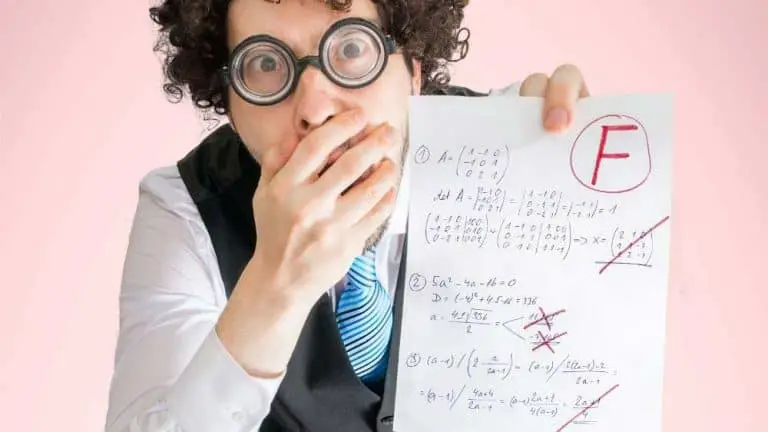
Why Are Artists Bad At Math? (Explained)
There seems to be a stereotype that has been around for years and years; this is that artists are notoriously bad at math. Although this appears to be the truth in some cases, not many people try to find out the reasoning behind it. So, why are artists bad at math? Artists can be bad…
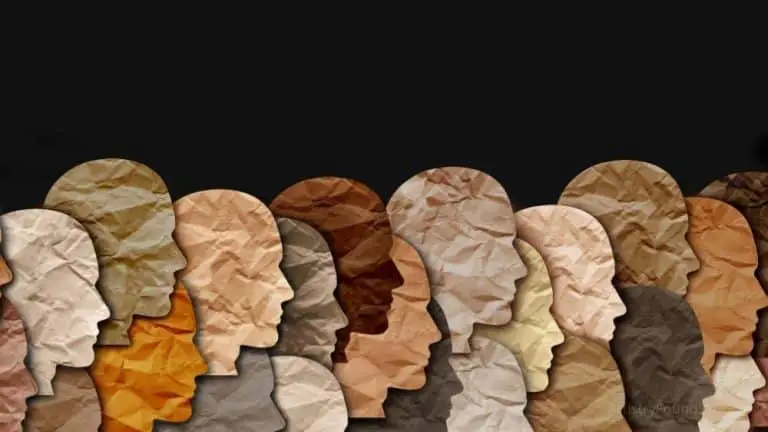
Do Artists Have A Responsibility To Society? (The Truth)
Art plays such a critical role in shaping our culture and the way that society operates. But, if it is essential for free expression and reflecting our values, emotions, and politics, do artists have a responsibility to the community at large? Yes, artists have a responsibility to society. Without art, we would not have voices…

Can An Artist Use Two Names? (Explained with Examples)
Throughout the ages, artists have been known by nicknames, aliases, or stage names. Artists often use different names to make themselves sound more exotic or marketable – “Prince” sounds a lot more interesting than Prince Rogers Nelson. But does this apply in the world of fine art? Can an artist have two names? An artist can…

Artists are talented individuals capable of creating great art with the right resources. These individuals express raw talent, creating artworks that can ultimately stand the test of time. However, many are of the notion that talented artists are simply born that way, and no amount of training will make an untalented artist good. So, are…
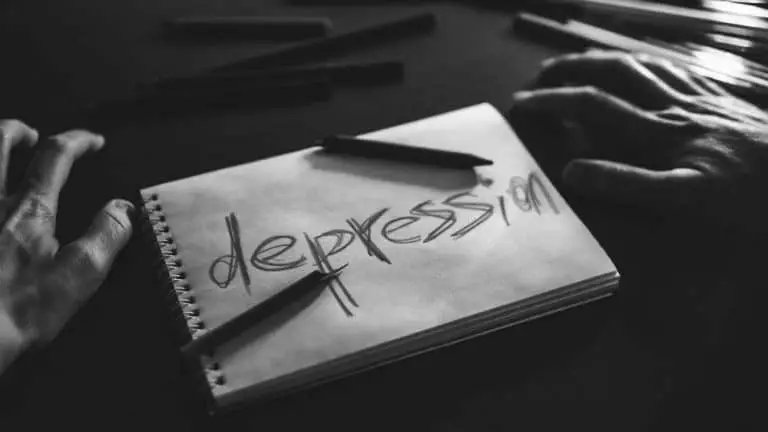
Are Artists Depressed? (Creativity and Depression)
The tortured artist is a timeless stereotype; if you see an artist in media, you can be sure they would have mental health issues. Similarly, those characterized as having mood disorders are described as creatives—whether it be a writer, painter, or musician. Are artists depressed, and if so why? There is a link between creativity…

Portrait vs. Portraiture (What’s the REAL Difference?)
Using the terms portrait and portraiture correctly has always been so confusing to me. Everyone seems to use these words differently. But now, knowing the real difference between portrait and portraiture, everything has become crystal clear. A portrait is the end product of an artistic rendering of an individual where the person’s likeness, mood, or…


What made art valuable: then and now
For artists working in the West in the period before the modern era (before about 1800 or so), the process of selling art was different than it is now. In the Middle Ages and in the Renaissance works of art were commissioned, that is, they were ordered by a patron (the person paying for the work of art), and then made to order. A patron usually entered into a contract with an artist that specified how much he would be paid, what kinds of materials would be used, how long it would take to complete, and what the subject of the work would be.
Not what we would consider artistic freedom—but it did have its advantages. You didn’t paint something and then just hope it would sell, the way artists often do now.
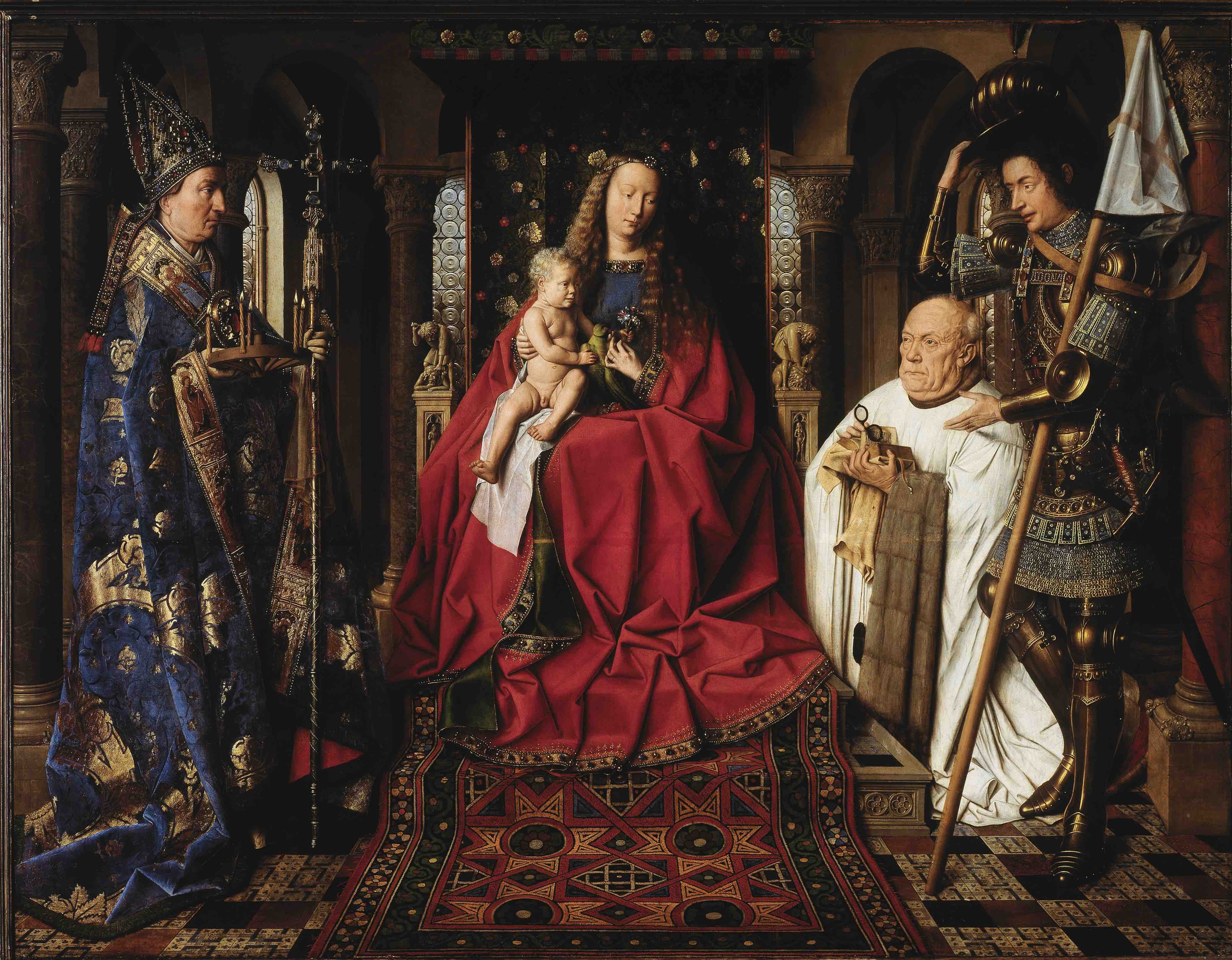
Patrons often asked to be included in the painting they commissioned. When patrons appear in a painting we usually refer to them as donors. In this painting, the donor is shown kneeling on the right before the Virgin Mary and the Christ Child. Jan van Eyck, The Virgin and Child with Canon van der Paele , 1436, oil on panel, 141 x 176.5 cm (including frame) ( Groeningemuseum , Bruges)
What was the status of the artist before the modern era?
One way to understand this is to think about what you “order” to have made for you today. A pizza comes to mind—ordered from the cook at the local pizza parlor—”I’ll have a large pie with pepperoni,” or a birthday cake from a baker—”I’d like a chocolate cake with mocha icing and blue letters that say ‘Happy Birthday Jerry.'” Or perhaps you ordered a set of bookshelves from a carpenter, or a wedding dress from a seamstress?
Does our culture consider cooks and carpenters to be as high in their status as lawyers or doctors (remember we’re not asking what we think, but what value our culture generally gives to those professions)? Our culture creates a distinction that we sometimes refer to as “blue collar” work versus “white collar” work.
In the Middle Ages and even for much of the Renaissance, the artist was seen as someone who worked with his hands—they were considered skilled laborers, craftsmen, or artisans. This was something that Renaissance artists fought fiercely against. They wanted, understandably, to be considered as thinkers and innovators. And during the Renaissance the status of the artist does change dramatically, but it would take centuries for successful artists to gain the extremely high status we grant to “ art stars ” today (for example, Pablo Picasso , Andy Warhol , Jeff Koons , or Damien Hirst ).
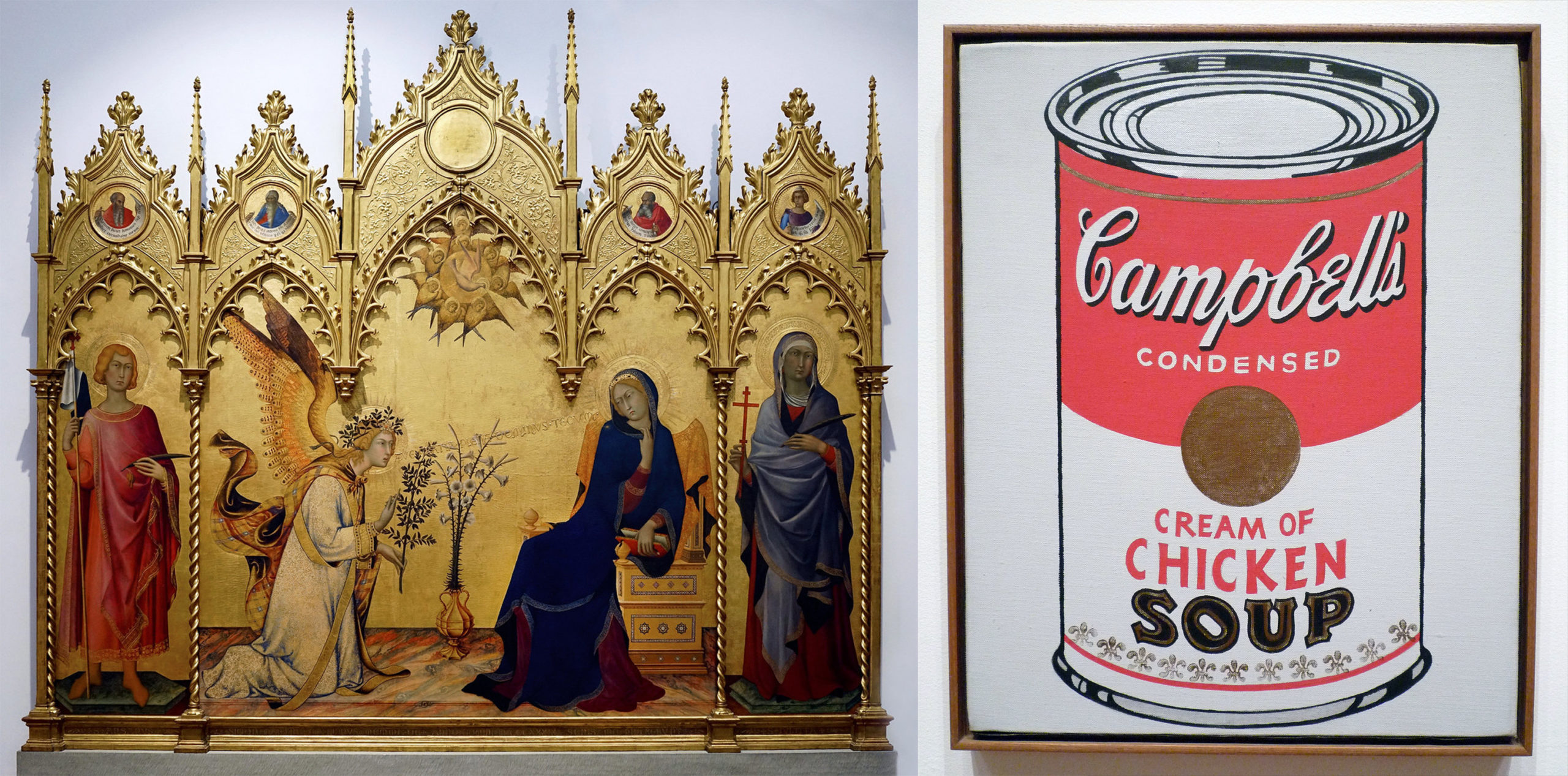
Left: Simone Martini, Annunciation , 1333, tempera on panel, 184 x 210 cm (Uffizi Gallery, Florence; photo: Steven Zucker , CC BY-NC-SA 2.0); right: soup can (detail), Andy Warhol, Campbell’s Soup Cans , 1962, synthetic polymer on thirty-two canvases, each canvas 20 x 16 inches (Museum of Modern Art, New York; photo: Steven Zucker , CC BY-NC-SA 2.0)
What we value has changed
Medieval paintings were often sumptuous objects made with gold and other precious materials (like Simone Martini’s Annunciation ). What made these paintings valuable were these materials (blue, for example, was often made from the rare and expensive semi-precious stone, lapis lazuli ). These materials were lavished on objects to express religious devotion or to reflect the wealth and status of its patron. Today the value of a painting is often the result of something entirely different. Picasso could have painted on a napkin and it would have been incredibly valuable just because it was by Picasso—art is now an expression of the artist and materials often have little to do with the worth of the art.
Additional resources
Why commission artwork during the Renaissance?
Learn about life in a Renaissance artist’s workshop
Learn about the role of the workshop in late medieval and early modern Northern Europe
Learn about the role of the workshop in Italian Renaissance art
Cite this page
Your donations help make art history free and accessible to everyone!
Articles and Features
Value in Art – What Makes Art Valuable?
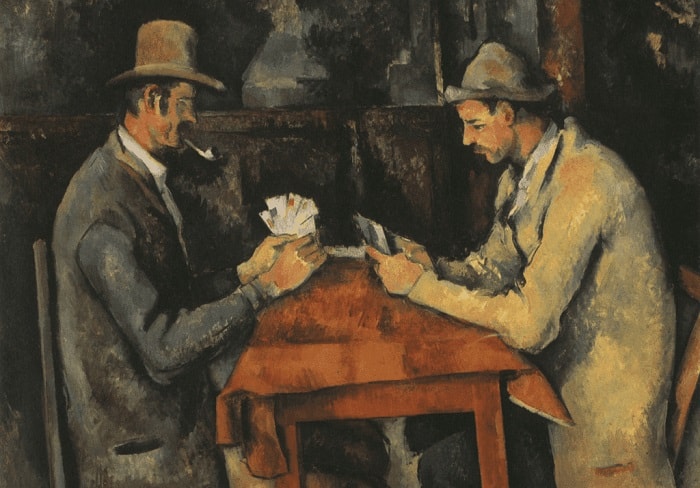
By Chiara Bastoni
The definition of value in art is an ever-disputed topic in the art world as the elements of art value are extremely numerous and often highly subjective rather than empirical. Understanding this concept at the core of the art market is essential to all those who wish to take their first steps into the art world. For example, what makes art valuable? Does this concept only have to do with the price? Does it reflect the symbolic nature of art or rather the fineness of its material? Watch the video below and read on to understand what is the value of art and what are the elements that define it.

What is Value in Art?
The parameters and elements that determine the value of art have certainly changed from the past. Until the advent of the modern era, the question about what is the value of art could be answered more easily, taking into consideration the materials used, the purpose served, the dimensions, the notoriety of the artist and of the commissioner – an extremely common figure back then. Even though not all of these elements have disappeared, today they are certainly complemented by others. One just has to think that today an art piece like Comedian by Cattelan can sell for 150.000 USD, a price that certainly exceeds the cost of the materials employed: a banana and a strip of duct tape.
The Elements that Define the Value of Art
Although simplistic – like all classifications – a useful categorization of the different aspects involved in the definition of the value of art includes:
- The intrinsic or inherent value of art, pertaining to its symbolic quality;
- The social value of art;
- The commercial (or market) value.

The Intrinsic Value of Art
The intrinsic value of a piece of art consists of what can’t be determined by numbers. The most difficult one to pin down, the intrinsic (or inherent) is a highly subjective emotional value, connected to how a specific work of art makes the viewer feel, what sensations it provokes, and, of course, this can’t be held or shown. Furthermore, all these variables depend upon cultural background, education, and personal life experience. and are rather independent of materials employed. For example, leaving the investment aspect of an art purchase aside, if an artwork made of gold leaves you cold, its low intrinsic value to you won’t justify its price. Debates around the overall meaning of art are countless and the definition of intrinsic value is something that pertains to the individual. After all, it has something to do with the uniqueness, irreplaceability, and sacred aura that surrounds art.

The social value of art
Another relevant element of art value is societal meaning. Art indeed is a means of communication, as it passes ideas, values, feelings, concepts, which might be received differently by each observer but still vehiculate ideas concerning society and human condition. When producing art, an artist shares a story, a sentiment, cultural elements and the moment people perceive it, they also understand it and project their own stories, sentiments and cultures. Moreover, the social value of art comes from the capacity of gathering individuals for the purpose of a communal experience.
The commercial value of art
The third main element of art value is market value, in simpler terms, its price. Given what was mentioned about the social and intrinsic value of art, it should be clear now that an artwork’s price is not determined the same way as utilitarian goods. The commercial value of an art piece, in fact, is determined according to some collective consensuses, exactly like currency: it is a human stipulation to define it.
When talking about art, there are two separate markets where negotiations take place and this stipulation happens: the primary market, undermining the passages from the artist’s hands to its first purchaser, where the price is decided mainly by the artist himself and his dealer, and the secondary market, for all successive passages of an art piece, where the price inevitably follows the principle of demand and supply.

What makes art valuable?
As mentioned, the market value is mainly determined by the galleries and auction houses. The consensuses that are born in this context are accountable for establishing a history of pricing for an artwork or an artist, which helps new works or works resold on the market to be priced.
Several are the inputs to this process:
One of them is the context of the production of an artwork. This can either be of historical importance or have a certain meaning in the development of history.
Another essential element is the provenance of the work, meaning the history of ownership once it enters the secondary market. If the previous owner of the piece was a famous collector, this information certainly doesn’t pass unobserved. If the artwork belonged to a museum, this adds an incredible value to the art piece, as much as to make them “off” the market most of the time. This also has an effect on the rarity of the work and on the mechanisms of demand and supply: the more artworks of a specific artist are situated in public museums, the less amount of artworks will be available for sale, therefore, the more the value of those works for sale.
The market also takes into consideration the conditions in which the artwork has been preserved. This is evaluated by experts and varies according to the taste of the period. There were eras, in fact, where invasive restorations were carried out to the detriment of originality, while now this is an element that takes out value rather than adding more.
Other paramount factors to consider are the authenticity of the work, which is technically evaluated, and the quality of its production, which is, on the opposite, subjective. However, subjectivity is removed by art critics who are able to judge on factors such as the clarity of execution and the mastery of the medium used, independently from style and era.
Other elements to take into consideration are the size of the work and the materials used, even though, especially when it comes to contemporary art, these factors became secondary. Sometimes also the subject has an impact on the price, as, for example, women subjects on average sell better than men.
Finally, the market values extremely the artist who produced the work. Whether the artist is unknown, emerging, or a blue-chip artist, it makes a huge difference. The price is based on the artist’s exhibition history, sales history, and career level. In general, the greater the demand for an artist, the higher the prices fetched on the market.
Relevant sources to learn more
Learn more with our Top 10 Books That Explore the Fine Art of Collecting Read more on BBC: Why is art so expensive?
Wondering where to start?


- Artblog Radio
How do we value art?

Dearest Artblog readers,
We are thrilled to present to you two firsts: our first long-form essay co-written by Morgan and Roberta, and our first audio article! You heard us right- if you aren’t in the mood to read something long today, you can listen to Roberta recite this essay in her soothing voice. Today, we cover value: Why is art undervalued in America? Well, maybe it would be valued if it were accessible, prioritized in our educational system, and inclusive.
You can listen to “How do we value art?” on Apple Podcasts and Spotify . And thank you AGAIN Kyle McKay (our podcast music composer) for writing our brand new audio article intro and outro!
Our value system in America is blurry. What do we value? Money certainly, and for some that is the most important. We’ve all heard the phrase “time is money,” (and we have plastic surgeons and the beauty industry devoted to keeping our youthful glow), so we can say we value time. We seem to value skill, at least when it comes to medicine, law, sports, or acting. We say we value knowledge but maybe we actually value expertise. Experts save us time, after all. America has certainly made itself clear about one thing: it doesn’t value art.
Needed: a more holistic approach to art including both object and maker
Art is irrefutably valuable when used as an indicator of wealth, a status symbol, or when it can be resold at a profit. However, we do not value artists for their time, skills, knowledge, or expertise. Time: if paid by the hour, a graphic designer who is efficient is punished . Skills: artists are expected to maintain a day job and pursue their art career in the evenings and weekends. Expertise: you will not see an art expert on the news; people think they know enough about art already (abstract art? my kid could paint that).
If art is an area of time, skill, and expertise, it ticks off three value boxes. So why does art not come to mind when we ask most people what they value? One huge reason art is not valued is because it is not accessible. It is treated not as a part of life, but as a non-essential feature of life, reserved for the few, but not for everyone. Art can and should be for everyone. By not valuing artists, we devalue art. Art encompasses both maker and object.
We argue that art is of great societal value, and that by demystifying art through increased access and integration into our educational system, art can be elevated in our topsy turvy value system and adopted as a holistic practice that benefits not only artists and arts educators, but our entire society.
What is art?
Art is thinking critically and rethinking systems and breaking rules. That is art’s value. It is a system that changes and adapts and allows anyone to participate in shaping it. It is democratic. Art is not a narrow field of study, it is a response to the human need for beauty, order, community. It’s not too strong to say that art is a human need. It doesn’t die, it changes.
If you randomly selected a group of people on the street and asked them to define art, you wouldn’t reach one universally agreed upon answer. Artists cannot even agree on a definition, in part because art is complex — it’s a system of thinking and a practice of making as well and it is always in the state of being redefined. What is seen as art today would have been rejected 100 years ago.
A phrase that we hear too often is “I can’t draw,” which is a self-dismissive comment but also a value statement about art. The unsaid corollary is “And I don’t understand art.” Drawing is not the definition of art, and the common understanding that drawing is art creates a barrier that prevents many from accepting art as anything other than the means for a pretty picture. But art is a practice of life.
The roles of teachers, lawyers, actors, are clear, but who are artists, what do they do? This inability to define what artists are and do creates a devaluing of the artists and a kind of misty demonization or in some cases glorification of these unknowable people. It also dismisses the art made by the demonized people and allows the value of art to be considered only in monetary terms. If you have little knowledge of art, there is no context in which to value it, other than money. If the news says a Van Gogh painting sells for $125 million, people know that’s a valuable piece of art. But that doesn’t connect with their lives and is pretty meaningless information except for Quizzo.
Here is a meaningful example of art that does not require the ability to draw: art can be a community project, like Project Row Houses . Not only does PRH employ and provide opportunities for artists in Houston, it also runs The Young Mother Residential Program which provides housing to young mothers and their children so that the mothers can go back to school. Art can be an invitation to cook together, like Shreshth Khilani’s Immigrant Kitchen . Artblog itself is an art project. Projects such as these are a testament to art’s ethos: art exists to challenge norms, pose questions, and propose positive change.

STEM AND STEAM
It is no wonder though, that when art is seen as a talent or ability rather than a way of life based on critical thinking, community and beauty, that time and time again, art is the first thing to be cut from underfunded public schools. The arts are categorized as superfluous and not worthy of tax dollars. These funding decisions disproportionately affect poor people, marginalized people, and those who attend public schools, fueling the idea that art is a privilege and not for everyone. The lack of art in schools impoverishes education and impoverishes society.
STEM was one nail in the coffin of art. It’s an easy sell to kill art programs in favor of Engineering, Math, Technology and Science. But even before STEM came along in 2001, we had the culture wars in the 1980s and 1990s, when Sen. Jesse Helms and the Republican and religious right went after the NEA and gutted its budget for having given grants to artists like Andres Serrano, Karen Finley and others who made what the conservatives believed to be sacrilegious or profane art. That was not the first and it wouldn’t be the last time art was de-listed as a public good, something valued.
Philadelphia Arts in Education Partnership ( PAEP )’s STEAM program is an effort to reintroduce the arts. But as an organization that relies on grants and operates after school and in the summer, they are destined to fail because they are not integrated into the educational foundation. They are a band-aid, plopping the “A” back in there, instead of a permanent fixture of the educational value system.
The academia feedback loop
And don’t get us started on art college. Why, you ask, if there is no art in most elementary and secondary schools, do colleges and universities teach art and award students degrees in Fine Art? Well, the answer is that some students want to study art. Some people actually feel bad when they don’t make art. They need to express themselves in ways that fulfill them that science, math, technology and engineering don’t. Art helps people express themselves – it fulfills a human need to communicate.
Art school is effective in teaching verbal communication: think critique, artist talks, art theory. This training makes BFAs uniquely qualified to solve problems that require creativity, flexibility, and thinking on your feet. BFAs can easily point out flaws and provide solutions. They excel at offering different perspectives. BFAs are a unique resource and should be employable everywhere to help with critical thinking and problem solving. They deserve more than barista jobs, which is what many fall into after graduation.
But art school itself is flawed. It is expensive and often cultivates an elitist and insular culture. And due to lack of employment opportunities for BFA graduates, many find themselves right back in academia (as MFA students, and then as professors). In her essay Work Ethic , Helen Molesworth points out this problem: “The rise of the MFA artist– an artist trained in large measure to become a teacher in MFA programs.” This is not a sustainable model. Postgraduate education is not affordable, and it’s not accessible, and it’s not diverse. We need to get out of this academia feedback loop and diversify undergraduate and graduate art education to provide opportunities for those who wouldn’t otherwise attend art school but want to. Check out Kemuel Benyehudah’s piece, “school to museum pipeline,” which is all about that, here .
While some are now rethinking the value of college education, which is priced so high it’s creating a generation of loan-enslaved graduates, we say the value of college lies in its ability to safely allow young adults to explore the world and grow into mature humans. And for that we believe access to a four-year college should be free, and all education past that should be affordable. While we’re at it- even though we believe in access to postgraduate education, we believe an MFA degree should never be a job requirement. This only services the business of art education and forces underemployed, overqualified BFAs into even more debt. BFAs deserve a living wage.
Getting art back into America’s value system and communities
We believe there should be full employment of artists after art school. Artists should be paid to impress upon others the skills of critical thinking, creative problem solving, and values of community. There should also be full employment in the non-profit sector, for artists to work with communities in programs like Americorps. This may seem outrageous to you in 2020, but under Lyndon Johnson in the 1970s, CETA employed more than 10,000 artists with living wages. This model is practiced today in the Berkshires through THE OFFICE ’s program, Artists at Work ( AAW ). THE OFFICE’s Rachel Chanoff says the ultimate goal is to make AAW national and as expansive as the WPA .
Museums can address their lack of diversity, inclusion, and community enrichment initiatives by working with public schools and colleges to employ, mentor, and collaborate with artists of color and marginalized artists. Again, you should really check out Kemuel’s in-depth piece about this topic.
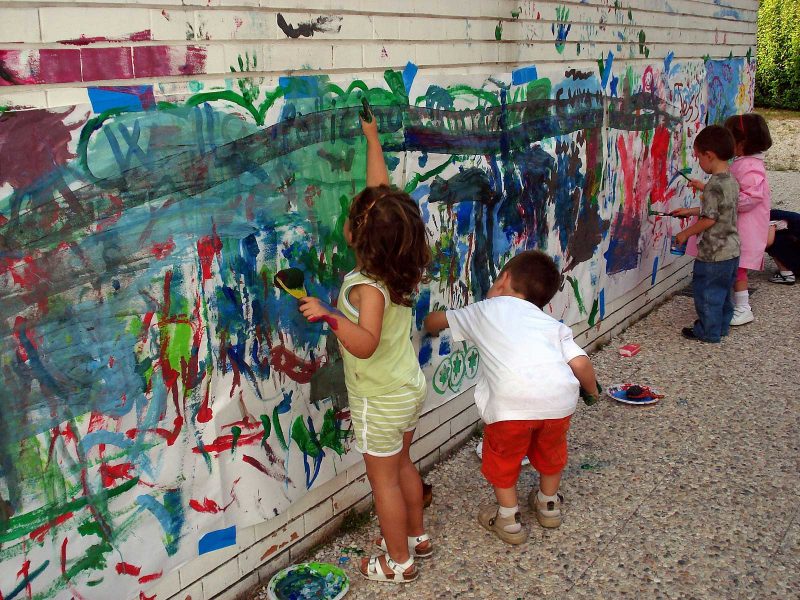
How have we tried to prove art’s value?
Data survey research by Greater Philadelphia Cultural Alliance and others has proven art’s value with dollar signs: “Arts and culture is a $4.1 billion economic engine for Philadelphia…” That’s $4.1 billion in total economic impact, with 55,000 full-time equivalent job; $1.3 billion in household income; $224.3 million in state and local taxes. You would think that was demonstration enough of art’s value, but unfortunately that is not the case, as evident by the city’s decision to gouge the arts and culture budget (the Office of Arts Culture and the Creative Economy and the Philadelphia Cultural Fund, known as OACCE and PCF) earlier this year. Arguments about art as an economic power player don’t sell in political arenas where low hanging fruit (like OACCE and PCF) are easily cut when budgets need trimming.

How should we value art? Art’s value is its holistic value
We want to convey, with urgency, that art is a practice of life that has been undervalued through inaccurate stereotypes and narrow generalizations about its purpose. Like love, and faith, art is hydra-headed. It is not stagnant, it is understood through societal context and time. In other words, we found ourselves thinking about how to “redefine” art, but defining art is not the problem. Art needs a conceptual manicure. It should be rethought as a holistic practice that can be integrated into anyone’s lives, instead of as a club. We need to conceive of a way to introduce the value of art into peoples lives in a holistic way that begins with public education, right down to pre-kindergarten.
These are steps that can be taken immediately: Support art by supporting artists with your dollars: buy their work. Support art by celebrating artists — go to their studios (safely) and talk with them and learn about their art. Support art by starting to call yourself an artist! It doesn’t matter if you haven’t been to art school, or if you did but haven’t made anything since. It doesn’t matter if you think you’ve never made art. If you think critically, you are an artist. If you think visually, you are an artist. Do you knit? Do you crochet? Do you curate your living space or bookshelves? Do you enjoy food presentations, or tending to your garden? What color are the clothes you put on today? All of these actions– just to give you a short list of examples– are artistic. Finally, embrace the idea of art as a life practice. Say it: Art is not separate from life.
What Others Are Reading...

Taji Ra’oof Nahl, Val Gay, Tuft the World, Philadelphia Consortium Print Fair, ‘The Cut’

Reggie Browne, finance leader, art collector and patron, thinks globally and locally about supporting the arts

Valerie Gay is Chief Cultural Officer! Commonweal Gallery, Locks Gallery, Woodmere Art Museum pop with artist news, Roberto Lugo, Tim McFarlane, an opportunity and Pittsburgh!
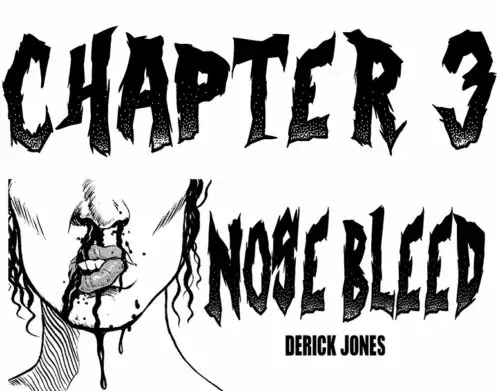
- Ask Artblog
- Socialist Grocery
- The 3:00 Book
- What Makes Us Unique

The Artblog, Inc. 1315 Walnut Street, Suite 320 Philadelphia, PA 19107

Why Is Art Important? – The Value of Creative Expression
The importance of art is an important topic and has been debated for many years. Some might think art is not as important as other disciplines like science or technology. Some might ask what art is able to offer the world in terms of evolution in culture and society, or perhaps how can art change us and the world. This article aims to explore these weighty questions and more. So, why is art important to our culture? Let us take a look.
Table of Contents
- 1.1 The Definition of Art
- 1.2 The Types and Genres of Art
- 2.1 Art Is a Universal Language
- 2.2 Art Allows for Self-Expression
- 2.3 Art Keeps Track of History and Culture
- 2.4 Art Assists in Education and Human Development
- 2.5 Art Adds Beauty for Art’s Sake
- 2.6 Art Is Socially and Financially Rewarding
- 2.7 Art Is a Powerful (Political) Tool
- 3 Art Will Always Be There
- 4.1 What Is the Importance of Arts?
- 4.2 Why Is Art Important to Culture?
- 4.3 What Are the Different Types of Art?
- 4.4 What Is the Definition of Art?
What Is Art?
There is no logical answer when we ponder the importance of arts. It is, instead, molded by centuries upon centuries of creation and philosophical ideas and concepts. These not only shaped and informed the way people did things, but they inspired people to do things and live certain ways.
We could even go so far as to say the importance of art is borne from the very act of making art. In other words, it is formulated from abstract ideas, which then turn into the action of creating something (designated as “art”, although this is also a contested topic). This then evokes an impetus or movement within the human individual.
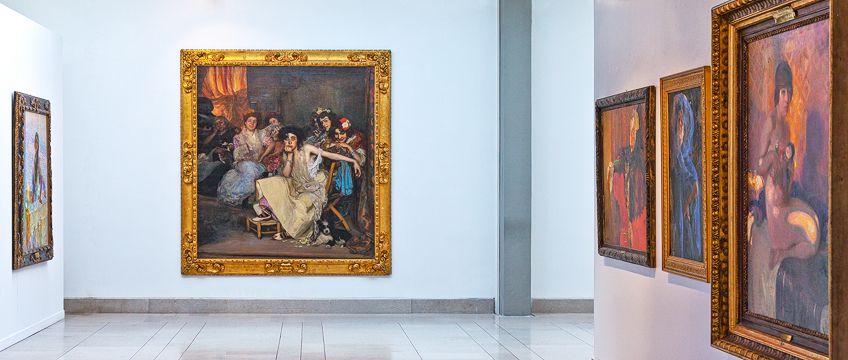
This impetus or movement can be anything from stirred up emotions, crying, feeling inspired, education, the sheer pleasure of aesthetics, or the simple convenience of functional household items – as we said earlier, the importance of art does not have a logical answer.
Before we go deeper into this question and concept, we need some context. Below, we look at some definitions of art to help shape our understanding of art and what it is for us as humans, thus allowing us to better understand its importance.
The Definition of Art
Simply put, the definition of the word “art” originates from the Latin ars or artem , which means “skill”, “craft”, “work of art”, among other similar descriptions. According to Merriam-Webster’s online dictionary, the word has various meanings; art may be a “skill acquired by experience, study, or observation”, a “branch of learning”, “an occupation requiring knowledge or skill”, or “the conscious use of skill and creative imagination especially in the production of aesthetic objects”.
We might also tend to think of art in terms of the latter definition provided above, “the conscious use of skill” in the “production of aesthetic objects”. However, does art only serve aesthetic purposes? That will also depend on what art means to us personally, and not how it is collectively defined. If a painting done with great skill is considered to be art, would a piece of furniture that is also made with great skill receive the same label as being art?
Thus, art is defined by our very own perceptions.

Art has also been molded by different definitions throughout history. When we look at it during the Classical or Renaissance periods , it was very much defined by a set of rules, especially through the various art academies in the major European regions like Italy (Academy and Company for the Arts of Drawing in Florence), France (French Academy of Fine Arts), and England (Royal Academy of Arts in London).
In other words, art had an academic component to it so as to distinguish artists from craftsmen.
The defining factor has always been between art for art’s sake , art for aesthetic purposes, and art that serves a purpose or a function, which is also referred to as “utilitarianism”. It was during the Classical and Renaissance periods that art was defined according to these various predetermined rules, but that leaves us with the question of whether these so-called rules are able to illustrate the deeper meaning of what art is?
If we move forward in time to the 20 th century and the more modern periods of art history, we find ourselves amidst a whole new art world. People have changed considerably between now and the Renaissance era, but we can count on art to be like a trusted friend, reflecting and expressing what is inherent in the cultures and people of the time.

During the 20 th century, art was not confined to rules like perspective, symmetry, religious subject matter, or only certain types of media like oil paints . Art was freed, so to say, and we see the definition of it changing (literally) in front of our very own eyes over a variety of canvases and objects. Art movements like Cubism , Fauvism, Dadaism, and Surrealism, among others, facilitated this newfound freedom in art.
Artists no longer subscribed to a set of rules and created art from a more subjective vantage point.
Additionally, more resources became available beyond only paint, and artists were able to explore new methods and techniques previously not available. This undoubtedly changed the preconceived notions of what art was. Art became commercialized, aestheticized, and devoid of the traditional Classical meaning from before. We can see this in other art movements like Pop Art and Abstract Expressionism, among others.
The Types and Genres of Art
There are also different types and genres of art, and all have had their own evolution in terms of being classified as art. These are the fine arts, consisting of painting, drawing, sculpting, and printmaking; applied arts like architecture; as well as different forms of design such as interior, graphic, and fashion design, which give day-to-day objects aesthetic value.
Other types of art include more decorative or ornamental pieces like ceramics, pottery, jewelry, mosaics, metalwork, woodwork, and fabrics like textiles. Performance arts involve theater and drama, music, and other forms of movement-based modalities like dancing, for example. Lastly, Plastic arts include works made with different materials that are pliable and able to be formed into the subject matter, thus becoming a more hands-on approach with three-dimensional interaction.
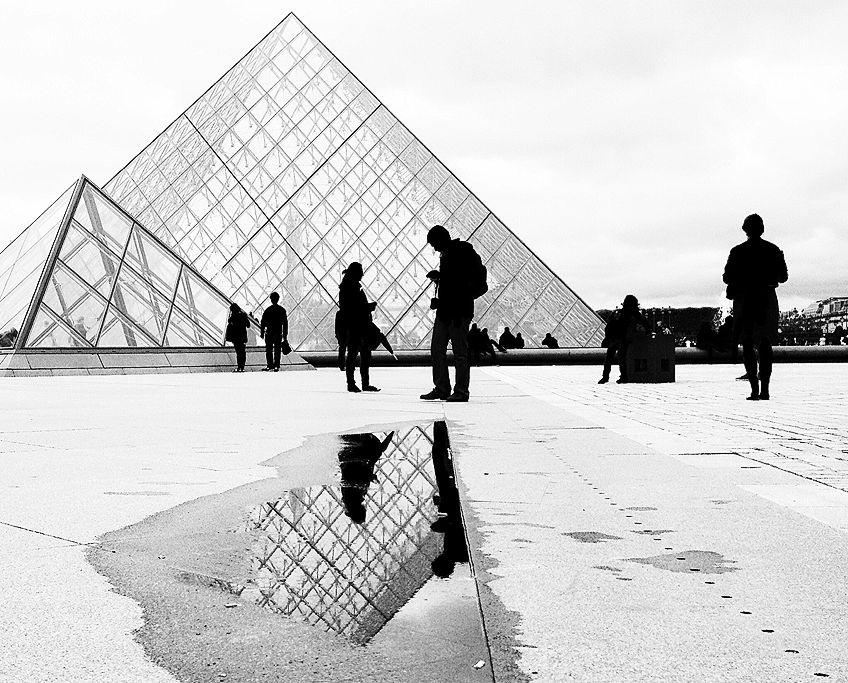
Top Reasons for the Importance of Art
Now that we have a reasonable understanding of what art is, and a definition that is ironically undefinable due to the ever-evolving and fluid nature of art, we can look at how the art that we have come to understand is important to culture and society. Below, we will outline some of the top reasons for the importance of art.
Art Is a Universal Language
Art does not need to explain in words how someone feels – it only shows. Almost anyone can create something that conveys a message on a personal or public level, whether it is political, social, cultural, historical, religious, or completely void of any message or purpose. Art becomes a universal language for all of us to tell our stories; it is the ultimate storyteller.
We can tell our stories through paintings, songs, poetry, and many other modalities.

Art connects us with others too. Whenever we view a specific artwork, which was painted by a person with a particular idea in mind, the viewer will feel or think a certain way, which is informed by the artwork (and artist’s) message. As a result, art becomes a universal language used to speak, paint, perform, or build that goes beyond different cultures, religions, ethnicities, or languages. It touches the deepest aspects of being human, which is something we all share.
Art Allows for Self-Expression
Touching on the above point, art touches the deepest aspects of being human and allows us to express these deeper aspects when words fail us. Art becomes like a best friend, giving us the freedom and space to be creative and explore our talents, gifts, and abilities. It can also help us when we need to express difficult emotions and feelings or when we need mental clarity – it gives us an outlet.
Art is widely utilized as a therapeutic tool for many people and is an important vehicle to maintain mental and emotional health. Art also allows us to create something new that will add value to the lives of others. Consistently expressing ourselves through a chosen art modality will also enable us to become more proficient and disciplined in our skills.
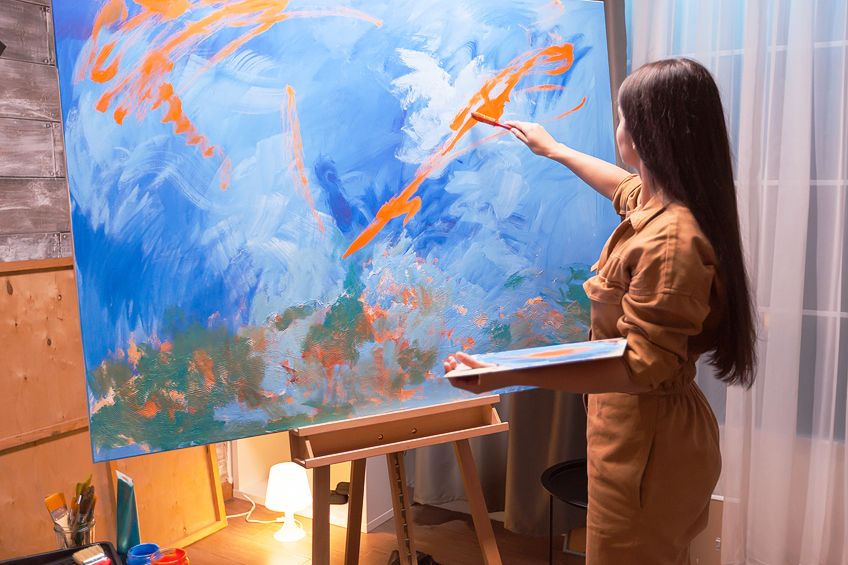
Art Keeps Track of History and Culture
We might wonder, why is art important to culture? As a universal language and an expression of our deepest human nature, art has always been the go-to to keep track of everyday events, almost like a visual diary. From the geometric motifs and animals found in early prehistoric cave paintings to portrait paintings from the Renaissance, every artwork is a small window into the ways of life of people from various periods in history. Art connects us with our ancestors and lineage.
When we find different artifacts from all over the world, we are shown how different cultures lived thousands of years ago. We can keep track of our current cultural trends and learn from past societal challenges. We can draw inspiration from past art and artifacts and in turn, create new forms of art.
Art is both timeless and a testament to the different times in our history.
Art Assists in Education and Human Development
Art helps with human development in terms of learning and understanding difficult concepts, as it accesses different parts of the human brain. It allows people to problem-solve as well as make more complex concepts easier to understand by providing a visual format instead of just words or numbers. Other areas that art assists learners in (range from children to adults) are the development of motor skills, critical thinking, creativity, social skills, as well as the ability to think from different perspectives.
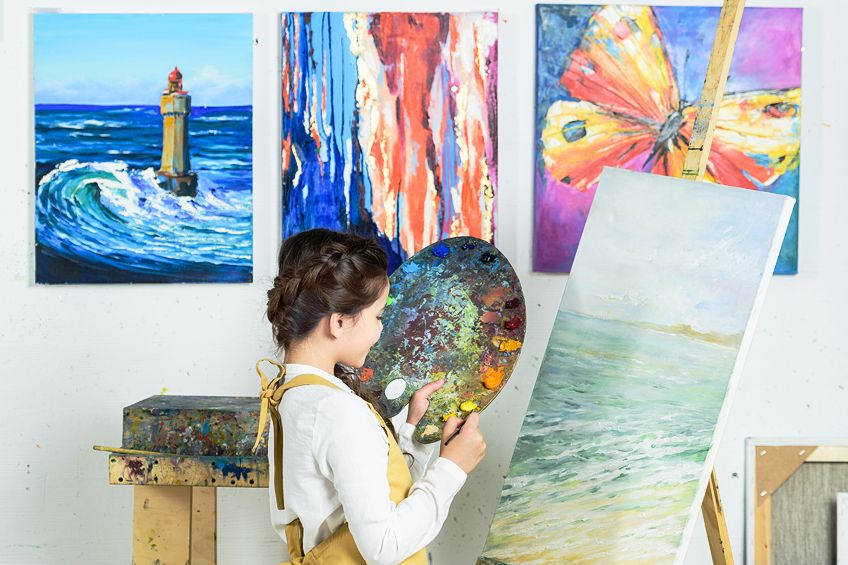
Art subjects will also help students improve on other subjects like maths or science. Various research states the positive effects art has on students in public schools – it increases discipline and attendance and decreases the level of unruly behavior.
According to resources and questions asked to students about how art benefits them, they reported that they look forward to their art lesson more than all their other lessons during their school day. Additionally, others dislike the structured format of their school days, and art allows for more creativity and expression away from all the rules. It makes students feel free to do and be themselves.
Art Adds Beauty for Art’s Sake
Art is versatile. Not only can it help us in terms of more complex emotional and mental challenges and enhance our well-being, but it can also simply add beauty to our lives. It can be used in numerous ways to make spaces and areas visually appealing.
When we look at something beautiful, we immediately feel better. A piece of art in a room or office can either create a sense of calm and peace or a sense of movement and dynamism.
Art can lift a space either through a painting on a wall, a piece of colorful furniture, a sculpture, an ornamental object, or even the whole building itself, as we see from so many examples in the world of architecture. Sometimes, art can be just for art’s sake.

Art Is Socially and Financially Rewarding
Art can be socially and financially rewarding in so many ways. It can become a profession where artists of varying modalities can earn an income doing what they love. In turn, it becomes part of the economy. If artists sell their works, whether in an art gallery, a park, or online, this will attract more people to their location. Thus, it could even become a beacon for improved tourism to a city or country.
The best examples are cities in Europe where there are numerous art galleries and architectural landmarks celebrating artists from different periods in art history, from Gothic cathedrals like the Notre Dame in Paris to the Vincent van Gogh Museum in Amsterdam. Art can also encourage people to do exercise by hiking up mountains to visit pre-historic rock art caves.
Art Is a Powerful (Political) Tool
Knowing that art is so versatile, that it can be our best friend and teacher, makes it a very powerful tool. The history of humankind gives us thousands of examples that show how art has been used in the hands of people who mean well and people who do not mean well.
Therefore, understanding the role of art in our lives as a powerful tool gives us a strong indication of its importance.
Art is also used as a political medium. Examples include memorials to celebrate significant changemakers in our history, and conveying powerful messages to society in the form of posters, banners, murals, and even graffiti. It has been used throughout history by those who have rebelled as well as those who created propaganda to show the world their intentions, as extreme as wanting to take over the world or disrupt existing regimes.

The Futurist art movement is an example of art combined with a group of men who sought to change the way of the future, informed by significant changes in society like the industrial revolution. It also became a mode of expression of the political stances of its members.
Other movements like Constructivism and Suprematism used art to convey socialist ideals, also referred to as Socialist Realism.
Other artists like Jacques-Louis David from the Neoclassical movement produced paintings influenced by political events; the subject matter also included themes like patriotism. Other artists include Pablo Picasso and his famous oil painting , Guernica (1937), which is a symbol and allegory intended to reach people with its message.
The above examples all illustrate to us that various wars, conflicts, and revolutions throughout history, notably World Wars I and II, have influenced both men and women to produce art that either celebrates or instigates changes in society. The power of art’s visual and symbolic impact has been able to convey and appeal to the masses.

Art Will Always Be There
The importance of art is an easy concept to understand because there are so many reasons that explain its benefits in our lives. We do not have to look too hard to determine its importance. We can also test it on our lives by the effects it has on how we feel and think when we engage with it as onlookers or as active participants – whether it is painting, sculpting, or standing in an art gallery.
What art continuously shows us is that it is a constant in our lives, our cultures, and the world. It has always been there to assist us in self-expression and telling our story in any way we want to. It has also given us glimpses of other cultures along the way.
Art is fluid and versatile, just like a piece of clay that can be molded into a beautiful bowl or a slab of marble carved into a statue. Art is also a powerful tool that can be used for the good of humanity good or as a political weapon.
Art is important because it gives us the power to mold and shape our lives and experiences. It allows us to respond to our circumstances on micro- and macroscopic levels, whether it is to appreciate beauty, enhance our wellbeing, delve deeper into the spiritual or metaphysical, celebrate changes, or to rebel and revolt.
Take a look at our purpose of art webstory here!
Frequently Asked Questions
What is the importance of arts.
There are many reasons that explain the importance of art. It is a universal language because it crosses language and cultural barriers, making it a visual language that anyone can understand; it helps with self-expression and self-awareness because it acts as a vehicle wherein we can explore our emotions and thoughts; it is a record of past cultures and history; it helps with education and developing different skill sets; it can be financially rewarding, it can be a powerful political tool, and it adds beauty and ambiance to our lives and makes us feel good.
Why Is Art Important to Culture?
Art is important to culture because it can bridge the gap between different racial groups, religious groups, dialects, and ethnicities. It can express common values, virtues, and morals that we can all understand and feel. Art allows us to ask important questions about life and society. It allows reflection, it opens our hearts to empathy for others, as well as how we treat and relate to one another as human beings.
What Are the Different Types of Art?
There are many different types of art, including fine arts like painting, drawing, sculpture, and printmaking, as well as applied arts like architecture, design such as interior, graphic, and fashion. Other types of art include decorative arts like ceramics, pottery, jewelry, mosaics, metalwork, woodwork, and fabrics like textiles; performance arts like theater, music, dancing; and Plastic arts that work with different pliable materials.
What Is the Definition of Art?
The definition of the word “art” originates from the Latin ars or artem , which means “skill”, “craft”, and a “work of art”. The Merriam-Webster online dictionary offers several meanings, for example, art is a “skill acquired by experience, study, or observation”, it is a “branch of learning”, “an occupation requiring knowledge or skill”, or “the conscious use of skill and creative imagination especially in the production of aesthetic objects”.

Isabella studied at the University of Cape Town in South Africa and graduated with a Bachelor of Arts majoring in English Literature & Language and Psychology. Throughout her undergraduate years, she took Art History as an additional subject and absolutely loved it. Building on from her art history knowledge that began in high school, art has always been a particular area of fascination for her. From learning about artworks previously unknown to her, or sharpening her existing understanding of specific works, the ability to continue learning within this interesting sphere excites her greatly.
Her focal points of interest in art history encompass profiling specific artists and art movements, as it is these areas where she is able to really dig deep into the rich narrative of the art world. Additionally, she particularly enjoys exploring the different artistic styles of the 20 th century, as well as the important impact that female artists have had on the development of art history.
Learn more about Isabella Meyer and the Art in Context Team .
Cite this Article
Isabella, Meyer, “Why Is Art Important? – The Value of Creative Expression.” Art in Context. July 26, 2021. URL: https://artincontext.org/why-is-art-important/
Meyer, I. (2021, 26 July). Why Is Art Important? – The Value of Creative Expression. Art in Context. https://artincontext.org/why-is-art-important/
Meyer, Isabella. “Why Is Art Important? – The Value of Creative Expression.” Art in Context , July 26, 2021. https://artincontext.org/why-is-art-important/ .
Similar Posts

Italian Renaissance Art – What Was the Italian Renaissance?
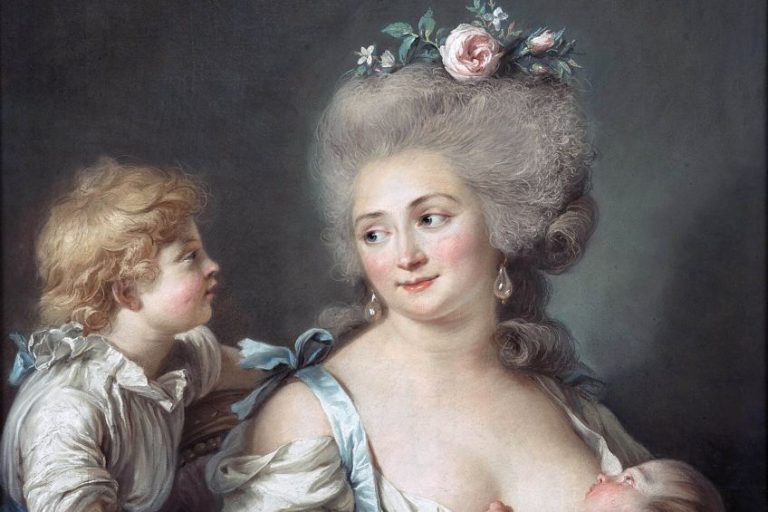
French Art – A Deep Dive into the Art and Culture of France
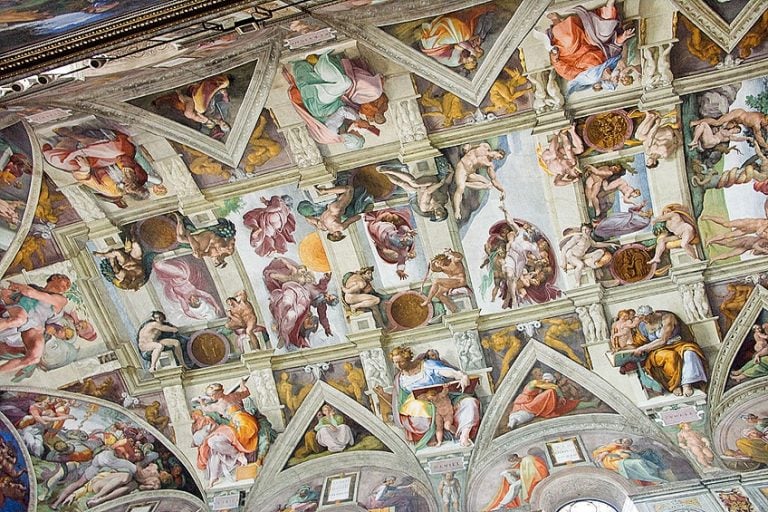
Fresco Painting – The Age-Old Art of Applying Paint to Plaster

Color Field Painting – The History of Color Block Art
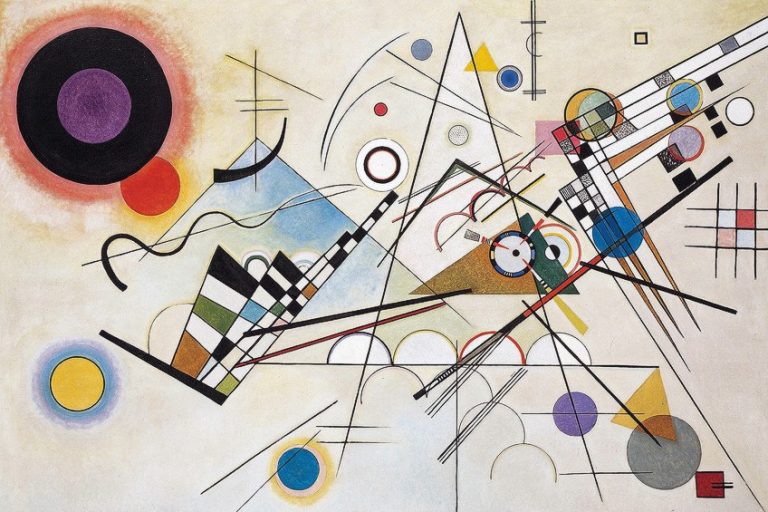
Non-Objective Art – Finding a Non-Objective Art Definition
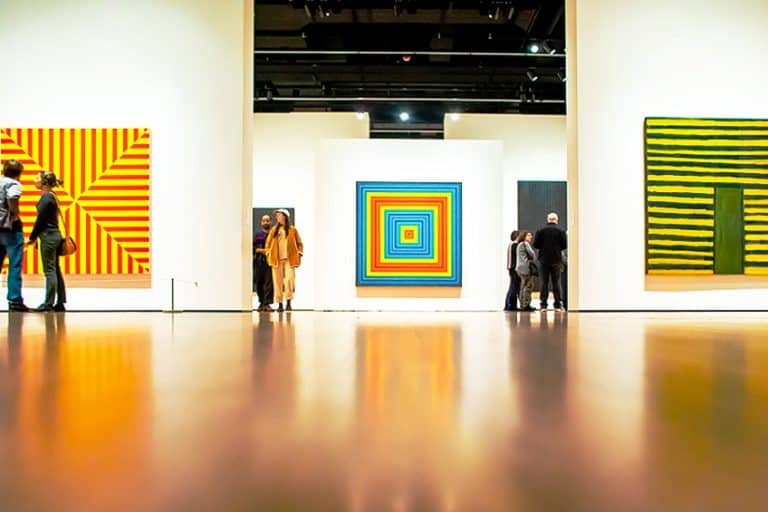
Frank Stella Dies at 87 – A Legacy of Innovation
One comment.
It’s great that you talked about how there are various kinds and genres of art. I was reading an art book earlier and it was quite interesting to learn more about the history of art. I also learned other things, like the existence of online american indian art auctions.
Leave a Reply Cancel reply
Your email address will not be published. Required fields are marked *
Save my name, email, and website in this browser for the next time I comment.
The Most Famous Artists and Artworks
Discover the most famous artists, paintings, sculptors…in all of history!

MOST FAMOUS ARTISTS AND ARTWORKS
Discover the most famous artists, paintings, sculptors!


What Makes Art so Valuable and Expensive?

Have you ever pondered the extraordinary worth attached to modern art pieces? How does a seemingly simple painting or sculpture evolve into a multimillion-dollar masterpiece? What criteria underlie the valuation of these artworks?
Modern art, a genre-spanning from the 1860s to the 1970s, encompasses a diverse array of styles, including Impressionism, Cubism, Surrealism, and more. Visionaries such as Vincent van Gogh, Pablo Picasso, Frida Kahlo, Andy Warhol, Ana Mercedes Hoyos, and Banksy, have left an indelible mark with their innovative expressions of thoughts and emotions. However, the journey from a canvas to a skyrocketing price tag is a complex one. Let us delve into the pivotal factors that shape the value of modern art:

Supply and Demand: A Delicate Balance
At its core, economics dictates that the price of a product hinges on two fundamental elements: desire and scarcity. The world of art adheres to this principle. If a piece is both rare and highly coveted, its value soars. Take, for instance, van Gogh’s paintings. During his lifetime, he sold just one, yet today they command astronomical prices. His “Portrait of Dr. Gachet” fetched an astonishing $82.5 million in 1990. Conversely, Andy Warhol, a prolific creator, enjoyed immense popularity during his time. His work remains expensive due to its iconic status, exemplified by the sale of “Silver Car Crash” for a staggering $105.4 million in 2013.
Quality and Condition: The Marks of Authenticity
The concept of quality and condition revolves around the intrinsic value of an artwork. Pieces that exhibit exceptional craftsmanship and meticulous execution inherently possess greater worth than replicas or shoddily produced counterparts. The aesthetic appeal and structural integrity of an artwork are reflections of the artist’s dedication, technique, and choice of materials.
Provenance and Authenticity: Uncovering the Story
The origin and history of an artwork significantly influence its value. Artwork that boasts a well-documented lineage of ownership and exhibition history commands a higher price. Moreover, when experts or the artist themselves verify the authenticity of a piece, its value surges. Understanding the provenance of an artwork and confirming its authenticity bestows upon it a sense of importance and reliability.
Reputation and Recognition: Elevating Artistry
The reputation and recognition of both the artist and the artwork play a pivotal role in determining their value. Artists who have received accolades, exhibited in prestigious venues, set records, or left an indelible mark on their contemporaries enjoy a higher standing. Artworks that have garnered critical acclaim, media attention, or admiration from collectors also carry a premium. The collective reputation and recognition of an artist and their creations amplify their influence and desirability.
Trends and Tastes: Shaping the Art World
The evolving landscape of art is influenced by societal trends and prevailing tastes. Art that reflects or reacts to the current socio-cultural climate holds greater worth than art that remains stagnant. Furthermore, artworks that resonate with emerging or expanding demographics gain heightened value. The dynamic nature of art preferences keeps artists and collectors on their toes, as they navigate the ever-shifting currents of artistic appreciation.
In conclusion, the value of modern art is a multifaceted puzzle. It is essential to acknowledge that the appreciation of art is profoundly subjective. The significance and allure of an artwork ultimately lie in the eyes and sensibilities of the beholder. The price one is willing to pay for art is a personal declaration shaped by individual preferences, financial capacity, motivation, and emotional connection.
Let us not solely view art through the lens of monetary gains. It is a profound embodiment of human diversity, a medium that sparks ideas and contemplation. Art appeals to our senses and emotions, bestowing upon us a precious gift that enriches our lives in myriad ways.
If you’re interested in exploring more about the world of art, you can read about Arnold Böcklin’s “Symbolic Self-Portrait” , delve into the reflections of society’s undercurrents in “American Realism” , or discover how Pablo Picasso’s artistic genius was shaped by collaboration and competition in “Pablo Picasso’s Artistic Genius” . These articles provide valuable insights into the diverse facets of the art world, adding depth to your exploration of this fascinating realm.
Related Posts

- Art History
- Artist Spotlight
- Historical Figures in Art
- Making an art history comparison
- Photo of the day
A painting with a story in the Gladbrook Heritage Museum
- June 23, 2022
I was in Gladbrook, Iowa over this past weekend, traveling with family and attending the Corn Carnival. One place that I enjoyed visiting in town was the Gladbrook Heritage […]
- art archives
- New York art world in the 1980s
- New York art world in the 1990s
A trove of art articles and art history found in the furnace room
- April 5, 2016
I was recently on a quest to find some paperwork related to an old car I was ready to sell, and was digging through file cabinets looking for it. One […]

Monet’s Patron: The Dealer Who Painted a New Future for Art
- April 25, 2024
The irony of Impressionism lies in its initial rejection. The very qualities that define it – loose brushwork, everyday subjects, and bright colors – were once disliked by the traditional […]
Leave a Reply Cancel reply
Your email address will not be published. Required fields are marked *
We'll send you a bundled collection of both the Native American Indian and Mesoamerican Art Motif Coloring Pages
- Reference Manager
- Simple TEXT file
People also looked at
Review article, what is art good for the socio-epistemic value of art.

- 1 Department of Cognitive Science, Occidental College, Los Angeles, CA, United States
- 2 Department of Philosophy, Occidental College, Los Angeles, CA, United States
Scientists, humanists, and art lovers alike value art not just for its beauty, but also for its social and epistemic importance; that is, for its communicative nature, its capacity to increase one's self-knowledge and encourage personal growth, and its ability to challenge our schemas and preconceptions. However, empirical research tends to discount the importance of such social and epistemic outcomes of art engagement, instead focusing on individuals' preferences, judgments of beauty, pleasure, or other emotional appraisals as the primary outcomes of art appreciation. Here, we argue that a systematic neuroscientific study of art appreciation must move beyond understanding aesthetics alone, and toward investigating the social importance of art appreciation. We make our argument for such a shift in focus first, by situating art appreciation as an active social practice. We follow by reviewing the available psychological and cognitive neuroscientific evidence that art appreciation cultivates socio-epistemic skills such as self- and other-understanding, and discuss philosophical frameworks which suggest a more comprehensive empirical investigation. Finally, we argue that focusing on the socio-epistemic values of art engagement highlights the important role art plays in our lives. Empirical research on art appreciation can thus be used to show that engagement with art has specific social and personal value, the cultivation of which is important to us as individuals, and as communities.
“What art does is to coax us away from the mechanical and toward the miraculous. The so-called uselessness of art is a clue to its transforming power. Art is not part of the machine. Art asks us to think differently, see differently, hear differently, and ultimately to act differently, which is why art has moral force.”
— Jeanette Winterson ( Winterson, 2006 )
Introduction
Traditionally, discussion of the nature of the arts and their role in our daily lives and communities lay within the purviews of criticism, art history, and philosophy. Within the last century, there has been a growing interest by psychologists and more recently, neuroscientists, to scientifically investigate art experiences and appreciation. Broadly, questions central to this investigation include:
(a) What happens when we experience a work of art? Specifically, what are the perceptual, emotional, and cognitive processes mediating our responses to art?
(b) Can one account for variations in taste? And if so, how does one's psychology and biology contribute to those preferences?
(c) What is common about the experiences one has across different forms of art? What is distinct?
(d) Are our responses to art universal or culturally and historically situated?
(e) Are art experiences pleasurable and how is the response distinct from other pleasurable experiences?
To scientifically investigate these questions, psychologists often ask viewers to rate the aesthetic appeal of an artwork, to rate their preferences for it compared to other artworks, and to indicate their emotional responses to various works. Typical questions might include: how much do you like the artwork; how aesthetically pleasing is the artwork; and how emotionally moving is the artwork? Researchers might then analyze the extent to which ratings reflect the formal features of that artwork—e.g., how balanced the composition is, how prototypical the depictions are, or perhaps how much the statistical structure within the image parallels natural scene statistics. As such, psychologists have identified a variety of formal features that seem to influence aesthetic and preference scores, including symmetry, color, contrast, aspect ratio, prototypicality, natural scene statistics, and complexity (e.g., Berlyne, 1971 ; McManus, 1980 ; Taylor et al., 1999 ; Shortess et al., 2000 ; Graham and Field, 2008 ; Schloss and Palmer, 2011 ). Similar questions have been explored in other domains of art including music and literature (e.g., Rentfrow and Gosling, 2003 ; Koopman and Hakemulder, 2015 ). Furthermore, many researchers have demonstrated that individual differences, be they stable or transient, can influence preferences and judgments. For instance, culture and experience (e.g., Reber et al., 2004 ; Bullot and Reber, 2013 ), expertise and knowledge (e.g., Winston and Cupchik, 1992 ; Silvia, 2006 ) and current emotional state (e.g., Eskine et al., 2012 ) shape judgments. Additionally, individual differences in perceptual capacities, such as visual-object working memory (VOWM) are associated with preferences for formal features such as visual complexity within visual artworks ( Sherman et al., 2015 ). These findings aim to illustrate the importance of accounting for the between and within subject variability in preferences, emotional responses, or beauty judgments.
A complementary approach, neuroaesthetics, is concerned with investigating the neurobiological substrates of aesthetic experience. For example, studies employing fMRI often task participants with making aesthetic or emotion-related judgments, and have demonstrated that art appreciation activates a distributed network in the brain subserving three core neural systems: sensory-motor, emotion-valuation, and meaning-knowledge. Important regions linked to aesthetic evaluation and preference for art include areas related to domain-specific processing such as the visual system for visual art (e.g., the lingual gyrus, middle occipital lobe), memory recognition (e.g., fusiform gyrus, parahippocampal gyrus), higher-order conceptual integration (e.g., anterior temporal lobe), emotion and reward (e.g., the anterior insula, caudate/striatum), valuation (e.g., anterior and ventromedial prefrontal cortices), and more recently metacognition (e.g., structures within the default mode network such as posterior cingulate cortex) (for reviews and meta-analyses, see Di Dio and Gallese, 2009 ; Brown et al., 2011 ; Chatterjee and Vartanian, 2014 ; Vartanian and Skov, 2014 ).
Notably, although the aesthetic sciences broadly concern themselves with explaining art appreciation 1 , what can be gleaned from the above findings is that they have, up to this point, primarily investigated experiences of the aesthetic. That is, scientists have privileged investigating individual judgments of beauty or preference, many times ignoring socially-relevant outcomes of art appreciation or the social context of art creation and art appreciation. This is the the case within both the psychological and neuroaesthetics literatures. For example, neuroaesthetics research typically uses art (paintings, music, poetry, dance performance) as a stimulus to determine the neural mechanisms associated with preference, beauty, sublimity, and pleasure-based responses (e.g., Blood and Zatorre, 2001 ; Kawabata and Zeki, 2004 ; Vartanian and Goel, 2004 ; Jacobsen et al., 2006 ; Ishizu and Zeki, 2011 ; Lacey et al., 2011 ; Brattico, 2015 ).
Empirically investigating art appreciation in this way, however, risks conflating the arts with aesthetics. That is, it risks reducing the study of the nature of the arts to their ability to cause a particular feeling of disinterested joy or pleasure in a beholder. This reduction is reflected in (i) the way neuroaesthetics frames and understands art—namely, as an object that one contemplates and experiences in a disinterested manner, (ii) in the focus researchers place on measuring judgments related to beauty, liking, and pleasure as primary “outcomes” of the art experience, and (iii) in the contexts in which aesthetic experience is studied, often in labs on computers, removed from social and historical contexts, and in the visual arts, over short viewing times rarely exceeding 15 seconds.
The prevailing use of these measures and contexts implies that what defines an art experience is the pleasure caused by interacting with something aesthetically pleasing, and that the primary scientific task is describing the perceptual and emotional processes related to, or which constitute, a moment of liking or joy. Such a reduction limits the range of human experiences and capacities identified as appropriate objects of scientific investigation in this field. Moreover, “able to cause aesthetic experience” is a philosophically dubious conception of the nature of the arts, and can be particularly problematic in cases where “beauty” or “disinterested pleasure” is not a productive theoretical framework for evaluation of an artwork, as in some modern and contemporary art forms (e.g., see Carroll, 2012 for review). Similar methodological critiques have been presented within music as well as other domains of art (e.g., Sloboda et al., 2001 ; Brown and Dissanayake, 2009 ). For instance, within the domain of music, much of the research investigates individuals' cognitive and emotional responses to passively listening to a musical piece (as well and the perceptual features that prompt such a response) discounting the social functions of the work.
Frameworks from the history of philosophical aesthetics and contemporary methodological discussion within empirical aesthetics can be particularly instructive for psychologists and neuroscientists interested in investigating the arts. As indicated above, philosophical attempts to define the nature of art by appeal to the kind of experience often studied by aesthetic science have been criticized for failing to fully capture or appreciate the social, cultural, or historical situatedness of the art-object or the person whose experience is being studied. Some empirical contextualist theories take a similar stance, recommending scientific investigations that go beyond the “basic exposure” mode of art appreciation, noting that the kind of knowledge one would gain from perceptual exploration removed from historical understanding is “shallow at best” ( Bullot and Reber, 2013 ). Rather, psychology must embrace an enriched understanding of art appreciation by investigating how, for example, an individual causally reasons about the observable features and attributions of an artwork, “mindreads” or attempts to cognitively model the artist and her intentions, experiences discovery or understanding-based emotions, and generates theories about the relevant content, form, and function of the artwork ( Bullot and Reber, 2013 ).
Relatedly, we suggest that the current scientific research on art appreciation discounts what many would consider the very essence of art: its communicative nature, its capacity to encourage personal growth, its ability to reveal deep aspects of the human condition, to challenge preconceptions, to help us reconceptualize a question we are grappling with, and to provide clarity on ambiguous concepts or ideas. A host of philosophical, art-historical, and critical theories of the nature of the arts, art appreciation, and artistic creative practice suggest a more general theoretical shift away from the project of empirically studying art-objects by focusing on individuals' phenomenological experiences, and toward one which recognizes that individual psychological experiences or habits are shaped by engaging with the arts as part of our communities and social fabrics (e.g., see Carroll, 2012 for review). For instance, some philosophers and scientists alike have claimed that the arts, broadly conceived, have moral value, suggesting that engaging with art can be potentially transformative, for it encourages us to consider the welfare and good of other people, enhancing both our moral compass and self-knowledge (e.g., Nussbaum, 1990 ; Koopman and Hakemulder, 2015 ).
Our primary goal here is to argue that a systematic scientific study of art appreciation must explain the potentially broad-ranging and diverse social outputs of arts engagement, and thus, must go beyond measurements of aesthetic pleasure or liking. We advocate for the need to embrace an expanded empirical research program characterized by reframing the arts as socio-epistemically valuable —that is, specifically useful for gaining knowledge and insights about oneself and society. Importantly, we suggest that an empirical research program that recognizes the arts as social practices (which we expand in Section Arts-Appreciation as Socio-epistemically Valuable) can potentially unify prior research and more clearly specify the types of investigations needed to achieve a fuller understanding of art appreciation.
For instance, information-processing accounts of art appreciation aim to understand the relationship between inputs (e.g., formal features, transient individual differences like emotional or mood states, and more sustained individual differences in personality, culture, historical contexts, or expertise), processing mechanisms unfolding related to the art experience (e.g., the psychological and neurobiological substrates of perceptual, cognitive, and emotional processes, or disruptions to one's self-schema), and outputs (e.g., appraisals/judgments of liking, epiphany/transcendence, self/other-understanding; well-being). Fitting to our art-as-social-practice view, we suggest that researchers might begin to investigate the information-processing system through the lens of socially-related outputs, such as self and other understanding, rather than through the lens of aesthetic outcomes of art (see Table 1 ). That is, how do brain structures like the default mode network, which is recruited during art appreciation, contribute to socio-epistemic outcomes of art appreciation like self-understanding? This focus may reveal the need to develop experimental approaches better suited to evaluating the nature of the arts which recognize how creative practices and appreciation are cultivated socially, over long periods of time, and sustained both at the community and the personal level.
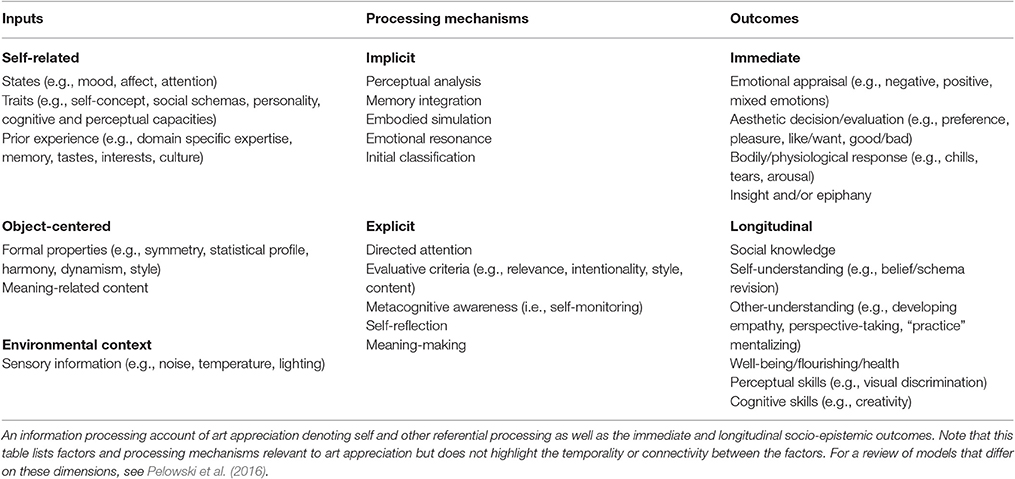
Table 1 . Factors influencing art appreciation.
Below, we start by framing the arts as social practices that are embodied, enactive, and communicative. Although our art as social practice organization is not in contrast to information processing accounts, it importantly allows us to focus empirical evaluations on the cluster of skills that are developed through art appreciation. Among these skills, we focus specifically on those we refer to as socio-epistemic, and demonstrate that self- and other-understanding are both socially relevant and meaningfully cultivated through sustained art engagement.
Arts-appreciation As Socio-Epistemically Valuable
We begin by situating arts engagement, and specifically art appreciation, as a communicative, dialogic, dynamic, and transformative practice rather than as passive contemplation of beautiful, pleasurable, or otherwise aesthetically interesting objects. We argue that an “art as social practice” framing like this raises more relevant, interesting, and psychologically rich questions about the arts than does the traditional framing of art appreciation as reducible to aesthetic experience.
The Arts as Social Practices
In Art Rethought: The Social Practices of Art (2015), Wolterstorff argues that we should adopt MacIntyre's account of social practices as a framework for understanding the nature of the arts ( Wolterstorff, 2015 ). MacIntyre (1984) defines social practices as:
…coherent and complex form[s] of socially established cooperative human activity through which goods internal to that form of activity are realized in the course of trying to achieve those standards of excellence which are appropriate to, and partially definitive of, that form of activity, with the result that human powers to achieve excellence, and human conceptions of the ends and goods involved, are systematically extended (p. 187).
As forms of human cooperative activity, they exist within social groups, both large and small, and persist through time. Consider, for example, the social practice of portraiture, a genre of painting which depicts a human subject, often in which the face is the main theme. This genre has existed historically across many, varied communities, and the genre develops and is shaped by the cultural, economic, and moral commitments of various social groups, in addition to the artistic styles and technological developments within these communities. “Painting a portrait” is done with respect to norms, standards, and expectations of the genre that are, in an important sense, public. Moreover, these norms and standards constitute criteria for having created an excellent portrait. That is, we can individually and collectively deliberate and debate about whether some particular artwork is a portrait, or is a good portrait. Furthermore, accomplishments such as ‘mastering the ability to depict a complex emotional expression in a two-dimensional medium’ (Leonardo DaVinci's Mona Lisa ), or ‘successfully communicating the cruelty of poverty and dignity of poor people by rendering sympathetically and beautifully the humanity of someone who is poor’ (e.g., Dorothea Lange's, Migrant Mother ), are goods that can only be achieved through the practice of portraiture. Finally, the genre, itself, develops throughout time, within different communities. There are innovations in portraiture with respect to artistic style and with respect to technology. Consider, for example, how Henri Matisse's Green Stripe (Portrait of Madame Matisse) both radically departs from and conforms to the norms of the practice, or how the invention of photography changes and informs the meaning of “creating a portrait.” Matisse's innovation and the development and use of photography for artistically depicting human faces, both enrich our understanding of the aims of art and the possibilities of human experience.
By following this emphasis on the arts as practices, we mean to shift attention to art creation and art appreciation as activities “we do,” from the conception of art appreciation as passive reception of perceptual information from art-objects. In doing so, we do not commit ourselves to any particular theory or definition of art, be it the institutional view ( Danto, 1964 ; Dickie, 1974 ), which holds that artworks are artifacts that have been identified as such by persons appropriately situated with respect to “the artworld,” 2 or the historical ( Levinson, 1979 ) or narrative views ( Carroll, 1988 ), which hold that artworks can be identified by relationships to existing artworks. Instead, we follow these traditions, and others in anthropology and sociology (e.g., Becker, 1982 ; Dissanayake, 1990 ; Gell, 1998 ; Harrington, 2004 ), in their recognition that both arts appreciation and art creation, whatever they may be, are culturally situated within human communities 3 . We contend that this very foundational and basic recognition is largely absent or significantly downplayed in current empirical work, and it is this sense of social—longstanding practices, embedded in the fabric and life of communities—that is foundational to our proposed framework.
The Arts and Socio-Epistemic Skills
One model for how to understand art appreciation as active engagement in a practice can be found in Kieran (2012) . There, he argues that art appreciation is an intrinsically valuable skill that allows one to cultivate “excellences of character,” because practiced arts engagement allows one to better imagine and critically examine not only aesthetic qualities of artworks, but also “artistic originality, emotional expression, insight and moral understanding.” (p. 23) This notion of skill has a few different features that matter a great deal to an expanded empirical research program: (1) art appreciation is learned through sustained practice, suggesting its intrinsic relationship to the culture and community, or, at least, to other people; (2) is a capacity that is developed over non-trivial lengths of time; and (3) may be relevant to other domains, as skills can be transferable.
Drawing from other philosophical literature on art appreciation, we see a focus on what we refer to as socio-epistemic skills. Included in this category may be capacities like good judgment, richer sensitivity to detail, or, following Hume, “delicacy of imagination, good sense, comparative experience, and freedom from prejudice” ( Kieran, 2012 , p. 23). What makes these skills social is their relationship to one's ability to better understand oneself and other people, and to potentially revise one's own moral, political, or social commitments 4 . Although the mechanism for enhanced understanding of self and others is not fully theorized in the philosophical literature, it is often taken to be developing a kind of sensitivity to detail, context, or nuance (e.g., Murdoch, 1970 ; Nussbaum, 1990 ; Carroll, 1998 ).
Empirical research complements the philosophical framework above by helping us understand the mechanisms that underwrite the particular socio-epistemic skills of other-understanding and self-understanding 5 . We choose to highlight self-understanding and other-understanding because they align well with what many think of art appreciation as doing: helping them see others and the world from a different point of view, altering their perspectives, and helping them to understand more about themselves (e.g., what moves them, or what makes them uncomfortable). At the same time, we do not mean to commit to any specific or direct causal pathways between cognitive processes, art appreciation, and other- or self-understanding. Rather, we mean to identify this as an open area of much needed investigation.
Before turning directly to this discussion, we also note that embracing this theoretical shift toward understanding the arts as social practices would allow us to explain how art appreciation is partially constitutive of living a flourishing human life. A longstanding empirical program has been to connect the arts (both appreciation and creation) to happiness, well-being, or flourishing. For instance, Cuypers et al. (2012) demonstrate through a large-scale population study that both art appreciation and art creation are associated with increased well-being (as measured by perceived health, life satisfaction, and anxiety and depression scores). Philosophical conceptions of eudaimonia contend that a flourishing human life centrally involves, at least, the use of skills or excellences of character the development of which are intrinsically rewarding, and the exercise of which are, thereby, pleasurable. Thus the shift we are recommending does not discount previous research, but rather, locates and explains the liking, preference, and pleasure responses to art-objects as well as the experience of being moved, as important aspects of the skill-based conception of art appreciation. This also allows us to strengthen arguments for the value of the arts that does not embrace crass instrumentalism, but rather, is capable of explaining the central role of the arts in human life ( Kieran, 2012 ). Moreover, regardless of whether one is committed to the broader eudaimonistic theory of well-being, or the claim that the development of human excellences and skills is central to that flourishing, those who hold that art appreciation is capable of developing the capacities and related skills of other-understanding and self-understanding are making empirical claims that empirical aesthetics can evaluate. To that end, a complete model of aesthetic appreciation will also need to contend with these claims and find a place for these socio-epistemic “outputs” in their models.
In the sections that follow, we use philosophical discussions to frame and suggest two lines of empirical inquiry within this theoretical orientation of the arts as social practices. The first, self-understanding, discussion of which is nascent in both the psychological and philosophical literatures, asks whether and how art appreciation as a practice can lead to a richer understanding and appreciation of one's own moral values, commitments, and conception of who and what one is. The second, other-understanding, more fully developed in both literatures, asks whether and how art appreciation as a practice can lead to a better understanding of the emotional and cognitive states of others, and the potential moral and social value of such an understanding. We conclude with a discussion of how such a research program may be envisioned and developed moving forward.
Art Engagement As a Path to Self-Understanding
As discussed above, in this section we attempt to lay a foundation for a line of inquiry into how self-understanding may be enhanced by engaging in practices of art appreciation, as part of our suggestion that conceptualizing the arts as social practices would be an appropriate and fruitful framework for psychologists and neuroscientists to embrace.
Philosophical Conceptions of the Relationship between Art Appreciation and Self-understanding
In philosophy, the term “self-knowledge” often refers to knowledge of one's own mental states—that is, knowledge of our own beliefs, thoughts, or sensations. In contrast, “knowledge of the self” can refer to knowledge or understanding of one's “self” and its nature. Following Gertler (2015) , we may include under this heading four different debates about our understanding of ourselves, as selves: the nature of self-identification (i.e., one's ability to distinguish one's self from others); whether self-awareness is a mechanism for grasping the nature of the self; whether self-awareness is a means to grasping one's personal identity over time; and, whether and what sort of self-understanding is necessary for rational or moral agency.
Insofar as engagement with the arts is able to enhance some notion of self-understanding, it fits most comfortably within this final debate: the sort of self-understanding necessary for rational or moral agency. Martin (1985) , providing one way of enriching this “necessary for agency” conception, claims that self-understanding is an achievement . He explains that developing a “justifiable and meaningful perspective on our lives” often calls for “appropriate adjustments in attitude, emotion and conduct,” and realizing these things is something that we work for, or that we strive to accomplish. (p. 2) Relevant to this kind of self-understanding is what we may refer to as “self-identity”—“individuals' subjective senses of who they are—their own self-images” ( Martin, 1985 , p. 5). Further, we may consider the heart of self-identity as a set of commitments or values—be they intellectual, artistic, moral, or religious—that organize individuals' behavior, attitudes, and beliefs. Someone who has proper self-understanding not only recognizes and affirms her central commitments and values, but also acts and feels according to these commitments and values. In this way self-understanding is a socio-epistemic skill because one's ability to recognize and act on her central values (e.g., feel and act compassionately) concerns a social ability. The content of the values or commitments substantially refer to other people, institutions, histories, and communities, and the attitudes and behaviors indicated are learned and exhibited within communities and relationships.
Philosophers who defend the view that art appreciation is a form of moral understanding can inform our conception of how art appreciation may enhance self-identity and self-understanding. A particularly influential view is Noël Carroll's clarificationism ( Carroll, 1988 ). Unlike the sciences, which allow individuals to acquire new propositional knowledge, Carroll argues art appreciation is capable of deepening our existing knowledge, something he refers to as “understanding.” Carroll suggests that the narrative arts, in particular, encourage us to apply our moral knowledge and emotions to a specific case, which aids in the development of our capacity to manipulate, refine, or clarify what we know, and to then intelligibly apply that knowledge. Carroll uses the example of Crime and Punishment to explain this point. It would be absurd to claim that the reader learns the truth of the proposition “murder is wrong” from her reading of the novel. In fact, it may be that a reader would already need to have this bit of propositional knowledge in order to make sense of the novel in the first place. Yet, engagement with the novel can be a source of moral understanding and self-development. Engagement may help give shape to, clarify, or deepen one's understanding of the horror of killing, and of the nature or importance of guilt, redemption, and moral character. Moreover, insofar as these moral beliefs and values are part of the central commitments and values that constitute your self-identity, engagement with the novel can help you know yourself better.
That art is a context for deepening understanding rather than gaining propositional knowledge is also taken up by Lopes (2005) . There he argues that the kind of seeing (“seeing-in”) cultivated by practiced visual art engagement enriches moral sensibility by enriching the suite of intellectual resources that make the viewer reliable at discriminating morally relevant features of situations. (p. 180) Part of the moral sensibility Lopes describes includes what he refers to as a repertoire of moral concepts (e.g., solidarity, grief, violation). Some visual art, though not all according to Lopes, can be used to deepen and understand those concepts. In this way, some visual art can communicate moral ideas in new or challenging or poignant ways that cause one to revise an important or closely held moral value, and thus, can be important to developing one's self-understanding.
Although the philosophical discussion of self-understanding or transformation through engagement with the arts primarily concerns moral or social knowledge, we see no reason to believe it must be limited to these contexts. The focus on moral knowledge in the philosophical literature may be occasioned by the felt need to distinguish the arts from the sciences as a means of knowing, as the latter tend not to have this moral or social focus 6 . However, we may think of the arts as a path to non-moral self-understanding as well, or, as above, as about non-moral yet central commitments and understandings important to our self-identity. For example, the works displayed during the 2013–2014 Los Angeles County Museum of Art retrospective of the work of Light and Space artist James Turrell, were described by many (critics and lay people alike) as transformative . The immersive light environments cause one's own perception to become the object of reflection, and led many to a deeper understanding of themselves and their relationship to the external world, deepening their conception of themselves as embodied beings whose access to the world is mediated by a visual perceptual faculty with particular features, limitations, and abilities, and of light, itself, as a physical substance. This fact (that perception is mediated by light) is not one that people learn from this exhibit; people learn that in middle school science classes. But being confronted with artistic works that exploit and make manifest this fact nevertheless affords viewers an understanding of the significance of this fact.
Enhanced Self-understanding through Art Appreciation: Empirical Evidence
As in the philosophical literature, there also seems to be limited work in the psychological literature focused on the importance of art engagement in cultivating self-understanding, although research on self-reflection may speak to the psychological mechanisms that make possible the socially-relevant conception of self-identity as described above. Following Koopman and Hakemulder (2015) , self-reflection refers to “thoughts and insights on oneself, often in relation to others and/or to society” (p. 82). This type of introspection often relates to one's emotions (e.g., monitoring current states and/or comparing those states to prior states), memories, values, and beliefs, and is associated with positive consequences (e.g., better mental health, well-being, increased capacity for self-regulation).
The literary arts are a domain in which self-reflection has received more comprehensive attention. Koopman and Hakemulder review evidence suggesting that self-reflection is elicited when one reads literary texts characterized by unconventional syntax or semantic features. Specifically, they review empirical work showing that self-reflection occurs in scenarios in which “(i) [reader's] previous personal experiences are evoked by descriptions of characters, places and events, (ii) [in which] readers experience emotional responses to the characters, and (iii) [in which] readers perceive the text itself, the artifact, as striking” (p. 95). Self-reflection elicited through reading in these contexts is likely to relate to one's self-understanding and identity both in moral and non-moral contexts. Similarly, some members of the medical community have embraced the idea that the literary and narrative arts facilitate self-reflection. Brady et al. (2002) posit that practicing self-reflection outside of a clinical context, and particularly through art appreciation, could lead to better doctor-patient relationships and, thereby, better patient outcomes.
With respect to visual art, research in neuroaesthetics has also suggested that when engaging with artworks that are emotionally moving and potentially transformative, individuals may have an inward, self-reflective focus. Here, being moved refers to “intensely felt responses [such as tears or chills] to scenarios that have a particularly strong bearing on attachment-related issues—and hence on prosocial bonding tendencies, norms, and ideals—ranging from the innermost circle of one's personal life … to higher-order entities of social life (one's country, social and religious communities)” ( Menninghaus et al., 2015 , p. 8; see also Hanich et al., 2014 ; Wassiliwizky et al., 2015 , 2017a ). Recent work by Wassiliwizky et al. (2017b) suggests, for example, that poetry containing a socio-cognitive component (e.g., prose addressing other people or personifying nature) is particularly moving, leading to chills and a response in brain areas involved in self-reflection (e.g., precuneus). When an artwork moves a beholder, she likely experiences an intense emotional response as well as explicitly reflects on her experience, potentially exercising self-understanding (as well as other-understanding, which we expand on in the next section). In this way, understanding the experience of being moved (rather than just focusing on aesthetic evaluation) indicates a promising avenue of research for neuroaesthetics to develop in line with our recommendation to adopt a social practice model.
Indeed, Vessel et al. (2012 , 2013) have demonstrated that during intensely moving aesthetic experiences, the default mode network—a network of brain areas including the precuneus, medial frontal cortex, inferior parietal cortex, and medial temporal cortex known to be involved in self contemplation, self reflection, and self-referential thought—is recruited. In Vessel et al.'s (2012 , 2013 ) studies, participants were tasked with attending to a set of visual artworks and judging how moving each one was while their brain activity was recorded in a scanner. Their finding that DMN activity was higher for artworks rated as highly moving relative to those rated lower on the scale may be interpreted as an inward, self-reflective focus that co-occurs with or is prompted by being emotionally moved. Additionally, this finding is consistent with research demonstrating that the DMN is recruited during other self-referential types of tasks involving self-identity (namely, making judgments about yourself or close others), moral decision-making, and theory of mind attributions ( Northoff and Bermpohl, 2004 ; Northoff et al., 2006 ).
Psychologists have also described models that center the idea that art appreciation recruits metacognitive processes and promotes self-reflection and transformation. For example, Pelowski and Akiba (2011) (see also Pelowski, 2015 ; Pelowski et al., 2017 ) argue that influential empirical studies of aesthetic experience focusing on understanding the processes which lead to cognitive mastery of an artwork along with perceptual pleasure are “often divorced from a viewer's personal beliefs and identity” and “preclude the possibility for art to [truly] mark and transform lives” (p. 81) namely because they do not directly address discrepant experiences during an art encounter. According to Pelowski and Akiba's account, the self-reflective processing that occurs when a beholder's expectations have been violated (e.g., confusion about meaning) marks the beginning of a meta-cognitive re-assessment of an artwork, eventually leading to self-schema transformation. Similarly, Lasher et al. (1983) argue that the arts are central for mental and emotional growth because they offer opportunities for representational conflicts that, when resolved (in their case, often unconsciously) provide a way to restructure and unify initial mental representations. The process of defamiliarization, “becoming unsettled,” and self-reflecting, then may be crucial to deepening self-understanding.
In a more recent paper, Pelowski (2015) offered an empirical approach to studying art experiences as they relate to self-transformation and understanding. Specifically, Pelowski suggests that feeling like (or actually) crying during an art experience is a physical indicator of self-reflection, shifted perspectives, and self/schema changes. As a first foray into testing his model, Pelowski conducted a series of exploratory studies at several museums collecting both physiological data and self-reports from museum-goers. He demonstrated that feeling like crying while viewing art is correlated to increased self-awareness, feelings of epiphany and insight, as well as to mixed emotions corresponding to being moved. Although his empirical findings are specific to the visual arts, his model broadly appeals to all arts, as tears or chills responses are pervasive across all arts domains ( Pelowski, 2015 ). Pelowski's approach is particularly instructive as it offers a means to frame socio-epistemic skills such as self-understanding within information-processing accounts, arguing for the importance of empirically investigating how each processing stage corresponds to self-related outcomes.
Importantly, these ideas are markedly different from the more typical information-processing accounts of aesthetic experience (e.g., Leder et al., 2004 or Chatterjee, 2004 ), which focus more on successful assessment of an artwork's formal information (perceptual and cognitive mastery) in the service of emotional appraisals. This traditional approach de-centers the importance of self-reflection or cognitive growth as an outcome or aspect of art appreciation. In contrast, the paradigm we suggest (which parallels Pelowski's) posits that although detached, the contemplative pleasure, which may be an outcome of art appreciation, is not valuable merely for its own sake, but also instrumentally valuable for deepening one's self-understanding.
Although the reviewed studies are not direct evidence that self-understanding is developed by art appreciation, they suggest, at least, that self-reflection, a process relevant to cultivating self-understanding, is prompted by moving art experiences. More research will be needed to understand the extent to which and how neural mechanisms correlated to self-referential processing are recruited during art appreciation. Candidate regions for investigation are those within the cortical midline structures including the orbitomedial prefrontal cortex (OMPFC) implicated in the continuous representation of self-referential stimuli and in processing emotional stimuli independent of sensory modality, the dorsomedial prefrontal cortex (DMPFC) implicated in evaluation of self-referential stimuli, the anterior cingulate cortex (ACC) implicated in monitoring of self-referential information, and the posterior cingulate cortex (PCC) and adjacent precuneus thought to be involved in self-reflection and the integration of self-related representations (e.g., Northoff and Bermpohl, 2004 ). The partially overlapping default mode network as described above will also be critical to evaluate in the context of art appreciation.
Art Engagement as a Path to Understanding Others
Turning away from self-understanding, in this section we lay a foundation for a line of inquiry into how other-understanding may be enhanced by engaging in practices of art appreciation. Though here we highlight self- and other-understanding as separate socio-epistemic skills, we also point to the importance of investigating these “outcomes” as highly related. As before, the aim of this section is to build our suggestion that conceptualizing the arts as social practices would be an appropriate and fruitful framework for psychologists to embrace.
Philosophical Conceptions of the Relationship between Art Appreciation and Other-Understanding
Philosophers of art commonly contend that art appreciation enables us to understand others better by encouraging us to take on their viewpoints, to metaphorically take a walk in their shoes, to feel their pain. Through art appreciation we can understand ourselves as connected to one another, by recognizing others' emotions, actions, and perceptions as fundamentally similar to our own, or, more dramatically, by feeling others' emotions. For instance, in Cohen's (1993) discussion of his ambivalence toward ontological questions about the nature of art and the distinction between high and low art, he describes a memorial service in which his friend's favorite musical selections were played. Reflecting on the meaningfulness and appropriateness of this practice of playing music that someone cared for at their funeral, Cohen writes:
My friend has died and is not present. I listen to music I know he cared for. It is a fact about my friend that he cared for this music, perhaps even a constitutive fact about his sensibility: it partially defines who and what he was. It is, thus, an entrance into that sensibility. I sit listening, not merely thinking that this music meant something to my friend, but bending my imagination to the task of reaching and comprehending an aspect of my friend which responded to this music, that is, feeling what it was to be my friend (p. 154).
Here, Cohen understands artistic appreciation not only as (appropriately) playing a central role in an important social ritual of mourning, but also, or perhaps because it is one way of being in community with someone else. In this case, the mind, sensibility, or self of the person who is no longer present is accessible through attending closely to the music he loved. Similarly, Joseph Conrad characterizes the emotional sharing involved in artistic activity as:
the subtle but invincible conviction of solidarity that knits together the loneliness of innumerable hearts; to the solidarity in dreams, in joy, in sorrow, in aspiration, in illusions, in hope, in fear, which binds men to each other, which binds together all humanity—the dead to the living and the living to the unborn (cited in Goldie, 2008 , p. 192).
This notion, that the arts are an arena for interaction and potential emotional sharing between artists, beholders, and other past, present, and future beholders has an important history stretching back to at least Tolstoy (1899) , if not to Aristotle.
The kind of interaction or connection art facilitates has been thought to lead to a fuller and morally important understanding of others and oneself. Kieran (1996) develops a notion of “imaginative understanding,” a skill promoted by the arts, as striving to “appreciate what the appropriate way of looking at and acting in the world is…typically…the appropriate way to feel for, to regard, and to respond to others” (p. 341). In this way, art appreciation, by promoting imaginative understanding, facilitates good moral judgment by enhancing our moral perception and sensibilities, especially with respect to the lived experiences of other people 7 .
Developing a similar line of thought, some scholars have suggested that reading literary fiction creates aesthetic distance, which “allow[s] [readers] to experiment more freely with taking the position of a character different from themselves, also in moral respects” ( Koopman and Hakemulder, 2015 , p. 92). That is, the dynamic process occurring during art appreciation is a form of socio-cognitive and emotional training, granting viewers the “time and privacy to learn to deal more strategically with” real life scenarios in a safe, “distant” space (this idea has been discussed by Oatley, 1999 , 2016 ; Robinson, 2005 ; de Botton and Armstrong, 2013 ; Koopman and Hakemulder, 2015 ; Menninghaus et al., 2017 ). Despite this “distance” or, perhaps because of it, one can become deeply invested in fictional characters, emotionally engaging with them, and generating cognitive models of character's minds, just as one does in real social scenarios 8 .
That arts appreciation can deepen one's moral landscape by cultivating other-understanding is an empirical claim with potentially far-reaching consequences 9 . This idea has served as a theoretical foundation for arts-based therapies aimed at developing, for example, autistic children's social skills and theories of mind (see: arttherapy.org). Perhaps most robustly, as we briefly mentioned, in recent decades medicine has increasingly turned to the arts to help students and professionals cultivate proper self- and other-regarding dispositions ( Shapiro et al., 2009 ). For example, Columbia University's Masters of Science curriculum in Narrative Medicine uses the arts and humanities to “imbue patient care and professional education with the skills and values of narrative understanding” (see: http://ce.columbia.edu/narrative-medicine ). Some have suggested that arts-based interventions help physicians become more empathic and culturally-sensitive, which then leads to better patient health outcomes (e.g., Novack et al., 1997 , pp. 502–509), whereas others have focused on the importance of reflection and imagination for developing insight, emotional understanding of patients, or other valuable “patterns of knowing” (e.g., Berragan, 1998 ; Rodenhauser et al., 2004 ; Averill and Clements, 2007 ).
These theoretical applications demonstrate the importance of reviewing the available empirical evidence that aligns with an argument that art appreciation cultivates other-understanding, the importance of understanding the psychological mechanisms underlying other understanding, as well as the importance of establishing norms for empirically investigating more fully the socio-epistemic outcomes and values of art appreciation.
Enhanced Other-Understanding through Art Appreciation: Empirical Evidence
Psychological research suggests that there are (at least) two related ways we can come to understand other people and their experiences: (i) cognitively, and (ii) emotionally “resonating” with others' experiences. Cognitive empathy, also often called “cognitive perspective-taking,” “theory of mind,” “mentalizing,” or “mindreading,” 10 refers to an individual's capacity to model others' experiences by making inferences about their intentions and predictions about future actions based on that mental representation. Although this cognitive process reflects one's capacity to model other people's minds, it crucially does not require emotional investment (e.g., I may understand that you are anxious but I do not feel that way myself).
Another way, then, to understand other people is to have an “insider” view by actually experiencing what the other person is experiencing. This “catching” of another person's experience is what most scholars refer to as empathy. Although there are many definitions for empathy in the psychological and philosophical literature (see Batson, 2009 ), most scholars broadly agree that there are two key criteria characterizing empathic responses. Firstly, empathy involves an affective capacity to recognize and resonate with others' emotions (also widely called “emotional contagion” or “affect sharing”). The affective response should be isomorphic with another person's affective state ( Eisenberg and Fabes, 1990 ; De Vignemont and Singer, 2006 ). That is, one must experience the same emotion as another person, rather than simply respond emotionally to someone else's emotion (e.g., happiness in response to someone else's misfortune would not be isomorphic). This isomorphism is emphasized in the literature as distinct from related phenomena such as sympathy, which may be emotionally powerful but is usually thought of as feeling “for” rather than feeling “with.” Secondly, empathy should involve an awareness of the source of one's affective response; that is, a mechanism to distinguish between self and other. Imitation or emotional contagion alone, seen even in young infants, does not then reflect empathy (e.g., De Vignemont and Singer, 2006 ), as true empathy requires a more developed sense of self, agency, and other. Here, we will refer to this process as affective empathy.
Echoing the philosophical discussion above, a wide empirical research program has suggested the social and moral importance of both affective empathy and cognitive empathy, arguing that they are critical for social development and successful social interaction. Individuals with impaired (or a lack of) affective empathy are often characterized as psychopathic (e.g., Hare, 1991 as cited in Blair, 2005 ), and individuals with impaired theory of mind, a characteristic of autism, exhibit a host of social deficits including difficulties communicating, understanding others' thoughts and desires, recognizing and imitating others' facial expressions, among other issues (e.g., Blair, 2005 ). Moreover, although there might sometimes be negative consequences of increased empathy (e.g., favoring social “in-groups”; in Bloom, 2017 even goes to suggest that empathy has more costs than benefits), cognitive and affective empathic capacities in many ways provide a foundation for moral behaviors ( Decety and Cowell, 2015 ). For instance, even short-term manipulations of cognitive perspective-taking can lead to increased feelings of social affiliation, perceived similarity, perceived closeness, intergroup understanding, desire to engage in intergroup contact, and to prosocial behaviors such as increased cooperation, sharing, comforting, and helping even in situations where prosocial attitudes might be more difficult to adopt (e.g., Stephan and Finlay, 1999 ; Bodenhausen et al., 2009 ; Wang et al., 2014 ) 11 .
In addition to its social importance, empathy provides an individual with knowledge about the environment without having to actually experience it oneself; for example, seeing someone get burned when they touch a hot stove or get bruised when they fall on a pavement is informative enough to attach appraisals to those situational contexts without having to experience the pain oneself ( De Vignemont and Singer, 2006 ). This characteristic of empathy resonates with the aesthetic distance conception of fiction above, explaining how art appreciation could be a “safe space” for understanding others' difficult or taxing emotional experiences.
If art appreciation indeed enhances other-understanding, it would be reasonable to expect that we would find evidence, at least in some contexts, that engaging with art, be it viewing visual art, reading literature, or listening to music, recruits mechanisms associated with cognitive and affective empathy. For example, there may be evidence demonstrating that the neural mechanisms implicated in affective or cognitive empathy during real social interactions are also engaged when “interacting” with visual art or with fictional characters. Furthermore, art appreciation should mirror findings within the social interaction literature, such that after art-appreciation-based manipulations, we may find increases in self-reported perceived similarity and closeness, and perhaps increased degree of prosocial behavior exhibited toward an individual. Finally, we should expect that repeated “practice” or engagement with arts would develop empathy, perhaps changing aspects of one's disposition, personality, and capacity to empathize in future situations. Below, we review empirical evidence in line with each of these predictions, with the aim of demonstrating the promise and possibilities of the shift to a social practice framework in neuroaesthetics.
Simulation, Embodiment and Arts-Engagement: Neural Mechanisms
Some researchers within neuroaesthetics have begun to reconsider arts engagement as a fully embodied, enactive experience (e.g., Freedberg and Gallese, 2007 ; Nadal et al., 2012 ), with empirical evidence suggesting the involvement of neural processes related to both perspective-taking and affective empathy during art appreciation. One such model of the role of embodied responses to visual arts is presented by Freedberg and Gallese (2007) . They suggest that embodied responses occurring during art appreciation are forms of cognitive and affective simulations and, as such, play a role in facilitating an understanding of both the representational content of an artwork and of the intentions of the artist. Freedberg and Gallese provide several examples demonstrating that viewers have physical, “felt” responses to visual representations, even if those representations are abstract. For instance, the authors speculate that viewing a painting like Caravaggio's Incredulity of Saint Thomas , in which a man is poking at someone else's wound, or experiencing Michelangelo's Prisoner's , in which the figures appear “trapped” in the material out of which they are sculpted, leads to embodied responses of physical pain in the beholder. Moreover, elements within a visual artwork that simply imply the gestures used by the artist (e.g., canvas cuts as in artist Lucio Fontana's work, or Jackson Pollock's drip paintings) can also strongly activate the motor cortex, and are thus felt by beholders as actions ( Battaglia et al., 2011 ; Umilta et al., 2012 ).
More evidence for action simulation during art viewing is provided by Leder et al. (2012) who demonstrate that we covertly simulate actions produced by a visual artist while we engage with the work. That is, when viewing work by Georges Seurat, for example, we may covertly “stipple” our hands, whereas while viewing art by Vincent Van Gogh, we may covertly create broader strokes with our hands. Interestingly, when the researchers experimentally manipulated participants motions to either be explicitly aligned or misaligned with painting style, preference scores were affected. That is, participants in congruent groups (stippling while viewing works in the Pointillist tradition or stroking while viewing works with strong brushstrokes) reported liking the artworks more than those in incongruent groups suggesting that incongruent motions interfered with motor resonance ( Leder et al., 2012 ). Researchers have similarly discussed the role of embodiment with respect to music as well as the literary arts. For instance, research has demonstrated that we develop embodied understanding of characters within a literary text (for comprehensive reviews see Koopman and Hakemulder, 2015 ; Oatley, 2016 ). One such example is seen in Hsu et al. (2014) who demonstrate that immersion or “getting lost in” emotion-laden literary text—in their case, fear-inducing compared to neutral excerpts from the Harry Potter series—leads to increased activation of the medial cingulate cortex, a structure associated with affective empathy.
Together, this research suggests that engagement with visual art may prompt beholders to mentally simulate artists' actions, and to “feel” the actions and emotions depicted in a work. Although we do not mean to suggest that simulation alone implies social understanding, as is evidenced by the fact that even very young infants (or primates) imitate without a developed theory of mind (e.g., Heyes, 2001 for review) it seems to have clear social value . Thus, embodied responses (what some refer to as “feeling into” art) may prompt meaning-making and explicit reflection (e.g., Pelowski, 2015 ). Importantly however, the extent to which mirroring, simulation, and empathy affect art appreciation and even aesthetic evaluation remains understudied.
The neural processes that are implicated in embodied emotion and action simulation, namely a medial frontotemporal network involving recruitment of the bilateral anterior insula, the dorsal and middle anterior cingulate cortex (ACC), and the ventromedial prefrontal cortex (VMPFC), as well as a mirror-neuron system (MNS), are implicated in empathy and theory of mind, and are important for representing both our own and others' actions (e.g., Decety and Grèzes, 2006 ). For example, Wicker et al. (2003) show that overlapping areas of the ACC are activated when one is imagining, observing, and expressing a disgusted facial expression. Similarly, Morrison et al. (2004) showed overlapping activation in the anterior insula and ACC both when a person was in physical pain and when she was viewing someone else in pain 12 . These responses can be modulated by a variety of factors, including dispositional/trait empathy, relationship between empathizer and target, situational context, and emotional context (e.g., De Vignemont and Singer, 2006 ). For example, in one study, electromyography was used to demonstrate that people with high affective trait empathy were more likely to automatically imitate happy and angry pictures of faces during passive viewing than people with low affective trait empathy ( Rymarczyk et al., 2016 ).
With respect to visual art, a recent study similarly showed that trait empathy correlated to both physiological (facial electromyography and skin conductance responses) and behavioral responses to art (valence, preference, interest) ( Gernot et al., 2017 ). Specifically, they showed that individuals who are high in emotion contagion are more moved by, interested in, and enjoy visual art. These high emotion contagion individuals also reacted more strongly to emotion congruent aspects of the visual art (e.g., they smiled while engaging with positive valence work and frowned when engaging with negative valence works). Similar findings have been reported within music, in which individual differences in empathetic capacities relate to understanding and interpretation of emotional expressivity and intentionality in music ( Wöllner, 2012 ; Baltes and Miu, 2014 ). In this way, the empirical evidence points to a role for empathy in synchronizing emotion-relevant perceptions and actions among individuals, perhaps for understanding others more effectively, a skill art engagement may facilitate.
Another important set of neural structures—specifically within a lateral frontotempoparietal network (relevant regions include: lateral and medial PFC, lateral and medial parietal cortex, and medial temporal lobe, temporoparietal junction, and posterior superior temporal sulcus)—have been shown to correlate with tasks related to cognitive empathy such as action observation, imitation, self-recognition, impersonal moral and social reasoning, reappraisal by focusing on physical events, and categorizing affect in facial expressions (e.g., Lieberman, 2007 ). There is also a connection between this network and the mirror neuron network discovered in primates. In primates, mirror neurons activate both when the primate performs a goal-directed action and when it observes the experimenter performing the same action ( Gallese et al., 1996 ). In humans, homologous regions of cortex (premotor cortex, LPFC, LPAC, DMPFC) similarly respond both to action observation and to imitation (e.g., Carr et al., 2003 ). Along with the regions that are implicated in embodied emotion and action simulation described above, these structures may be target regions of interest for neuroaesthetics.
The evidence linking neural processes recruited during other-understanding to art appreciation as reviewed above is promising. Perhaps the mirror neuron system (and other neural processes related to mentalizing as reviewed above) play an important role in enabling an experiential understanding of the content of a visual artwork as well as some of the artist's intentions ( Freedberg and Gallese, 2007 ). Though more research is crucial, the findings up to this point suggest that engaging with art involves processes relevant to the attribution of mental states to others ( Steinbeis and Koelsch, 2009 ; Koopman and Hakemulder, 2015 ), and this suggests that art appreciation is deeply connected to other-understanding.
(Pro)social Effects of Art Appreciation
Based on the presented evidence, if cognitive and affective empathic processes are recruited during art appreciation, just as is observed for empathy manipulations, we should observe increases in measures such as self-reported perceived similarity, closeness, or degree of prosocial behavior exhibited toward an individual after arts-appreciation-based manipulations. Again, the literary arts are an example domain where research has been particularly comprehensive. The effect of reading literature, and more specifically, narrative fiction on empathy and other-understanding has recently received widespread attention (see Koopman and Hakemulder, 2015 ; Oatley, 2016 for comprehensive reviews). For example, Kotovych et al. (2011) , find that the “challengingness” of the text, operationalized as the complexity of characters and number of ambiguities in a text, helps readers better identify with, feel more connected to, and understand a character more deeply. One explanation for such an effect is that when a literary text leaves more information about the narrator's mental life implicit and ambiguous, readers may be more likely to draw from their own experiences, resulting in a seemingly stronger connection with and understanding for an individual.
Further, psychologists have demonstrated both correlational and causal effects of reading narrative on various measures of empathy. Measures of empathy in these cases include the “Reading the Mind in the Eyes Test,” which probes one's ability to discern another individual's thoughts from their eyes alone (RMET; Baron-Cohen et al., 2001 ), or the Yoni test, which asks participants to identify others' affective and cognitive states from facial expressions ( Shamay-Tsoory and Aharon-Peretz, 2007 ). Researchers have demonstrated that individuals who spend more time reading literary or narrative fiction compared to non-fiction tend to score higher on such tests suggesting that extended “practice” reading narrative fiction may cultivate one's capacity for understanding others (e.g., Mar et al., 2006 ; Panero et al., 2016 ). And, a recent series of experiments by Kidd and Castano (2013) demonstrated that individuals who were tasked with reading a “literary” short story that is characterized by unconventional syntax, ambiguity, and semantic features scored higher on the RMET and Yoni tasks after the reading exercise compared to those who read a popular fiction or nonfiction short story. This finding demonstrates that even brief exposure to the arts might promote other-understanding.
Importantly, empathy-related processing during arts appreciation across domains (e.g., beyond just the literary arts) also seems to lead to increased prosocial behavior. For example, Sze et al. (2012) demonstrated that after watching film clips that induced empathetic concern, individuals tended to be more charitable. Interestingly, these prosocial effects were partially mediated by age such that older participants were more charitable than their younger counterparts. Although not directly related to film appreciation per se (as film in this case was merely a stimulus meant to elicit empathetic concern), it is suggestive both of the power of film and the cultivation of prosocial tendencies with art experience. Film's power to move the viewer in this way has also been associated with increased feelings of intergroup connectedness and understanding ( Oliver et al., 2015 ). Likewise, some research suggests that chills induced by music lead to more altruistic behavior, though more research is needed to tease apart the influence of factors like mood ( Fukui and Toyoshima, 2014 ). Taken together, these findings suggest the importance of a continuing research program on the (pro)social implications of arts engagement.
Although these effects seem promising, many of the claims about empathy cultivated through art appreciation are contested. For instance, some researchers have been unable to replicate the causal effects (most recently, Panero et al., 2016 ), noting, like Bullot and Reber (2013) , that a brief encounter is typically “shallow” and is unlikely to have significant impacts on cognitive or affective empathy. This is not altogether surprising as measures like the RMET are likely relatively stable across time. And, even if it appears that art engagement increases state empathy—that is, empathic responses during the interaction—the single engagement may not cultivate empathy in the long term in real-life scenarios the way that researchers hope. It is not inconceivable that an individual connects to fictional characters described as in a particular situation, but would not connect to real people in that same situation 13 . Furthermore, it is theoretically unclear why individuals who read a story just once, or even those who are well-read, should be better attuned to discriminating facial expressivity per se . Rather, it might be that narrative fiction develops imaginative capacity. In fact, research by Johnson (2012) finds that reading fiction can actually lead to decreased perceptual accuracy in discriminating fearful emotions. Johnson speculates that such reduced discriminability is likely due to a bias in attributing emotions, particularly ones congruent with a prosocial behavior, to ambiguous expressions. Similarly, research attempting to quantify the effects of both brief and longer-term art encounters on empathy and patient outcomes for medical professionals is contested and still underdeveloped (e.g., Perry et al., 2011 ; Yang and Yang, 2013 ; Kelm et al., 2014 ). Finally, there is conflicting evidence on the extent to which thrills-like responses affect schemas and behavior. For instance, the physical chills response that some individuals report in response to music as well as to visual art and literature does not always seem to differentially affect prosocial behaviors or self concept, relative to artworks that do not elicit chills ( Konecni et al., 2007 ). Thus, more empirical studies are needed to systematically address how art appreciation actually affects other-understanding.
We began this section by reviewing philosophical views that hold or imply that art appreciation is socio-epistemically valuable insofar as it cultivates other-understanding through processes like emotional sharing or imaginative understanding. Following these ideas, psychologists and neuroscientists have begun to empirically assess whether and how art appreciation deepens other-understanding. Empirical research has up to this point demonstrated that art appreciation engages similar psychological processes that are involved in social interaction, such as emotional resonance, mental state attribution, and cognitive perspective taking. Furthermore, we reviewed evidence that showed that increased “practice” appreciating the arts, arts-appreciation “interventions” (as in medical school curricula), and even “basic exposure” to the arts (as in Kidd and Castano, 2013 ) increased individual's capacities for other-understanding. Although it is promising, the empirical and philosophical research centered on the relationship between art appreciation and other-understanding is still limited in its scope, quantity, and specificity. Particularly important will be to develop robust (perhaps more longitudinal) methodologies that demonstrate the processes by which arts appreciation cultivates other-understanding as well as its relationship to self-understanding, leading a flourishing life, and other socio-epistemic skills.
Looking Ahead
In this paper, we aimed to highlight how understanding the power of the arts in our lives requires going beyond the current aesthetics-focused conception of the outcomes of art appreciation. Rather than neuroaesthetics models which focus nearly exclusively on judgments of beauty, preference, or liking as the primary outcomes of art appreciation, we should set ourselves to better understanding the range of socio-epistemic outcomes of such engagement. Here, we have focused on self-understanding and other-understanding as such outcomes, but do not intend to limit the potential of this framework shift to just these outcomes. Rather, we aimed to provide evidence for the fruitfulness of neuroaesthetics adopting a more comprehensive approach to the outcomes of art appreciation that mirror the richer conceptions of art engagement found in philosophy, art history, and art criticism, which understand art as an embodied, enactive, social practice.
Importantly, such an approach does not discount prior empirical research, but refocuses its aim around socio-epistemic skills developed within arts practices. In thinking of the arts as social practices that people engage in, we can come to better understand how they serve a variety of social and cultural values. We hope this approach inspires empirical research to more fully investigate the specific ways in which the processes underlying art engagement cultivate socio-epistemically valuable skills. That is, how do specific emotional experiences lead to self-understanding? To other-understanding? And to other socio-epistemic values? How does engagement with different art forms relate to distinct socio-epistemic values? Does engagement with literary art, for example, more promote a particular set of values, compared to practiced engagement with the visual arts or music?
To answer these questions, researchers will need to go beyond the typical unitary measures of preference after a single exposure, and instead employ more longitudinal designs incorporating both state and trait based measures. Take for example a researcher interested in whether and how engaging with particular form of visual art (e.g., art depicting minority groups such as American Indians) may deepen ones cultural understanding and appreciation. To go beyond standard designs, one might consider (a) encouraging viewers to engage with each artwork for longer periods of time (e.g., at least 1 minute), (b) comparing lab findings to naturalistic settings (e.g., conducting experiments in both settings to determine generalizability of lab results) and (c) combining methodologies (e.g., eye tracking, physiology, EEG, subjective self-reports such as being moved, interest, emotional state, and written reflections). Possible individual difference measures that researchers may employ include tests that measure capacity for cognitive and affective empathy [e.g., the Empathy Quotient (EQ; Lawrence et al., 2004 ), the Interpersonal Reactivity index (IRI; Davis, 1980 ), or the questionnaire of affective and cognitive empathy (QCAE, Reniers et al., 2011 )], tests that measure state and dispositional aspects of self-awareness [e.g., the Mindfulness Attention Awareness Scale (MAAS; Brown and Ryan, 2003 ), self concept clarity questionnaires, tolerance for uncertainty, Webster and Kruglanski, 1994 ], tests that measure emotion perception and regulation (e.g., the scale of subjective emotion experience (See; as in Pelowski et al., 2017 ), and subjective self reports relevant to one's art experience including art expertise, interest, reflections and insights. Furthermore, researchers may adopt experimental techniques from the mindfulness and meditation literature, which similarly aims to demonstrate the perceptual, cognitive, and emotional effects of mindfulness practices as compared simply to mindful states. Thus, we see our reframing as an exciting opportunity for researchers to be creative in designs (see Table 2 for examples of open questions).
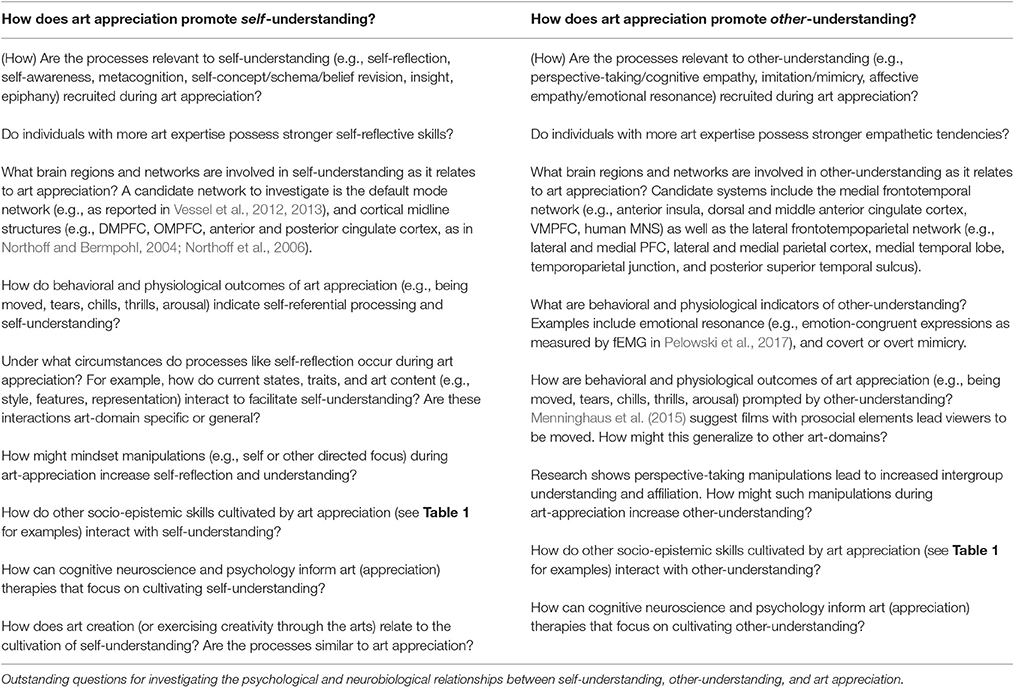
Table 2 . Open questions.
Further, this kind of “art as social practice” approach encourages scientists to view art engagement, generally, be it appreciating or creating, as a form of knowledge acquisition and production. Although we focused here on art appreciation, we believe our approach generalizes to art creation. Like art appreciation, art making involves practices which integrate embodied and “mental” activities so as to render the two inseparable. In fact, the philosophical and psychological research on creation and creativity recognizes and investigates such processes of creative practice associated with individual development more so than does the research on art appreciation.
Finally, we believe that focusing on the socio-epistemic skills cultivated through art engagement highlights the important role art plays in our lives, and the need to advocate for arts education programs. Through this kind of research program, we should come to better understand the arts as socially valuable. We suggest that empirical research can be used to show that engagement with art has social and personal value, rather than monetary or economic value, the cultivation of which is important to us as individuals, and as communities.
Author Contributions
All authors listed have made substantial, direct, intellectual contributions to the work, and approved it for publication.
Conflict of Interest Statement
The authors declare that the research was conducted in the absence of any commercial or financial relationships that could be construed as a potential conflict of interest.
Acknowledgments
The authors thank Anjan Chatterjee, Simon Penny, Dylan Sabo, Sarah Ostendorf, Ainsley LeSure, Santiago Mejia, and the two reviewers for their helpful feedback on earlier drafts of this argument.
1. ^ Recent arguments by influential researchers such as Pearce et al. (2016) suggest that neuroaesthetics is often concerned not with explaining art appreciation, but rather with understanding the aesthetic qualities of objects that include the arts. However, findings within the aesthetic sciences are often used to explain art appreciation, specifically (e.g., Pelowski et al., 2016 published a review article titled “Visualizing the Impact of Art: An Update and Comparison of Current Psychological Models of Art Experience” in which they do just that).
2. ^ While it may be that the kinds of social practices we are talking about relate to “artworld” institutions, practices are logically independent of and prior to institutions (see MacIntyre, 1999 for the relationship between practices and institutions).
3. ^ The kind of theoretical shift we recommend—toward understanding the arts as practices—is also related to Noë's (2015) . There, he develops an account of the arts as organized activities , insofar as they are: (1) natural or primitive, (2) “arenas for the exercise of attention, looking, listening, doing, undergoing” (p. 6), (3) structured and organized in time, (4) emergent, and which (5) have a function and (6) are a source of pleasure for those who engage in them (pp. 4–5). This approach is similar to the social practice account in that it is interested in the role of the arts in structuring a well-functioning or flourishing human life. It differs on the strength of the emphasis placed on the embodied nature of the arts, and in the expressed biological and “natural” interpretation it gives to these practices through the notion of “organizing” that it employs.
4. ^ See Stolnitz (1992) for discussion of the philosophical debate about aesthetic cognitivism, which is concerned with whether we can learn from or know through art appreciation.
5. ^ In doing so we do not claim that these are the only valuable socio-epistemic skills developed by the social practices of the arts or arts appreciation. For example, the “Seven C's” identified by Koelsch (2014) (social contact, social cognition, co-pathy, communication, coordination of actions, cooperation, social cohesion) is a taxonomy of what the author refers to as social functions of music. Similarly, other researchers including Panksepp (2009) highlight the social importance of music evolutionarily, particularly in its capacity to evoke social emotions.
6. ^ Another hypothesis about this focus on moral knowledge may come from the overlap in moral and hedonic processing, evidence for which may be found in Tsukiura and Cabeza (2010) .
7. ^ Kieran's argument draws on the rich discussion of moral understanding and art appreciation, especially that of Iris Murdoch and Martha Nussbaum. Iris Murdoch argued that engagement with and creation of art (especially painting and literature) hone moral perception by tuning the perceiver to the salient features of moral reality; the arts make one's moral perception more discriminating and discerning. That is to say, engagement with the arts develops one's ability to see the world as it truly is, making art “the most educational of all human activities.” (1970) In Love's Knowledge Nussbaum contends that moral imagination, necessary to good moral judgment (and seeing the world as it truly is), is similar to artistic imagination (1990). She explicitly links the type of fine-grained attention to detail and ability to “see” the world in morally complex and nuanced ways cultivated by arts appreciation with the development of self and other-understanding.
8. ^ There is some disagreement among philosophers about what cognitive process best characterizes this emotional-engagement, theorists variably refer to identification, empathy, sympathy, and mental simulation (see Giovannelli, 2005 ).
9. ^ Some researchers have gone so far as to speculate on the socio-cultural benefits of arts engagement in relation to other-understanding. In his book, The Better Angels of our Nature , Pinker (2012) speculates that a decrease in contemporary violence can be partially attributed to increased literary consumption, relying on the notion that perspective-taking is fundamental to reading literature and that it leads to increased empathy and other-understanding.
10. ^ We gloss over here some of the nuances that distinguish each of these terms. For instance, theory of mind is most often discussed in a developmental context, in contrast to cognitive perspective-taking and cognitive empathy. However, for the most part, they refer to the same/a very similar process.
11. ^ Heyes (2001) provides an analysis of theories and evidence describing the relationship between imitation, theory of mind, and social cognition. Heyes points out “although it is plausible that the experience of imitating and being imitated contributes to the development of theory of mind, there is not currently a well-supported theory specifying the nature of the contribution” (p. 260).
12. ^ Additionally, Singer et al. (2006) demonstrated that the proposed neural networks subserving empathy indeed represent “true” empathizing with another person, rather than just imagining one's own emotional experience. They first engaged participants in a game in which confederates played either fairly or unfairly. They then showed the same participants videos of their fair and unfair partners experiencing pain, while simultaneously measuring participants neural activity. Interestingly, all participants empathized with fair players, but only female participants empathized with the pain felt by unfair players experienced. In contrast, males seemed to experience more joy (evidenced by activation of reward circuitry), indicating their seeming desire for revenge against unfair players.
13. ^ Philip Sidney wrote a sonnet about just this point in the 1580s: http://www.bartleby.com/358/46.html
Averill, J. B., and Clements, P. T. (2007). Patterns of knowing as a foundation for action-sensitive pedagogy. Qual. Health Res. 17, 386–399. doi: 10.1177/1049732306298250
PubMed Abstract | CrossRef Full Text | Google Scholar
Baltes, F. R., and Miu, A. C. (2014). Emotions during live music performance: links with individual differences in empathy, visual imagery, and mood. Psychomusicol. Music Mind Brain 24:58. doi: 10.1037/pmu0000030
CrossRef Full Text | Google Scholar
Baron-Cohen, S., Wheelwright, S., Hill, J., Raste, Y., and Plumb, I. (2001). The “Reading the Mind in the Eyes” test revised version: a study with normal adults, and adults with Asperger syndrome or high-functioning autism. J. Child Psychol. Psychiatry 42, 241–251. doi: 10.1111/1469-7610.00715
Batson, C. D. (2009). “These things called empathy: eight related but distinct phenomena,” in The Social Neuroscience of Empathy , eds J. Decety and W. Ickes (Cambridge, MA: MIT Press), 3–15.
Google Scholar
Battaglia, F., Lisanby, S. H., and Freedberg, D. (2011). Corticomotor excitability during observation and imagination of a work of art. Front. Hum. Neurosci. 5:79. doi: 10.3389/fnhum.2011.00079
Becker, H. S. (1982). Art Worlds . Berkeley, CA: University of California Press.
Berlyne, D. E. (1971). Aesthetics and Psychobiology , Vol. 336. New York, NY: Appleton-Century-Crofts.
Berragan, L. (1998). Nursing practice draws upon several different ways of knowing. J. Clin. Nurs. 7, 209–217. doi: 10.1046/j.1365-2702.1998.00146.x
Blair, R. J. R. (2005). Responding to the emotions of others: dissociating forms of empathy through the study of typical and psychiatric populations. Conscious. Cogn. 14, 698–718. doi: 10.1016/j.concog.2005.06.004
Blood, A. J., and Zatorre, R. J. (2001). Intensely pleasurable responses to music correlate with activity in brain regions implicated in reward and emotion. Proc. Natl. Acad. Sci. U.S.A. 98, 11818–11823. doi: 10.1073/pnas.191355898
Bloom, P. (2017). Against Empathy: The Case for Rational Compassion . New York, NY: Random House.
Bodenhausen, G. V., Todd, A. R., and Richeson, J. A. (2009). “Controlling prejudice and stereotyping: antecedents, mechanisms, and contexts,” in Handbook of Prejudice, Stereotyping, and Discrimination , ed T. D. Nelson (New York, NY: Psychology Press), 111–135.
Brady, D. W., Corbie-Smith, G., and Branch, W. T. (2002). “What's important to you?”: the use of narratives to promote self-reflection and to understand the experiences of medical residents. Ann. Intern. Med. 137, 220–223. doi: 10.7326/0003-4819-137-3-200208060-00025
Brattico, E. (2015). “From pleasure to liking and back: bottom-up and top-down neural routes to the aesthetic enjoyment of music,” in Art, Aesthetics, and the Brain , eds J. P. Huston, M. Nadal, F. Mora, L. F. Agnati, and C. J. Cela-Conde (New York, NY: Oxford University Press), 303–318.
Brown, K. W., and Ryan, R. M. (2003). The benefits of being present: Mindfulness and its role in psychological well-being. J. Pers. Soc. Psychol. 84:822. doi: 10.1037/0022-3514.84.4.822
Brown, S., and Dissanayake, E. (2009). “The arts are more than aesthetics: neuroaesthetics as narrow aesthetics,” in Neuroaesthetics , eds M. Skov and O. Vartanian (New York, NY: Routledge), 43–57.
Brown, S., Gao, X., Tisdelle, L., Eickhoff, S. B., and Liotti, M. (2011). Naturalizing aesthetics: brain areas for aesthetic appraisal across sensory modalities. Neuroimage 58, 250–258. doi: 10.1016/j.neuroimage.2011.06.012
Bullot, N. J., and Reber, R. (2013). The artful mind meets art history: toward a psycho-historical framework for the science of art appreciation. Behav. Brain Sci. 36, 123–137. doi: 10.1017/S0140525X12000489
Carr, L., Iacoboni, M., Dubeau, M. C., Mazziotta, J. C., and Lenzi, G. L. (2003). Neural mechanisms of empathy in humans: a relay from neural systems for imitation to limbic areas. Proc. Natl. Acad. Sci. U.S.A. 100, 5497–5502. doi: 10.1073/pnas.0935845100
Carroll, N. (1988). Art, practice, and narrative. Monist 71, 140–156. doi: 10.5840/monist198871212
Carroll, N. (1998). “Art, narrative, and moral understanding,” in Aesthetics and Ethics: Essays at the Intersection , ed J. Levinson (New York, NY: Cambridge University Press), 126–160. doi: 10.1017/CBO9780511663888.005
Carroll, N. (2012). Philosophy of Art: A Contemporary Introduction . New York, NY: Routledge.
Chatterjee, A. (2004). Prospects for a cognitive neuroscience of visual aesthetics. Bull. Psychol. Arts 4, 56–60.
Chatterjee, A., and Vartanian, O. (2014). Neuroaesthetics. Trends Cogn. Sci. 18, 370–375. doi: 10.1016/j.tics.2014.03.003
Cohen, T. (1993). High and low thinking about high and low art. J. Aesthet. Art Criticism 51, 151–156. doi: 10.2307/431380
Cuypers, K., Krokstad, S., Holmen, T. L., Knudtsen, M. S., Bygren, L. O., and Holmen, J. (2012). Patterns of receptive and creative cultural activities and their association with perceived health, anxiety, depression and satisfaction with life among adults: the HUNT study, Norway. J. Epidemiol. Commun. Health 66, 698–703. doi: 10.1136/jech.2010.113571
Danto, A. (1964). The artworld. J. Philos . 61, 571–584. doi: 10.2307/2022937
Davis, M. H. (1980). A multidimensional approach to individual differences in empathy. JSAS Catalog Select. Doc. Psychol. 10:85.
de Botton, A., and Armstrong, J. (2013). Art as Therapy . New York, NY: Phaidon Press.
Decety, J., and Cowell, J. M. (2015). Empathy, justice, and moral behavior. AJOB Neurosci. 6, 3–14. doi: 10.1080/21507740.2015.1047055
Decety, J., and Grèzes, J. (2006). The power of simulation: imagining one's own and other's behavior. Brain Res. 1079, 4–14. doi: 10.1016/j.brainres.2005.12.115
De Vignemont, F., and Singer, T. (2006). The empathic brain: how, when and why?. Trends Cogn. Sci. 10, 435–441. doi: 10.1016/j.tics.2006.08.008
Dickie, G. (1974). Art and the Aesthetic: An Institutional Analysis . Ithaca, NY: Cornell University Press.
Di Dio, C., and Gallese, V. (2009). Neuroaesthetics: a review. Curr. Opin. Neurobiol. 19, 682–687. doi: 10.1016/j.conb.2009.09.001
Dissanayake, E. (1990). What Is Art For? Seattle, WA: University of Washington Press.
PubMed Abstract | Google Scholar
Eisenberg, N., and Fabes, R. A. (1990). Empathy: conceptualization, measurement, and relation to prosocial behavior. Motiv. Emot. 14, 131–149. doi: 10.1007/BF00991640
Eskine, K. J., Kacinik, N. A., and Prinz, J. J. (2012). Stirring images: Fear, not happiness or arousal, makes art more sublime. Emotion 12:1071. doi: 10.1037/a0027200
Freedberg, D., and Gallese, V. (2007). Motion, emotion and empathy in esthetic experience. Trends Cogn. Sci. 11, 197–203. doi: 10.1016/j.tics.2007.02.003
Fukui, H., and Toyoshima, K. (2014). Chill-inducing music enhances altruism in humans. Front. Psychol. 5:1215. doi: 10.3389/fpsyg.2014.01215
Gallese, V., Fadiga, L., Fogassi, L., and Rizzolatti, G. (1996). Action recognition in the premotor cortex. Brain 119, 593–609. doi: 10.1093/brain/119.2.593
Gell, A. (1998). Art and Agency: An Anthropological Theory . New York, NY: Clarendon Press.
Gernot, G., Pelowski, M., and Leder, H. (2017). Empathy, Einfühlung, and aesthetic experience: the effect of emotion contagion on appreciation of representational and abstract art using fEMG and SCR. Cogn. Process. doi: 10.1007/s10339-017-0800-2. [Epub ahead of print].
PubMed Abstract | CrossRef Full Text
Gertler, B. (2015). Self-knowledge. The Stanford Encyclopedia of Philosophy . ed. E. N. Zalta. Available online at: https://plato.stanford.edu/archives/sum2015/entries/self-knowledge
Giovannelli, A. (2005). In sympathy with narrative characters. J. Aesthetics Art Criticism 67, 83–95. doi: 10.1111/j.1540-6245.2008.01337.x
Goldie, P. (2008). Virtues in art and human well-being. Aristotelian Soc. Suppl. Vol. 82, 179–195. doi: 10.1111/j.1467-8349.2008.00168.x
CrossRef Full Text
Graham, D. J., and Field, D. J. (2008). Variations in intensity statistics for representational and abstract art, and for art from the Eastern and Western hemispheres. Perception 37, 1341–1352. doi: 10.1068/p5971
Hanich, J., Wagner, V., Shah, M., Jacobsen, T., and Menninghaus, W. (2014). Why we like to watch sad films: the pleasure of being moved in aesthetic experiences. Psychol. Aesthet. Creativity Arts 8:130. doi: 10.1037/a0035690
Hare, R. D. (1991). The Hare Psychopathy Checklist-Revised . Toronto, ON: Multi-Health Systems.
Harrington, A. (2004). Art and Social Theory: Sociological Arguments in Aesthetics . New York, NY: Cambridge University Press.
Heyes, C. (2001). Causes and consequences of imitation. Trends Cogn. Sci. 5, 253–261. doi: 10.1016/S1364-6613(00)01661-2
Hsu, C. T., Conrad, M., and Jacobs, A. M. (2014). Fiction feelings in Harry Potter: haemodynamic response in the mid-cingulate cortex correlates with immersive reading experience. Neuroreport 25, 1356–1361. doi: 10.1097/WNR.0000000000000272
Ishizu, T., and Zeki, S. (2011). Toward a brain-based theory of beauty. PLoS ONE 6:e21852. doi: 10.1371/journal.pone.0021852
Jacobsen, T., Schubotz, R. I., Höfel, L., and Cramon, D. Y. V. (2006). Brain correlates of aesthetic judgment of beauty. Neuroimage 29, 276–285. doi: 10.1016/j.neuroimage.2005.07.010
Johnson, D. R. (2012). Transportation into a story increases empathy, prosocial behavior, and perceptual bias toward fearful expressions. Pers. Individ. Dif. 52, 150–155. doi: 10.1016/j.paid.2011.10.005
Kawabata, H., and Zeki, S. (2004). Neural correlates of beauty. J. Neurophysiol. 91, 1699–1705. doi: 10.1152/jn.00696.2003
Kelm, Z., Womer, J., Walter, J. K., and Feudtner, C. (2014). Interventions to cultivate physician empathy: a systematic review. BMC Med. Educ. 14:219. doi: 10.1186/1472-6920-14-219
Kidd, D. C., and Castano, E. (2013). Reading literary fiction improves theory of mind. Science 342, 377–380. doi: 10.1126/science.1239918
Kieran, M. (1996). Art, imagination, and the cultivation of morals. J. Aesthet. Art Criticism 54, 337–351. doi: 10.2307/431916
Kieran, M. (2012). For love of art: artistic values and appreciative virtues. R. Inst. Philos. Suppl. 71, 13–31. doi: 10.1017/S1358246112000197
Koelsch, S. (2014). Brain correlates of music-evoked emotion. Nat. Rev. Neurosci. 15, 170–180. doi: 10.1038/nrn3666
Konecni, V. J., Wanic, R. A., and Brown, A. (2007). Emotional and aesthetic antecedents and consequences of music-induced thrills. Am. J. Psychol. 120, 619–643. doi: 10.2307/20445428
Koopman, E. M. E., and Hakemulder, F. (2015). Effects of literature on empathy and self-reflection: a theoretical-empirical framework. J. Literary Theory 9, 79–111. doi: 10.1515/jlt-2015-0005
Kotovych, M., Dixon, P., Bortolussi, M., and Holden, M. (2011). Textual determinants of a component of literary identification. Sci. Study Lit. 1, 260–291. doi: 10.1075/ssol.1.2.05kot
Lacey, S., Hagtvedt, H., Patrick, V. M., Anderson, A., Stilla, R., Deshpande, G., et al. (2011). Art for reward's sake: visual art recruits the ventral striatum. Neuroimage 55, 420–433. doi: 10.1016/j.neuroimage.2010.11.027
Lasher, M. D., Carroll, J. M., and Bever, T. G. (1983). The cognitive basis of aesthetic experience. Leonardo 16, 196–199. doi: 10.2307/1574913
Lawrence, E. J., Shaw, P., Baker, D., Baron-Cohen, S., and David, A. S. (2004). Measuring empathy: reliability and validity of the empathy quotient. Psychol. Med. 34, 911–920. doi: 10.1017/S0033291703001624
Leder, H., Bär, S., and Topolinski, S. (2012). Covert painting simulations influence aesthetic appreciation of artworks. Psychol. Sci. 23, 1479–1481. doi: 10.1177/0956797612452866
Leder, H., Belke, B., Oeberst, A., and Augustin, D. (2004). A model of aesthetic appreciation and aesthetic judgments. Brit. J. Psychol. 95, 489–508. doi: 10.1348/0007126042369811
Levinson, J. (1979). Defining art historically. Brit. J. Aesthetics 19, 232–250. doi: 10.1093/bjaesthetics/19.3.232
Lieberman, M. D. (2007). Social cognitive neuroscience: a review of core processes. Annu. Rev. Psychol. 58, 259–289. doi: 10.1146/annurev.psych.58.110405.085654
Lopes, D. M. (2005). Sight and Sensibility: Evaluating Pictures . New York, NY: Oxford University Press.
MacIntyre, A. (1984). After Virtue: A Study in Moral Theory, 2nd Edn . Notre Dame, IN: University of Notre Dame Press.
MacIntyre, A. (1999). Social structures and their threats to moral agency. Philosophy 74, 311–329. doi: 10.1017/S0031819199000431
Mar, R. A., Oatley, K., Hirsh, J., dela Paz, J., and Peterson, J. B. (2006). Bookworms versus nerds: exposure to fiction versus non-fiction, divergent associations with social ability, and the simulation of fictional social worlds. J. Res. Pers. 40, 694–712. doi: 10.1016/j.jrp.2005.08.002
Martin, M. W. (1985). “Introduction,” in Self-deception and Self-understanding: New Essays in Philosophy and Psychology , ed M. W. Martin (Lawrence, KS: University of Kansas Press), 30–34.
McManus, I. C. (1980). The aesthetics of simple figures. Brit. J. Psychol. 71, 505–524. doi: 10.1111/j.2044-8295.1980.tb01763.x
Menninghaus, W., Wagner, V., Hanich, J., Wassiliwizky, E., Jacobsen, T., and Koelsch, S. (2017). The distancing–embracing model of the enjoyment of negative emotions in art reception. Behav. Brain Sci. doi: 10.1017/S0140525X17000309. [Epub ahead of print].
Menninghaus, W., Wagner, V., Hanich, J., Wassiliwizky, E., Kuehnast, M., and Jacobsen, T. (2015). Towards a psychological construct of being moved. PLoS ONE 10:e0128451. doi: 10.1371/journal.pone.0128451
Morrison, I., Lloyd, D., Di Pellegrino, G., and Roberts, N. (2004). Vicarious responses to pain in anterior cingulate cortex: Is empathy a multisensory issue?. Cogn. Affect. Behav. Neurosci. 4, 270–278. doi: 10.3758/CABN.4.2.270
Murdoch, I. (1970). The Sovereignty of Good . New York, NY: Routledge.
Nadal, M., Flexas, A., Gálvez, Á., and Cela-Conde, C. J. (2012). Neuroaesthetics: themes from the past, current issues, and challenges for the future. Rendiconti Lincei 23, 247–258. doi: 10.1007/s12210-012-0185-1
Noë, A. (2015). Strange Tools: Art and Human Nature . New York, NY: Hill and Wang.
Northoff, G., and Bermpohl, F. (2004). Cortical midline structures and the self. Trends Cogn. Sci. 8, 102–107. doi: 10.1016/j.tics.2004.01.004
Northoff, G., Heinzel, A., De Greck, M., Bermpohl, F., Dobrowolny, H., and Panksepp, J. (2006). Self-referential processing in our brain—a meta-analysis of imaging studies on the self. Neuroimage 31, 440–457. doi: 10.1016/j.neuroimage.2005.12.002
Novack, D., Suchman, A. L., Clark, W., Epstein, R. M., Najberg, E., Kaplan, C., et al. (1997). Calibrating the physician: personal awareness and effective patient care. J. Am. Med. Assoc. 278, 502–509. doi: 10.1001/jama.1997.03550060078040
Nussbaum, M. (1990). Love's Knowledge . New York, NY: Oxford University Press.
Oatley, K. (1999). Why fiction may be twice as true as fact: fiction as cognitive and emotional simulation. Rev. Gen. Psychol. 3:101. doi: 10.1037/1089-2680.3.2.101
Oatley, K. (2016). Fiction: simulation of social worlds. Trends Cogn. Sci. 20, 618–628. doi: 10.1016/j.tics.2016.06.002
Oliver, M. B., Kim, K., Hoewe, J., Chung, M. Y., Ash, E., Woolley, J. K., et al. (2015). Media-induced elevation as a means of enhancing feelings of intergroup connectedness. J. Social Issues 71, 106–122. doi: 10.1111/josi.12099
Panero, M. E., Weisberg, D. S., Black, J., Goldstein, T. R., Barnes, J. L., Brownell, H., et al. (2016). Does reading a single passage of literary fiction really improve theory of mind? An attempt at replication. J. Pers. Soc. Psychol. 111:e46. doi: 10.1037/pspa0000064
Panksepp, J. (2009). The emotional antecedents to the evolution of music and language. Musicae Scientiae 13(2 Suppl.), 229–259. doi: 10.1177/1029864909013002111
Pearce, M. T., Zaidel, D. W., Vartanian, O., Skov, M., Leder, H., Chatterjee, A., et al. (2016). Neuroaesthetics: the cognitive neuroscience of aesthetic experience. Perspect. Psychol. Sci. 11, 265–279. doi: 10.1177/1745691615621274
Pelowski, M. (2015). Tears and transformation: feeling like crying as an indicator of insightful or “aesthetic” experience with art. Front. Psychol. 6:1006. doi: 10.3389/fpsyg.2015.01006
Pelowski, M., and Akiba, F. (2011). A model of art perception, evaluation and emotion in transformative aesthetic experience. New Ideas Psychol. 29, 80–97. doi: 10.1016/j.newideapsych.2010.04.001
Pelowski, M., Markey, P. S., Forster, M., Gerger, G., and Leder, H. (2017). Move me, astonish me… delight my eyes and brain: the Vienna Integrated Model of top–down and bottom–up processes in Art Perception (VIMAP) and corresponding affective, evaluative, and neurophysiological correlates. Phys. Life Rev . 21, 80–125. doi: 10.1016/j.plrev.2017.02.003
Pelowski, M., Markey, P. S., Lauring, J. O., and Leder, H. (2016). Visualizing the impact of art: an update and comparison of current psychological models of art experience. Front. Hum. Neurosci. 10:160. doi: 10.3389/fnhum.2016.00160
Perry, M., Maffulli, N., Willson, S., and Morrissey, D. (2011). The effectiveness of arts-based interventions in medical education: a literature review. Med. Educ. 45, 141–148. doi: 10.1111/j.1365-2923.2010.03848.x
Pinker, S. (2012). The Better Angels of Our Nature: Why Violence Has Declined . New York, NY: Penguin Books.
Reber, R., Schwarz, N., and Winkielman, P. (2004). Processing fluency and aesthetic pleasure: is beauty in the perceiver's processing experience? Pers. Soc. Psychol. Rev. 8, 364–382. doi: 10.1207/s15327957pspr0804_3
Reniers, R. L., Corcoran, R., Drake, R., Shryane, N. M., and Völlm, B. A. (2011). The QCAE: a questionnaire of cognitive and affective empathy. J. Pers. Assess. 93, 84–95. doi: 10.1080/00223891.2010.528484
Rentfrow, P. J., and Gosling, S. D. (2003). The do re mi's of everyday life: the structure and personality correlates of music preferences. J. Pers. Soc. Psychol. 84:1236. doi: 10.1037/0022-3514.84.6.1236
Robinson, J. (2005). Deeper Than Reason: Emotion and Its Role in Literature, Music, and Art . New York, NY: Oxford University Press.
Rodenhauser, P., Strickland, M. A., and Gambala, C. T. (2004). Arts-related activities across US medical schools: a follow-up study. Teach. Learn. Med. 16, 233–239. doi: 10.1207/s15328015tlm1603_2
Rymarczyk, K., Zurawski, L., Jankowiak-Siuda, K., and Szatkowska, I. (2016). Emotional empathy and facial mimicry for static and dynamic facial expressions of fear and disgust. Front. Psychol. 7:1853. doi: 10.3389/fpsyg.2016.01853
Schloss, K. B., and Palmer, S. E. (2011). Aesthetic response to color combinations: preference, harmony, and similarity. Attent. Percept. Psychophys. 73, 551–571. doi: 10.3758/s13414-010-0027-0
Shamay-Tsoory, S. G., and Aharon-Peretz, J. (2007). Dissociable prefrontal networks for cognitive and affective theory of mind: a lesion study. Neuropsychologia 45, 3054–3067. doi: 10.1016/j.neuropsychologia.2007.05.021
Shapiro, J., Coulehan, J., Wear, D., and Montello, M. (2009). Medical humanities and their discontents: definitions, critiques, and implications. Acad. Med. 84, 192–198. doi: 10.1097/ACM.0b013e3181938bca
Sherman, A., Grabowecky, M., and Suzuki, S. (2015). In the working memory of the beholder: art appreciation is enhanced when visual complexity is compatible with working memory. J. Exp. Psychol. Hum. Percept. Perform. 41, 898–903. doi: 10.1037/a0039314
Shortess, G. K., Clarke, C. J., Richter, M. L., and Seay, M. (2000). Abstract or realistic? Prototypicality of paintings. Visual Arts Res. 26, 70–79.
Silvia, P. J. (2006). Artistic training and interest in visual art: Applying the appraisal model of aesthetic emotions. Empirical Studies Arts 24, 139–161. doi: 10.2190/DX8K-6WEA-6WPA-FM84
Singer, T., Seymour, B., O'doherty, J. P., Stephan, K. E., Dolan, R. J., and Frith, C. D. (2006). Empathic neural responses are modulated by the perceived fairness of others. Nature 439, 466–469. doi: 10.1038/nature04271
Sloboda, J. A., O'Neill, S. A., and Ivaldi, A. (2001). Functions of music in everyday life: an exploratory study using the Experience Sampling Method. Musicae Scientiae 5, 9–32. doi: 10.1177/102986490100500102
Steinbeis, N., and Koelsch, S. (2009). Understanding the intentions behind man-made products elicits neural activity in areas dedicated to mental state attribution. Cereb. Cortex 19, 619–623. doi: 10.1093/cercor/bhn110
Stephan, W. G., and Finlay, K. (1999). The role of empathy in improving intergroup relations. J. Soc. Issues 55, 729–743. doi: 10.1111/0022-4537.00144
Stolnitz, J. (1992). On the cognitive triviality of the arts. Brit. J. Aesthetics 32, 191–200. doi: 10.1093/bjaesthetics/32.3.191
Sze, J. A., Gyurak, A., Goodkind, M. S., and Levenson, R. W. (2012). Greater emotional empathy and prosocial behavior in late life. Emotion 12:1129. doi: 10.1037/a0025011
Taylor, R. P., Micolich, A. P., and Jonas, D. (1999). Fractal analysis of Pollock's drip paintings. Nature 399:422. doi: 10.1038/20833
Tolstoy, L. (1899). “What is art?” in What is Art and Essays on Art , eds L. Maude and A. Maude (New York, NY: Crowell).
Tsukiura, T., and Cabeza, R. (2010). Shared brain activity for aesthetic and moral judgments: implications for the Beauty-is-Good stereotype. Soc. Cogn. Affect. Neurosci. 6, 138–148. doi: 10.1093/scan/nsq025
Umilta, M. A., Berchio, C., Sestito, M., Freedberg, D., and Gallese, V. (2012). Abstract art and cortical motor activation: an EEG study. Front. Hum. Neurosci. 6:311. doi: 10.3389/fnhum.2012.00311
Vartanian, O., and Goel, V. (2004). Neuroanatomical correlates of aesthetic preference for paintings. Neuroreport 15, 893–897. doi: 10.1097/00001756-200404090-00032
Vartanian, O., and Skov, M. (2014). Neural correlates of viewing paintings: evidence from a quantitative meta-analysis of functional magnetic resonance imaging data. Brain Cogn. 87, 52–56. doi: 10.1016/j.bandc.2014.03.004
Vessel, E. A., Starr, G. G., and Rubin, N. (2012). The brain on art: intense aesthetic experience activates the default mode network. Front. Hum. Neurosci. 6:66. doi: 10.3389/fnhum.2012.00066
Vessel, E. A., Starr, G. G., and Rubin, N. (2013). Art reaches within: aesthetic experience, the self and the default mode network. Front. Neurosci. 7:258. doi: 10.3389/fnins.2013.00258
Wang, C. S., Kenneth, T., Ku, G., and Galinsky, A. D. (2014). Perspective-taking increases willingness to engage in intergroup contact. PLoS ONE 9:e85681. doi: 10.1371/journal.pone.0085681
Wassiliwizky, E., Jacobsen, T., Heinrich, J., Schneiderbauer, M., and Menninghaus, W. (2017a). Tears falling on goosebumps: Co-occurrence of emotional lacrimation and emotional piloerection indicates a psychophysiological climax in emotional arousal. Front. Psychol. 8:41. doi: 10.3389/fpsyg.2017.00041
Wassiliwizky, E., Koelsch, S., Wagner, V., Jacobsen, T., and Menninghaus, W. (2017b). The emotional power of poetry: neural circuitry, psychophysiology and compositional principles. Soc. Cogn. Affect. Neurosci . doi: 10.1093/scan/nsx069. [Epub ahead of print].
Wassiliwizky, E., Wagner, V., Jacobsen, T., and Menninghaus, W. (2015). Art-elicited chills indicate states of being moved. Psychol. Aesthet. Creat. Arts 9:405. doi: 10.1037/aca0000023
Webster, D. M., and Kruglanski, A. W. (1994). Individual differences in need for cognitive closure. J. Pers. Soc. Psychol. 67:1049. doi: 10.1037/0022-3514.67.6.1049
Wicker, B., Keysers, C., Plailly, J., Royet, J. P., Gallese, V., and Rizzolatti, G. (2003). Both of us disgusted in my insula: the common neural basis of seeing and feeling disgust. Neuron 40, 655–664. doi: 10.1016/S0896-6273(03)00679-2
Winston, A. S., and Cupchik, G. C. (1992). The evaluation of high art and popular art by naive and experienced viewers. Visual Arts Res. 18, 1–14.
Winterson, J. (2006). Liza Lou . Available online at: http://www.jeanettewinterson.com/journalism/liza-lou/
Wöllner, C. (2012). Is empathy related to the perception of emotional expression in music? A multimodal time-series analysis. Psychol. Aesthet. Creat. Arts 6:214. doi: 10.1037/a0027392
Wolterstorff, N. (2015). Art Rethought: The Social Practices of Art . New York, NY: Oxford University Press.
Yang, K. T., and Yang, J. H. (2013). A study of the effect of a visual arts-based program on the scores of Jefferson scale for physician empathy. BMC Med. Educ. 13:142. doi: 10.1186/1472-6920-13-142
Keywords: empirical aesthetics, neuroaesthetics, art appreciation, art as social practice, self-understanding, other-understanding
Citation: Sherman A and Morrissey C (2017) What Is Art Good For? The Socio-Epistemic Value of Art. Front. Hum. Neurosci . 11:411. doi: 10.3389/fnhum.2017.00411
Received: 20 May 2017; Accepted: 31 July 2017; Published: 28 August 2017.
Reviewed by:
Copyright © 2017 Sherman and Morrissey. This is an open-access article distributed under the terms of the Creative Commons Attribution License (CC BY) . The use, distribution or reproduction in other forums is permitted, provided the original author(s) or licensor are credited and that the original publication in this journal is cited, in accordance with accepted academic practice. No use, distribution or reproduction is permitted which does not comply with these terms.
*Correspondence: Aleksandra Sherman, [email protected]
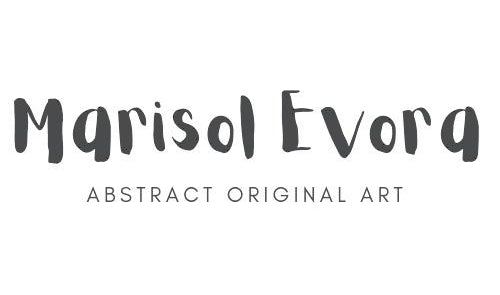
- / What Makes Contemporary Art Valuable: Insider Tips
What Makes Contemporary Art Valuable: Insider Tips

What makes contemporary art valuable?
Contemporary art is often the subject of fascination and confusion for many people. From a simple canvas painting to an abstract sculpture, it can be difficult to understand why these pieces of art can be sold for millions of dollars.
First, it's important to understand that art is subjective. What one person considers valuable, another may not. However, there are some general factors that can influence the value of contemporary art.
Reputation of the artist

One of the main factors that contribute to the value of contemporary art is the reputation of the artist . Have you ever heard of Banksy or Damien Hirst? These are just a couple of artists who have gained a reputation in the contemporary art world that has led to their artworks being worth millions.
Think about it - if an artist has a reputation for producing incredible works of art that challenge conventional thinking, it's only natural that their artworks will be highly sought after. After all, people want to own a piece of something that has been created by a talented and innovative artist.
A good reputation can also be built through an artist's consistency in producing high-quality works that are unique and engaging. When an artist has a style that is instantly recognizable and stands out from the crowd, it can lead to their artworks becoming highly collectible.
Another aspect of an artist's reputation is their presence in the art world. If an artist has had exhibitions in prestigious galleries, won awards or been featured in major publications, this can significantly increase the value of their artworks. The more visible an artist is in the art world, the more people will become aware of their work and be interested in owning a piece.
Of course, reputation isn't everything. There are many talented artists out there who may not have gained widespread recognition but are still producing incredible works of art. That being said, a strong reputation can certainly help an artist's career and contribute to the value of their artworks.
Now I share some practical tips for artists what they need to do to increase their reputation:
Network and collaborate with other artists - attending art events and exhibitions, connecting with other artists, and collaborating on projects can help you gain exposure and build relationships that can lead to new opportunities.
Develop a strong online presence - having a professional website and active social media accounts can help you showcase your work, connect with potential buyers and collectors, and establish yourself as a serious artist.
Submit your work to art competitions and awards - winning or being selected as a finalist for a prestigious art competition or award can help you gain recognition and increase your credibility as an artist.
Participate in residencies and art programs - applying for artist residencies or participating in art programs can help you gain experience, expand your network, and showcase your work to a wider audience.
Consistently produce high-quality work - perhaps the most important factor in building a strong reputation as an artist is consistently producing high-quality work. By putting in the time and effort to create work that is innovative, thought-provoking, and well-executed, you can establish yourself as a skilled and talented artist who is worth paying attention to.
Rarity of the artwork

Another factor that can influence the value of contemporary art is its rarity . Have you ever come across an artwork that is one of a kind or part of a limited edition? There's something special about owning something that is unique and rare, and that's exactly why rarity is a factor that can influence the value of contemporary art.
If an artwork is one of a kind, it becomes a truly unique and coveted item that only one person can own. This exclusivity makes it much more valuable than a piece that is widely available. Similarly, if an artwork is part of a limited edition, it still retains some of that exclusivity because only a limited number of people can own it. As a result, limited edition artworks can still command high prices.
Rarity can also be created by an artist intentionally limiting the number of artworks they produce. For example, an artist may choose to produce only a certain number of paintings in a particular style or using a particular technique. This intentional scarcity can increase the value of their artworks because they become even more rare and desirable.
Of course, rarity isn't the only factor that determines the value of contemporary art. The reputation of the artist, the materials used, and the historical significance of the artwork can all play a role as well. However, rarity is definitely something that collectors and art enthusiasts take into consideration when determining the value of a piece.
Tips for artists:
Create limited editions - by producing a limited number of prints, sculptures or paintings, you can increase the rarity of your work and create a sense of exclusivity that can drive up its value. For example, you might produce a limited edition of 25 prints, each signed and numbered by you, to create a sense of scarcity and exclusivity.
Offer one-of-a-kind pieces - creating unique, one-of-a-kind pieces can also increase the rarity of your work and its value. For example, you might create a sculpture from a rare and unusual material that cannot be replicated, or a painting with a one-of-a-kind composition or color scheme.
The materials used to create the artwork
Have you ever stopped to think about the materials that artists use to create their masterpieces? The materials used in contemporary art can actually play a big role in the value of the artwork. For example, if an artist creates a sculpture from expensive and rare materials like gold or marble, the piece can be much more valuable than a sculpture made from cheaper materials.
The reason for this is simple - expensive and rare materials are harder to come by, which means that the cost of creating an artwork using these materials can be much higher. As a result, artworks made from these materials can be more valuable because they represent a greater investment of time, skill, and resources.
In addition to the materials themselves, innovative techniques or materials can also increase the value of an artwork. For example, an artist may use cutting-edge technology or unusual materials to create a work of art that is truly unique and groundbreaking. This innovation can set an artwork apart from others and make it much more valuable.
In conclusion, the materials used in contemporary art can play a significant role in the value of an artwork. Expensive and rare materials, as well as innovative techniques and materials, can make a piece more valuable because they represent a greater investment of time, skill, and resources. So, the next time you come across an artwork, take a closer look at the materials used to create it - you never know, it may just be worth a small fortune!
Here are some practical tips for artists looking to increase the value of their work through the use of expensive and rare materials:
Experiment with different materials - try incorporating new and unusual materials into your work to make it stand out and increase its value. For example, you might experiment with materials like gold leaf, rare woods, or precious stones to create a unique and valuable piece.
Use materials in unexpected ways - think creatively about how you can use expensive or rare materials in ways that will make your work more unique and valuable. For example, you might use gold leaf to create intricate details on a painting or use rare woods to create a sculptural piece that showcases the natural beauty of the material.
Highlight the use of expensive materials in your marketing - when promoting your work, make sure to highlight the use of expensive or rare materials as a selling point. This can help potential buyers understand the value of your work and justify a higher price point.
For example, you might highlight the use of 24-karat gold leaf in a painting or the use of rare and exotic woods in a sculpture.
The historical significance
Did you know that the historical significance of a piece of contemporary art can also play a role in its value? It's true - artworks that have played a pivotal role in shaping the direction of contemporary art or that are associated with a significant moment in history can be highly sought after by collectors and art enthusiasts alike.
Take, for example, the iconic Campbell's Soup Cans by Andy Warhol. These paintings are highly valuable not only because of their artistic merit but also because they represent a significant moment in the history of pop art. By depicting a ubiquitous consumer product in such a bold and graphic way, Warhol challenged traditional notions of what art could be and helped pave the way for the pop art movement.
Another example is Picasso's Les Demoiselles d'Avignon, which is widely considered to be one of the most important paintings of the 20th century. This painting marked a major shift in the direction of modern art and is seen as a pivotal moment in the development of cubism.

Artworks that are associated with a particular cultural or political moment can also be highly valuable. For example, Frida Kahlo's self-portraits are not only valued for their artistic merit but also because they represent a powerful expression of identity and feminism in a time when women's voices were often marginalized.
In conclusion, the historical significance of a piece of contemporary art can play a significant role in its value. Artworks that have played a pivotal role in shaping the direction of contemporary art or that are associated with a significant moment in history can be highly sought after by collectors and art enthusiasts alike.
In high demand
Have you ever heard of the phrase "in high demand"?
Well, it's not just applicable to concert tickets or trendy sneakers - it's also a big factor in the value of contemporary art! If a certain artist or art style is super popular among collectors and galleries, the value of their artworks can shoot through the roof.
Think about it - when a certain artist starts to gain a lot of attention and praise for their work, collectors and galleries start to take notice. They want to own a piece of that artist's work before it gets too expensive or too hard to come by. And as more and more people want to own a piece of that artist's work, the value of each artwork can skyrocket.
It's like a snowball effect - the more in demand an artist or style is, the higher the prices go. And if you're lucky enough to own a piece from a popular artist or style, the value of your artwork can increase significantly over time.
Finally, the market demand for contemporary art can significantly influence its value.
If a particular artist or style is in high demand among collectors and galleries, the value of their works can skyrocket. This is why some contemporary art pieces sell for millions of dollars at auctions.
Here are some practical tips for artists looking to increase the value of their art through high demand:
Stay up to date with current trends - keep an eye on what's popular in the art world and try to incorporate those trends into your work. For example, if abstract expressionism is in high demand, consider experimenting with that style to increase the potential value of your work.
Build relationships with galleries and collectors - attend art shows and events to meet other artists, collectors, and gallery owners. By building relationships with these individuals, you may be able to increase the visibility of your work and increase demand.
Promote your work through social media and online platforms - social media and online marketplaces can help increase the visibility of your work and connect you with potential buyers from around the world. Consider building a strong online presence to help increase demand for your work.
Well, the final thought on this topic.
The value of contemporary art is determined by a combination of factors including the reputation of the artist, the rarity of the work, the materials used, the historical significance, and market demand. While some may view contemporary art as frivolous or overpriced, it's important to remember that art is subjective and can have different meanings and values for different people. Ultimately, the value of a work of art is determined by how much someone is willing to pay for it.
- Share on Facebook
- Share on Twitter
Leave a comment
- Abstract Art
- Art and Interior Design
- Art Business Strategies for Artists
- Art Marketing
- Art materials
- Art supplies
- Arte Contemporáneo
- Artist Interviews
- Artist Spotlight Series
- Artistas Exitosos
- artiste débutant
- Artistic Laughs
- Aspiring artist
- Back to school
- Compra de arte
- Consejos para artistas
- Contemporary Art Insights
- Estrategias para artistas
- fournitures artistiques
- fournitures artistiques pour artistes professionnels
- Gifts and Presents
- Marketing para Artistas
- matériaux artistiques
- Negocios del arte
- Personal Growth
- Professional artist
- Shabby Chic
- Stories Behind My Paintings
- Tribute to the Masters
- Vender arte online
- Ventas de Arte
- Wabi Sabi in Art and Interior

Wabi Sabi in Interior Design: Creating a Place for Self-Reflection and Tranquility

The Story Behind Abstract painting 'Hypnosis': A Colorful Journey of Joy and Freedom
Featured articles.

The Beauty of Abstract Art...
Many abstract artists have a classical education and excellent academic drawing skills - that is, they are able to draw...
Collections
Art on canvas, art on paper.

Artist Spotlight Series: Daniela Prokopetz's Artistic Voyage
Welcome to the brand new Artist Spotlight Series! In each post, you will discover the fascinating stories of different...

15 Common Causes of Art Block & How to Overcome Them
"My ideas are playing hide and seek - I'm still seeking." - Marisol Art block is like when...

Artist Spotlight Series: Natalie Dadamio - The Essence of Life and Art
Welcome to the brand new Artist Spotlight Series! In each post, you will discover the fascinating stories of different artists,...
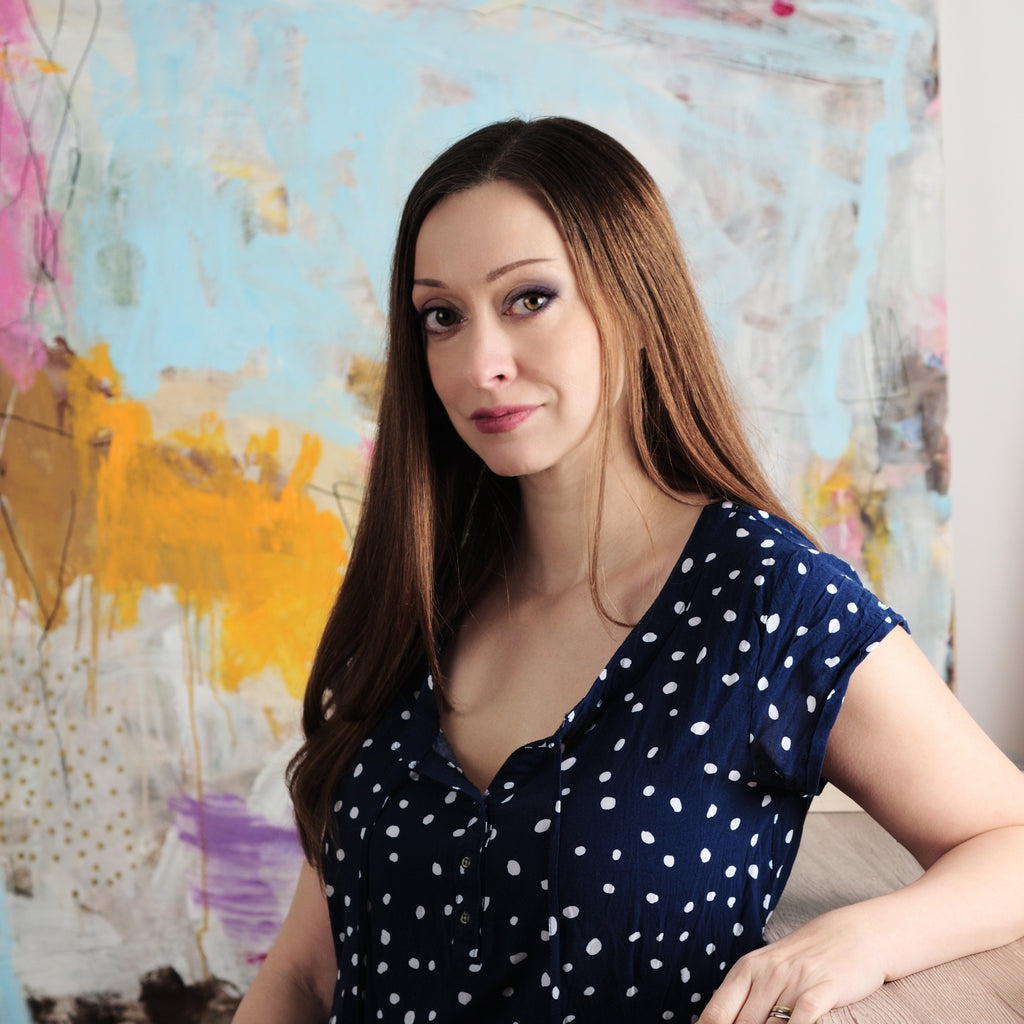
Subscribe to our newsletter
Promotions, new products and sales. Directly to your inbox.

Sign up and stay up to date
A space that is full of the good stuff—blog posts, resources, the latest collection releases, exclusive offers, updates and happenings in my art corner of the universe and so much more.

IMAGES
VIDEO
COMMENTS
In the art world, an artwork's value can be attributed to provenance. In other words, who has owned the painting in the past. For example, Mark Rothko 's White Center was owned by the Rockefeller family, one of America's most powerful dynasties. Rothko's masterpiece went from a value of less than $10,000 when David Rockefeller first ...
The value of creating. At its most basic level, the act of creating is rewarding in itself. Children draw for the joy of it before they can speak, and creating pictures, sculptures and writing is both a valuable means of communicating ideas and simply fun. Creating is instinctive in humans, for the pleasure of exercising creativity.
Today the value of a painting is often the result of something entirely different. Picasso could have painted on a napkin and it would have been incredibly valuable just because it was by Picasso—art is now an expression of the artist and materials often have little to do with the worth of the art. Additional resources.
It makes a significant difference whether the artist is undiscovered, emerging, or well-known. The value of an artwork is determined by the artist's previous exhibitions, sales history, and level of experience. In general, the higher the market price for an artist, the higher the demand for that artist. So hopefully, by now, you have a better ...
What made art valuable: then and now. by Dr. Steven Zucker and Dr. Beth Harris. For artists working in the West in the period before the modern era (before about 1800 or so), the process of selling art was different than it is now. In the Middle Ages and in the Renaissance works of art were commissioned, that is, they were ordered by a patron ...
The social value of art. Another relevant element of art value is societal meaning. Art indeed is a means of communication, as it passes ideas, values, feelings, concepts, which might be received differently by each observer but still vehiculate ideas concerning society and human condition. When producing art, an artist shares a story, a ...
This issue opens with an excerpt from Michael Findlay's new book, The Value of Art: Money, Power, Beauty. How the art world values art is important because the concept of "value" is at issue ...
The value of art is multifaceted and can be appreciated in a wide variety of ways that include critical, cultural, and historical viewpoints. Encompassing a huge variety of mediums, styles, and purposes, art is diverse and expressive, but the rules of what makes art valuable can be much easier to define, meaning that you have all the tools necessary to make a decision at auction that's ...
Art's value is its holistic value. We want to convey, with urgency, that art is a practice of life that has been undervalued through inaccurate stereotypes and narrow generalizations about its purpose. Like love, and faith, art is hydra-headed. It is not stagnant, it is understood through societal context and time.
The Value of Art. Philosophical discourse concerning the value of art is a discourse concerning what makes an artwork valuable qua its being an artwork.Whereas the concern of the critic is what makes the artwork a good artwork, the question for the aesthetician is why it is a good artwork. When we refer to a work's value qua art, we mean those elements of it that contribute to or detract ...
Fashion drives the contemporary art market, as does scarcity (but not too much). "Validation" is important too: association with a great collector (such as David Bowie), participation in a ...
Art is important to culture because it can bridge the gap between different racial groups, religious groups, dialects, and ethnicities. It can express common values, virtues, and morals that we can all understand and feel. Art allows us to ask important questions about life and society.
At its core, economics dictates that the price of a product hinges on two fundamental elements: desire and scarcity. The world of art adheres to this principle. If a piece is both rare and highly coveted, its value soars. Take, for instance, van Gogh's paintings. During his lifetime, he sold just one, yet today they command astronomical prices.
Scientists, humanists, and art lovers alike value art not just for its beauty, but also for its social and epistemic importance; that is, for its communicative nature, its capacity to increase one's self-knowledge and encourage personal growth, and its ability to challenge our schemas and preconceptions. However, empirical research tends to discount the importance of such social and epistemic ...
The Value of Art Philosophical discourse concerning the value of art is a discourse concerning what makes an artwork valuable qua its being an artwork. Whereas the concern of the critic is what makes the artwork a good artwork, the question for the aesthetician is why it is a good artwork. When we refer to ….
A changing picture. This is a market which has, over the last 25 years, seen a massive growth in size. According to art economist Dr Clare McAndrew, in a report published in 2012, about $27.2bn ...
It is the value of two people bidding against each other, because they really want the painting. The value of the works covered range from a "lowly" Rothko piece that sold for $72M, to a Picasso that had been whereabouts unknown for fifty years for $106.4M in 2010. Sooke strays from the focal point of the film - art and money - to shed some ...
The materials used in contemporary art can actually play a big role in the value of the artwork. For example, if an artist creates a sculpture from expensive and rare materials like gold or marble, the piece can be much more valuable than a sculpture made from cheaper materials. The reason for this is simple - expensive and rare materials are ...
The scale, visibility, and accessibility of these objects and images are further sources of information about their cultural significance. In the rest of this essay, we present a range of examples to consider the varied ways in which art makes society. We consider: (1) the ways art can frame a setting; (2) art as participation; (3) art as ...
The Definition of Art. The definition of art is controversial in contemporary philosophy. Whether art can be defined has also been a matter of controversy. The philosophical usefulness of a definition of art has also been debated. Contemporary definitions can be classified with respect to the dimensions of art they emphasize.
As New York Times art critic Roberta Smith pointed out, the hammer price for the Koons sculpture — the final bid amount — was actually $80 million. The $11.1 million on top of that was the ...
Art is what it is because it is a vessel by which human experiences, aspirations, defeats, triumphs, agonies, and epiphanies are recorded. Art reminds us of our intrinsic place in the world and any such piece - from a simple pencil drawing, to a vast mural - shows what we are as human. And that describes what art is and what it should be ...
Structure of the Art Essay and Its Features. The structure of the essay consists of three required elements: introduction, body, and conclusion. The absence of one of the article's composition elements is considered a mistake and taken into account in the assessment. It is challenging to write the introduction and conclusion.
I don't know that you can actually "rank" art, but you can declare what poem works, what really works. You can notice and signal to the world which poem does something.